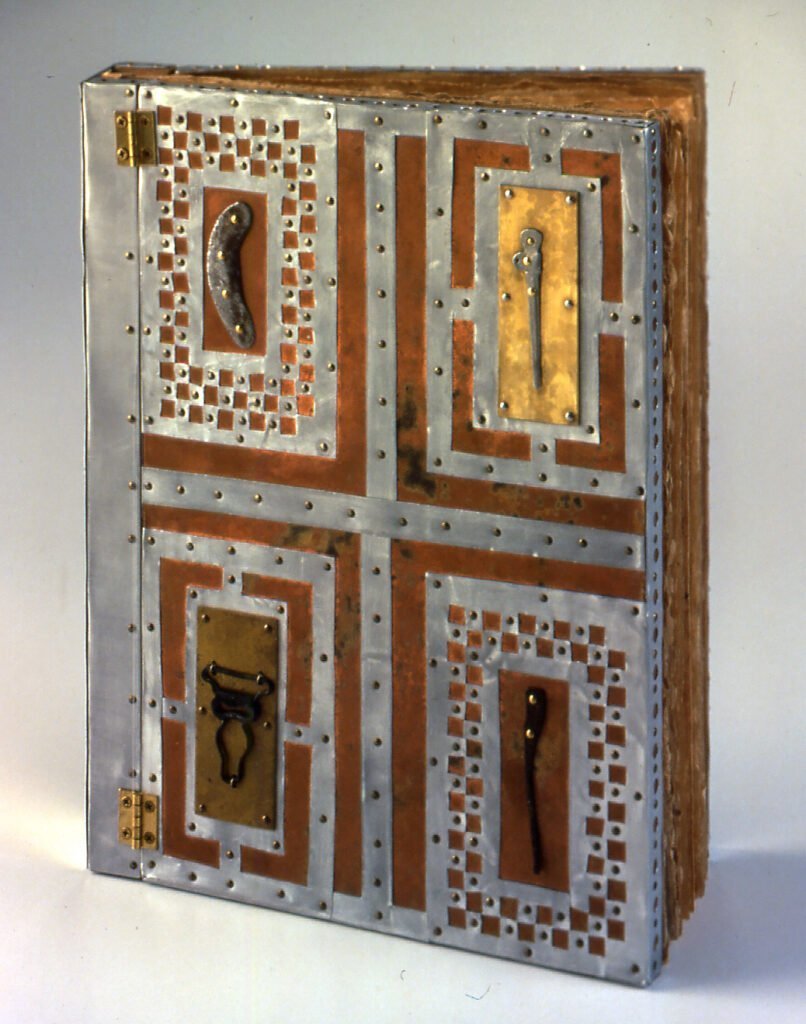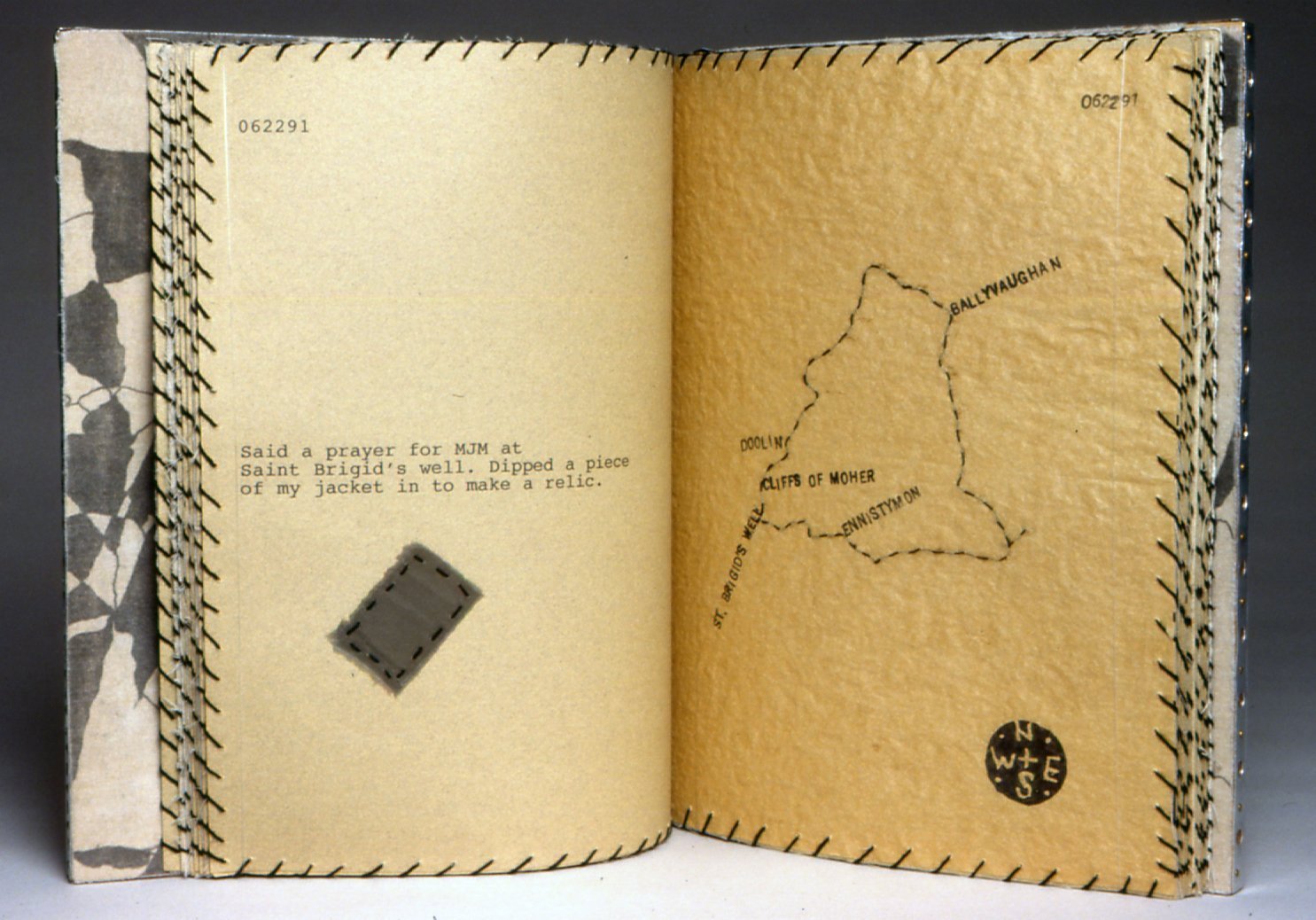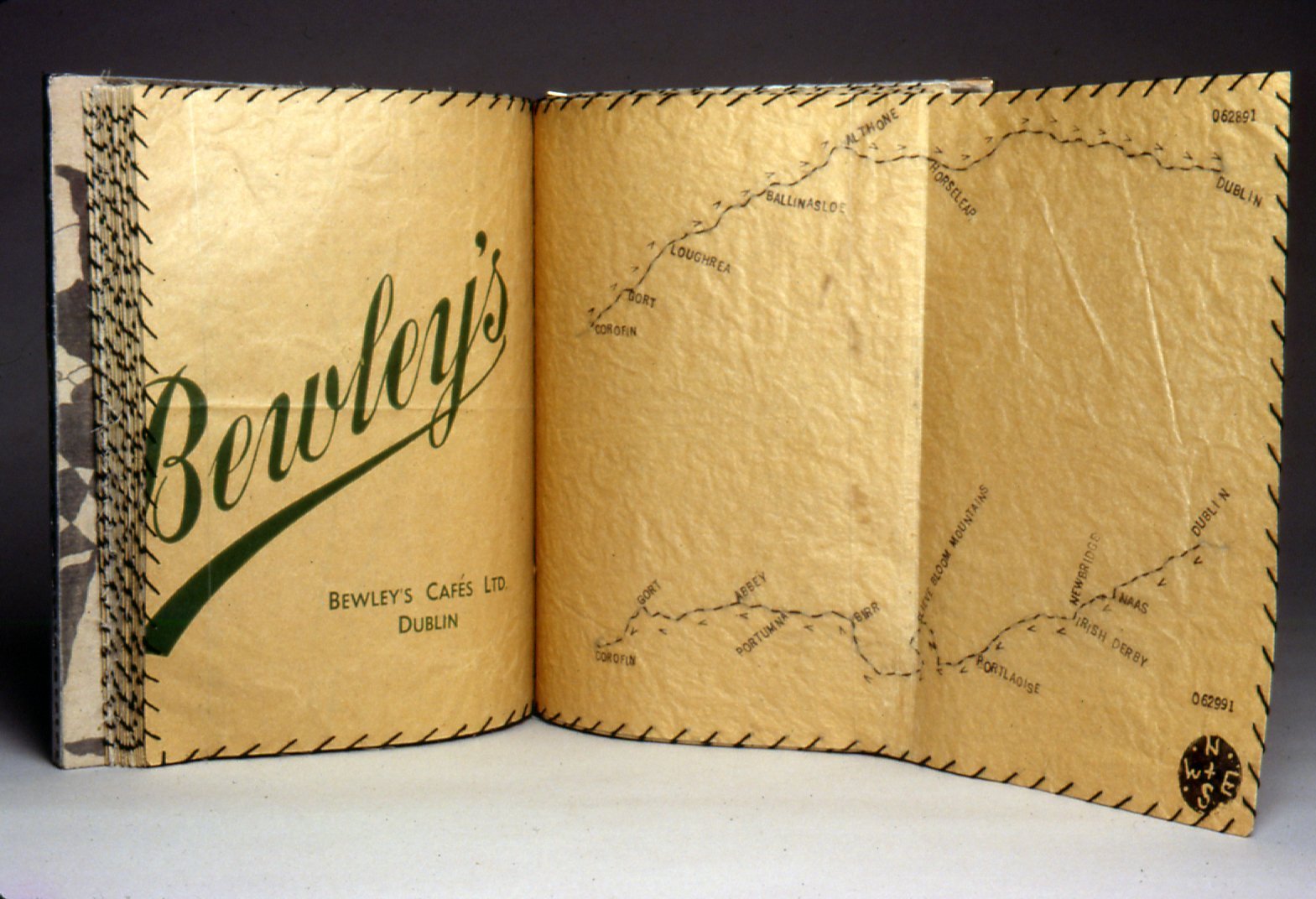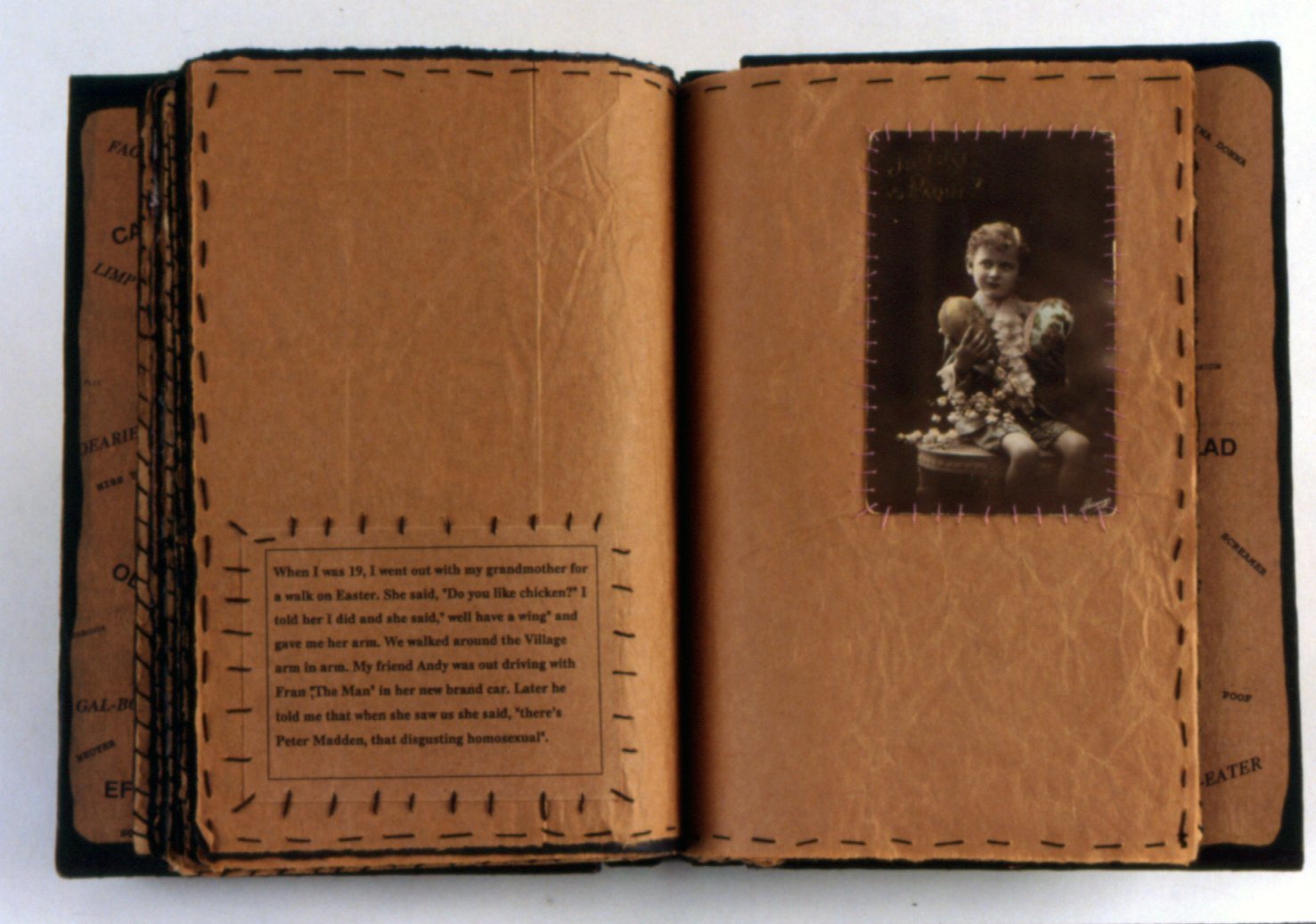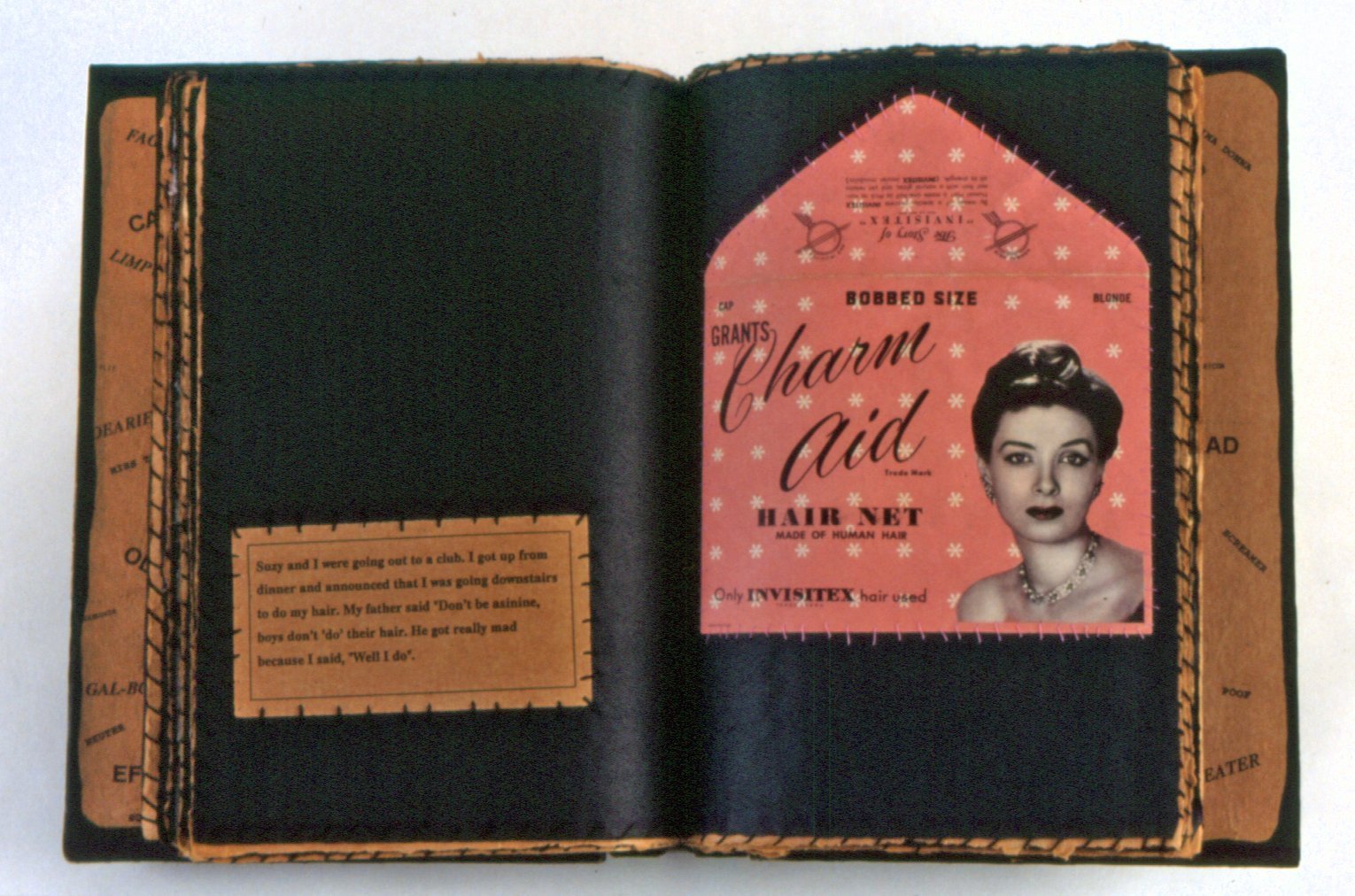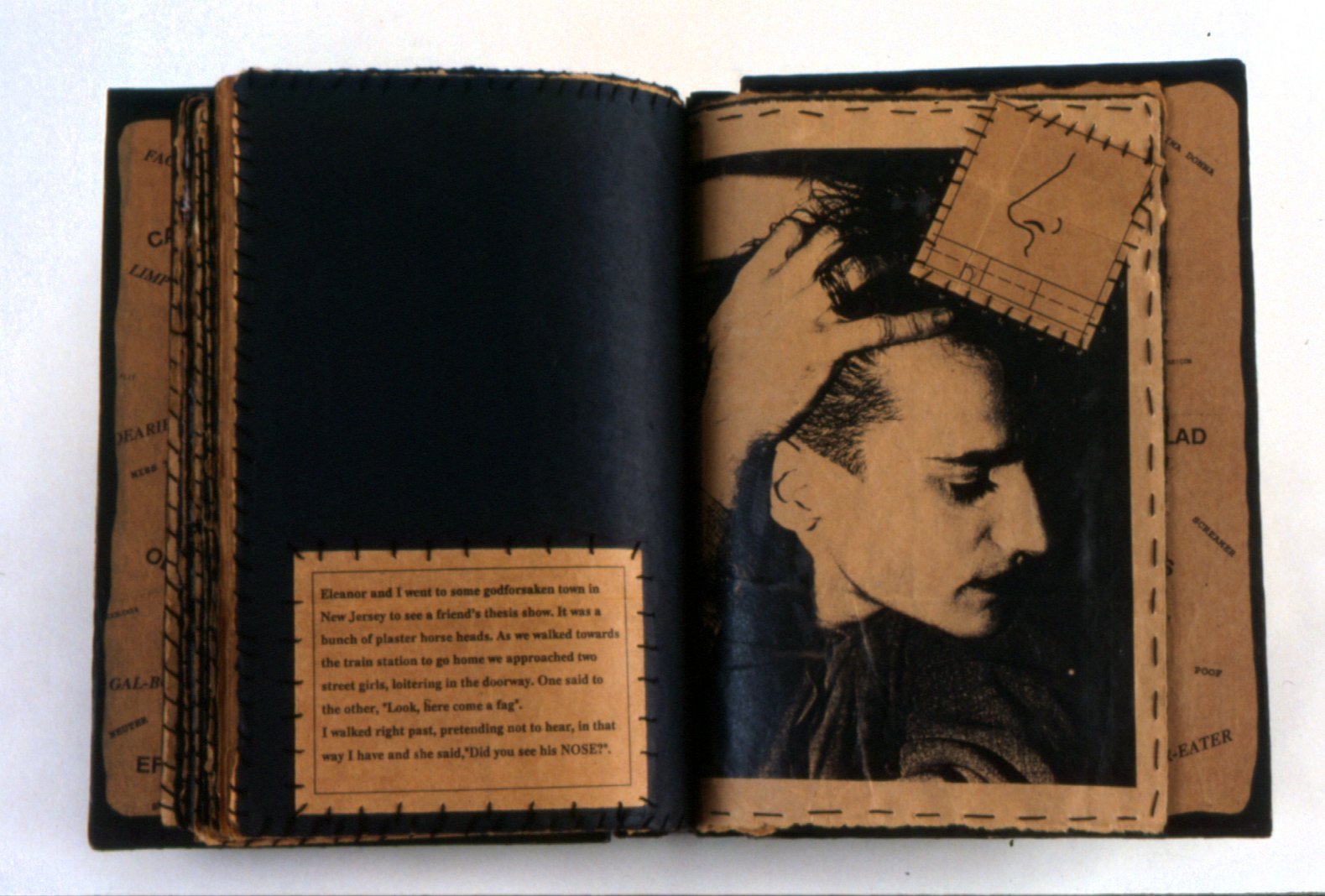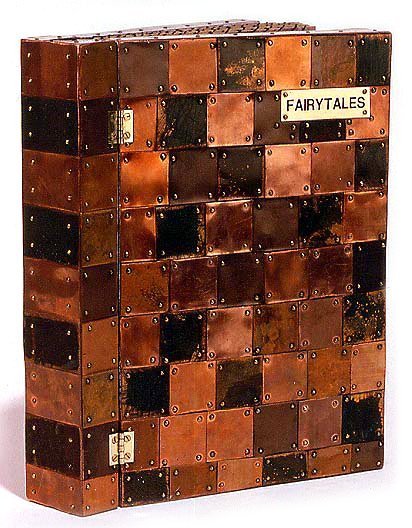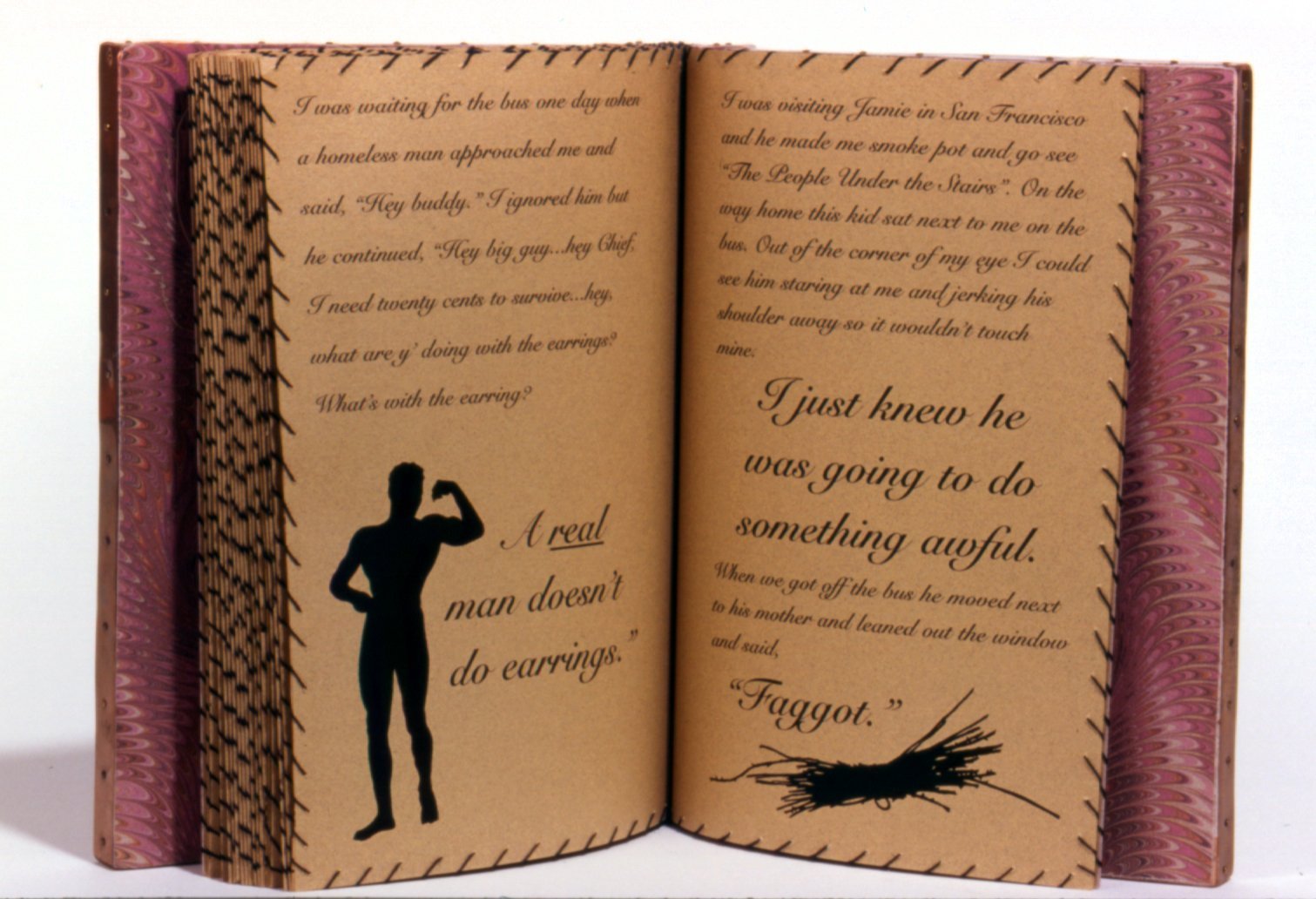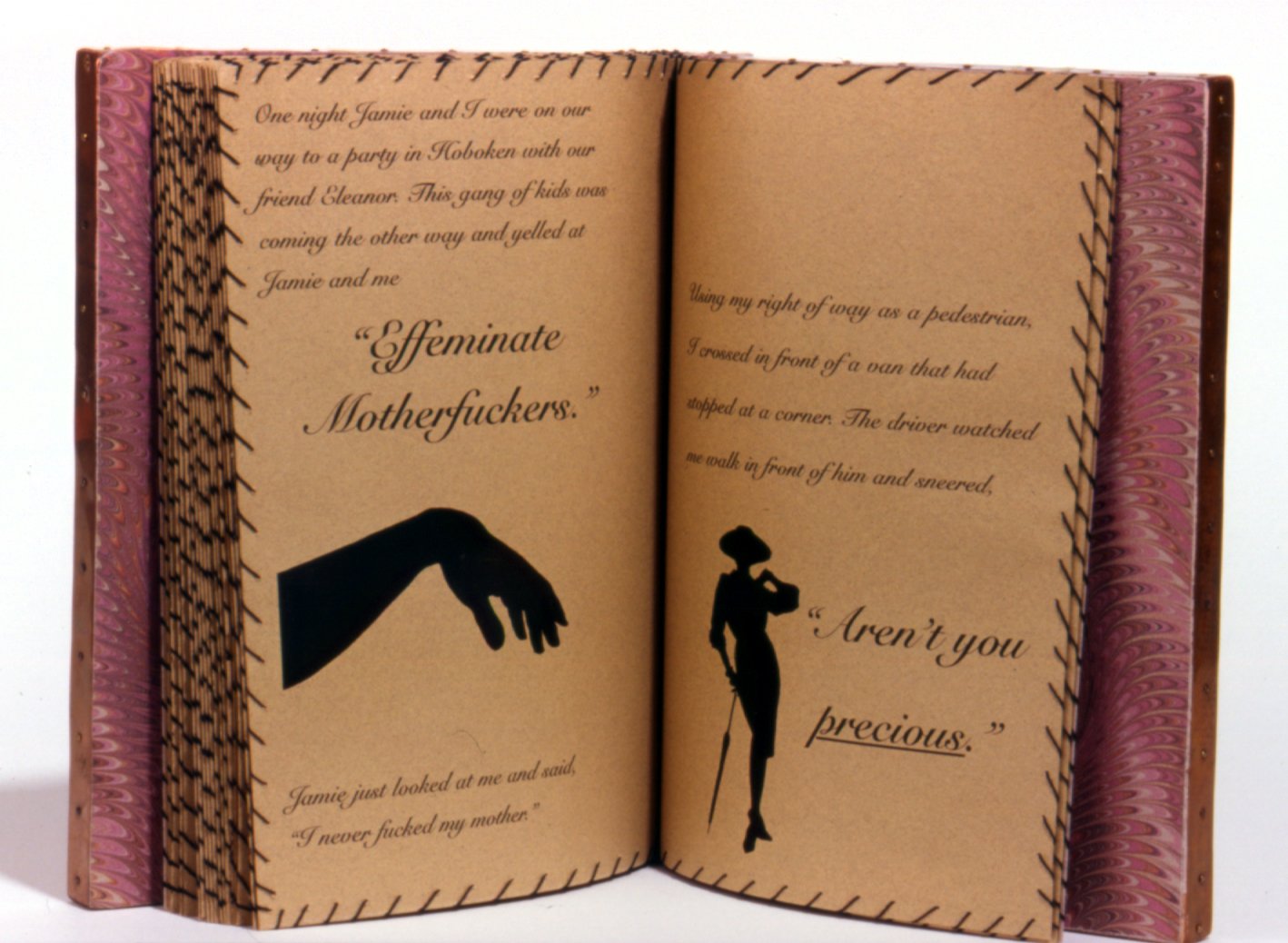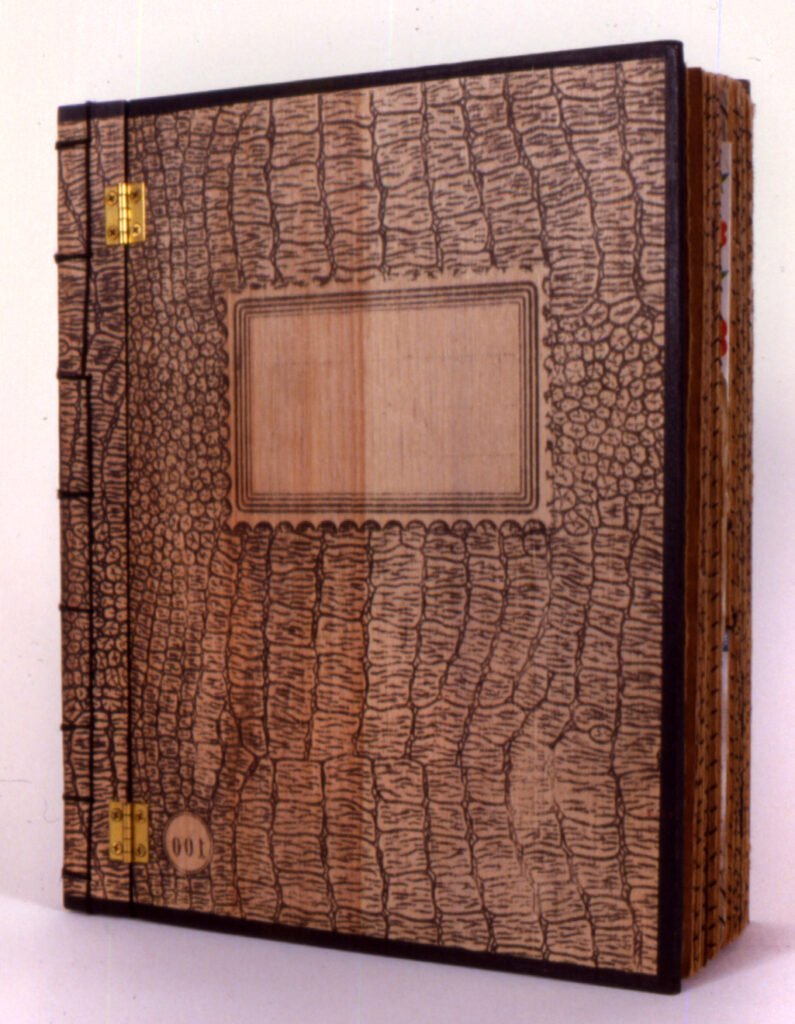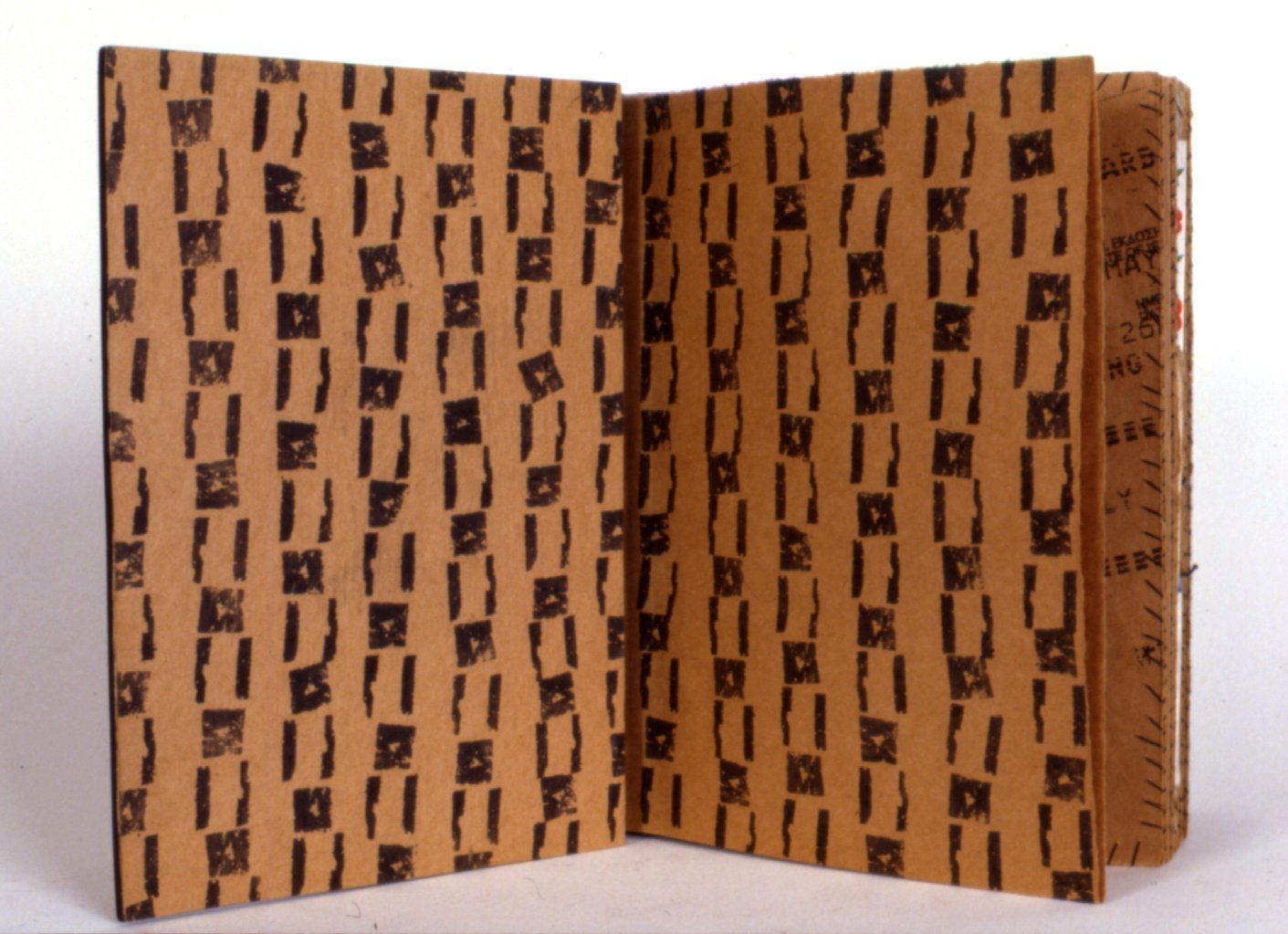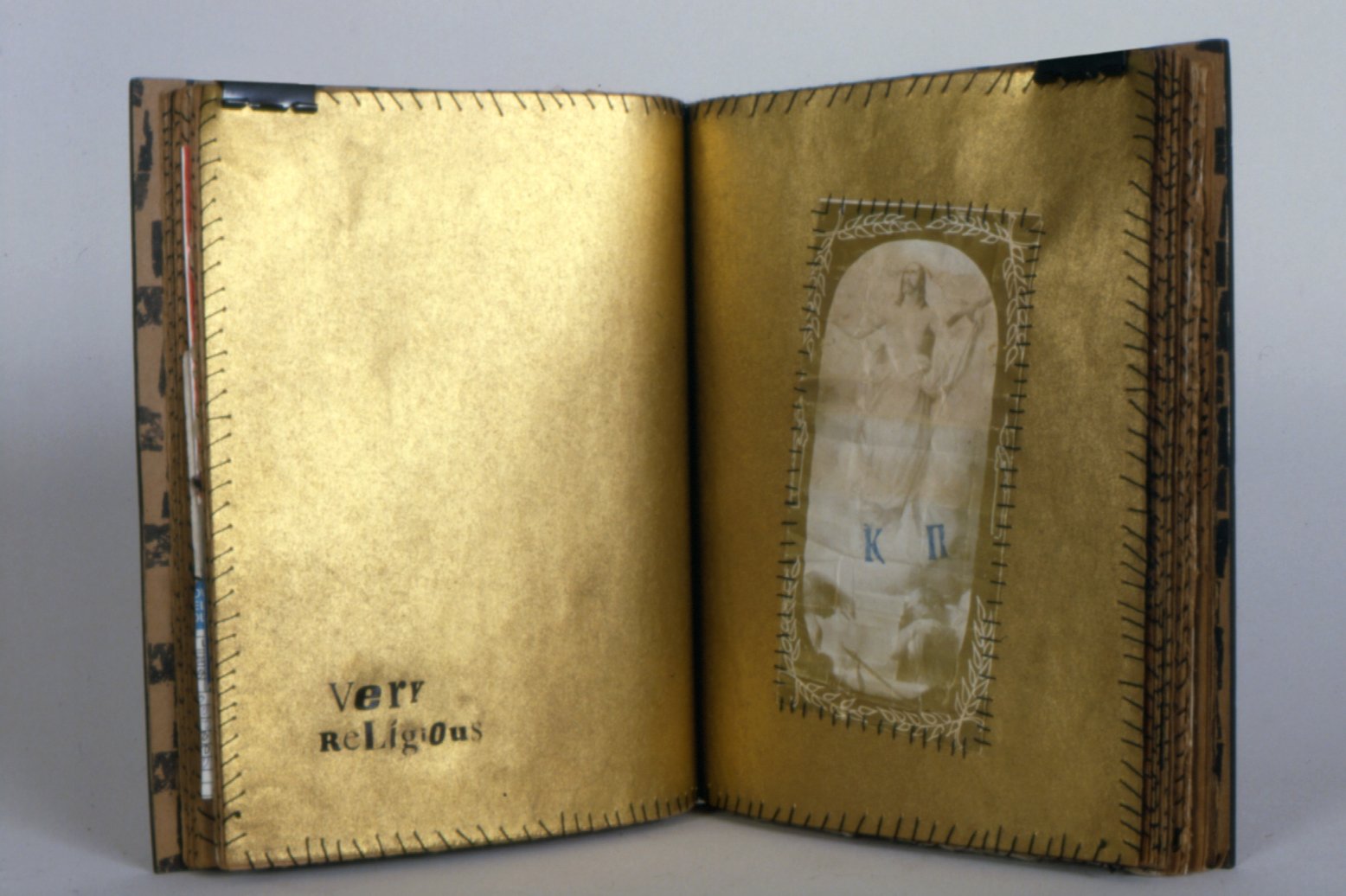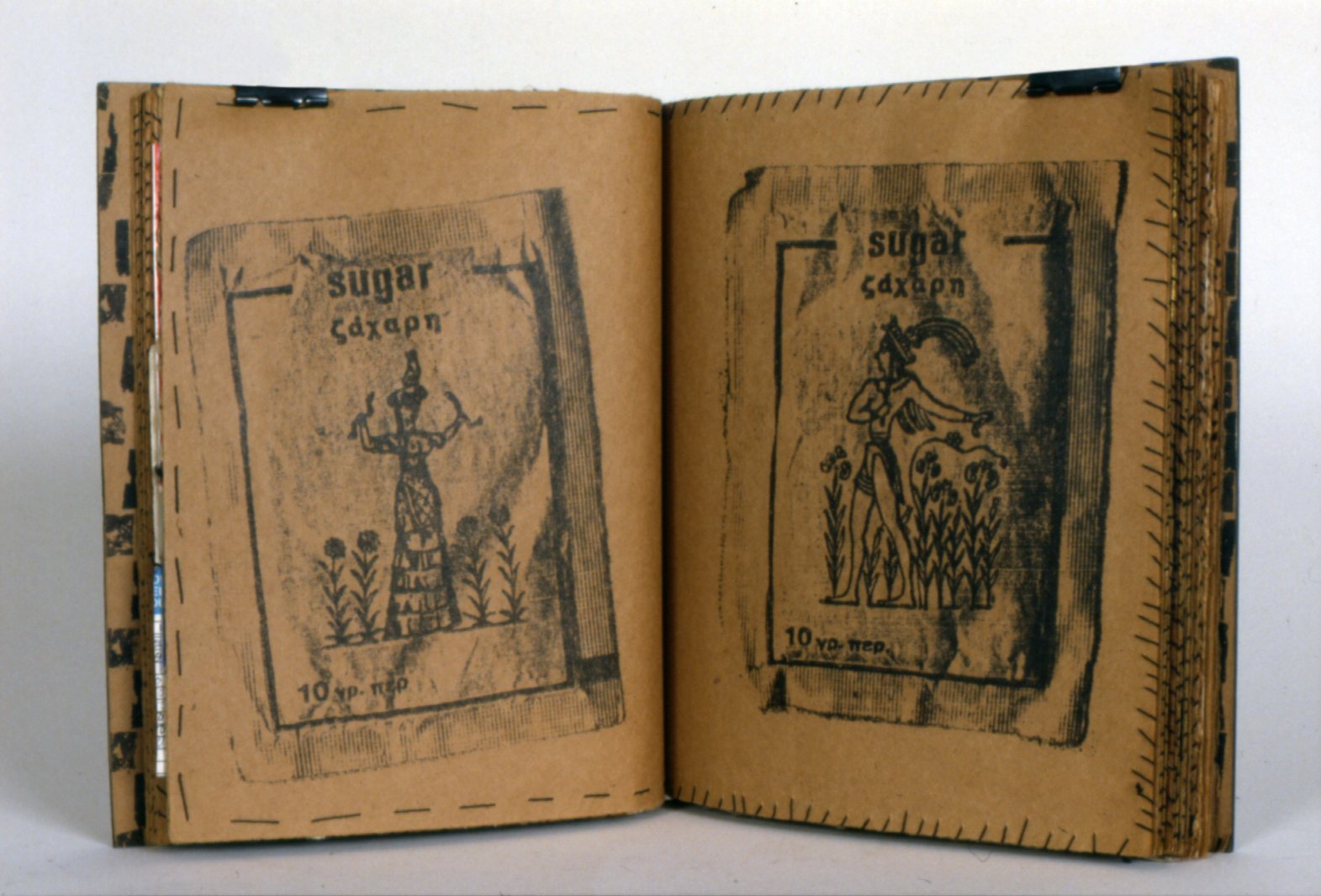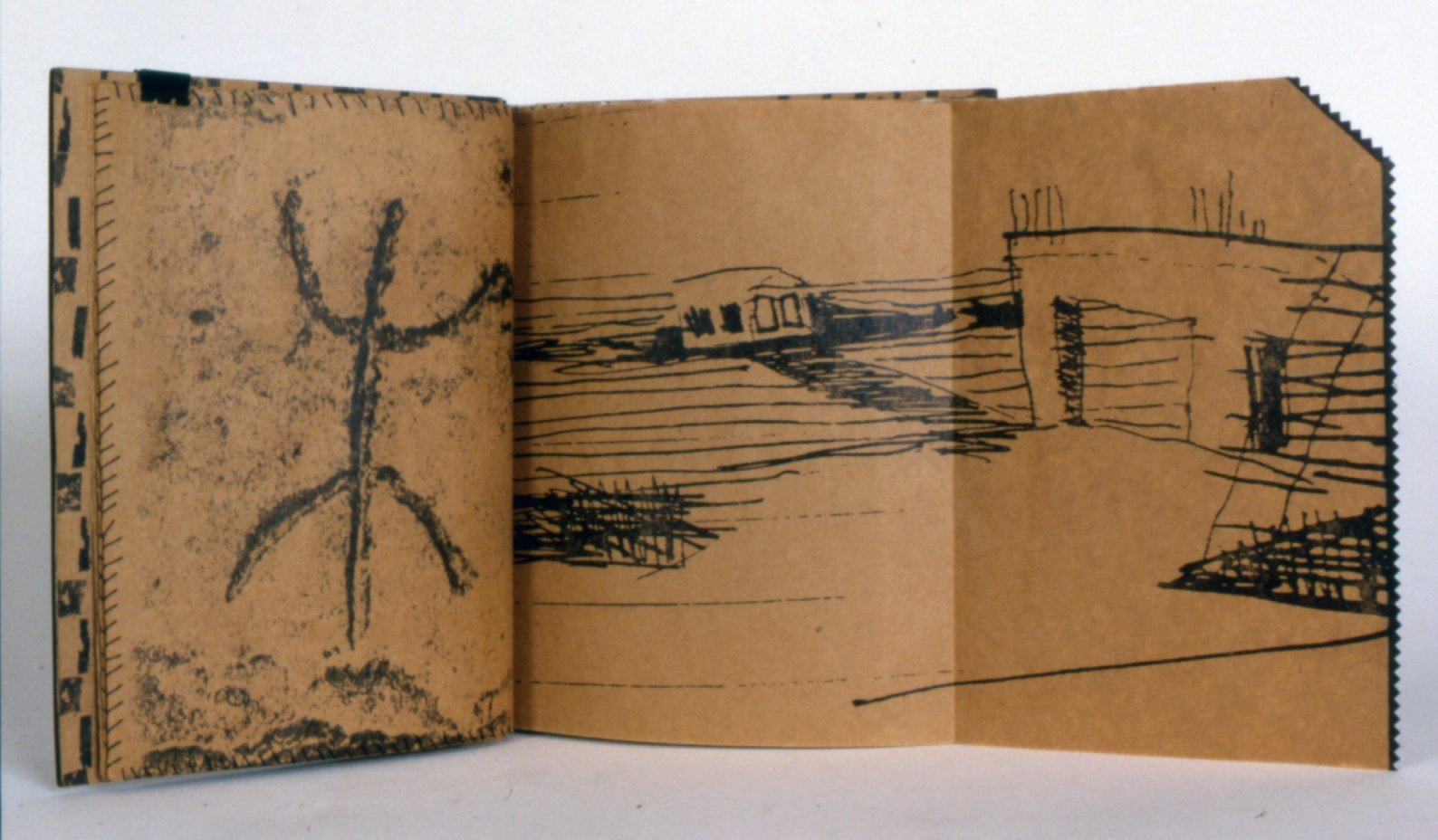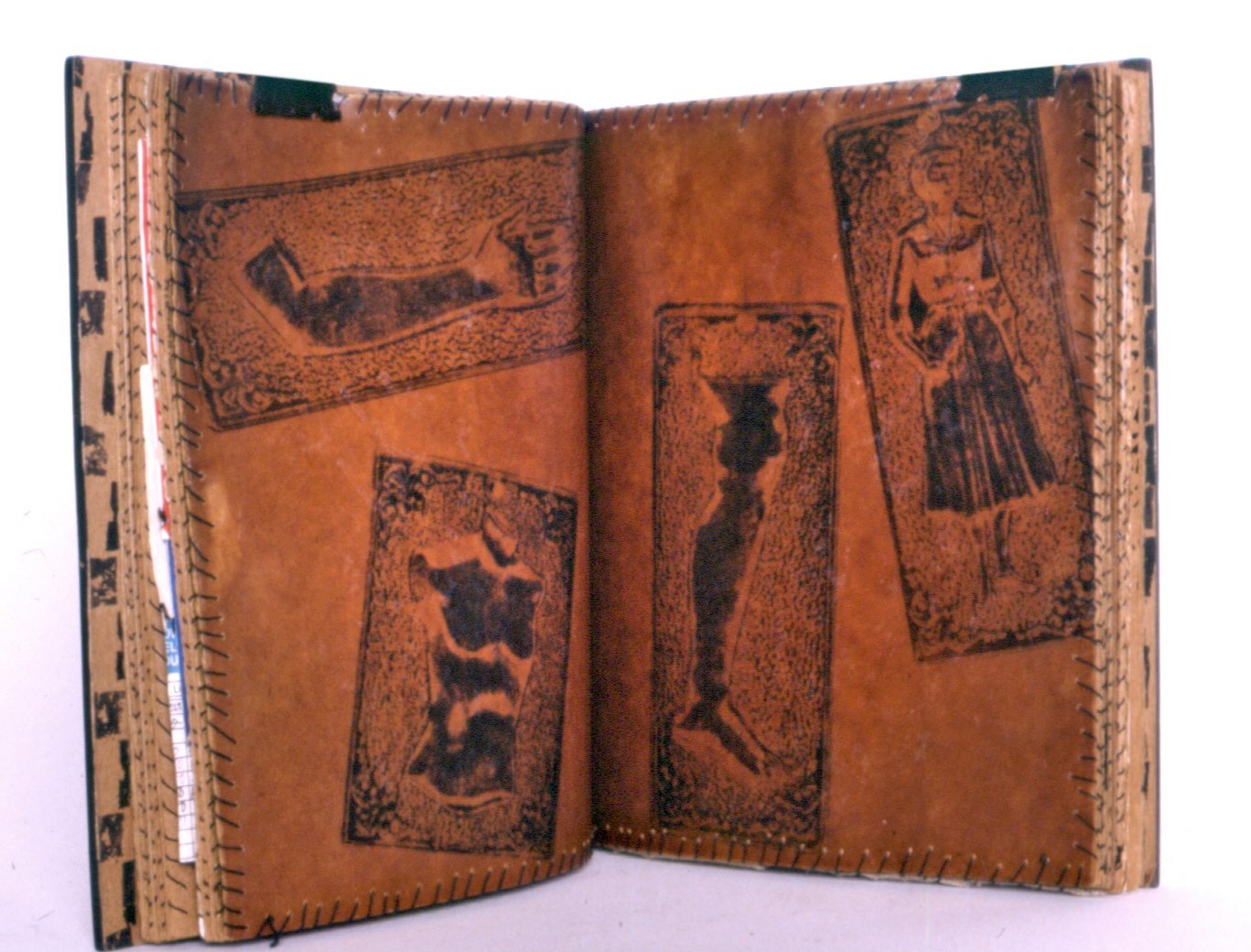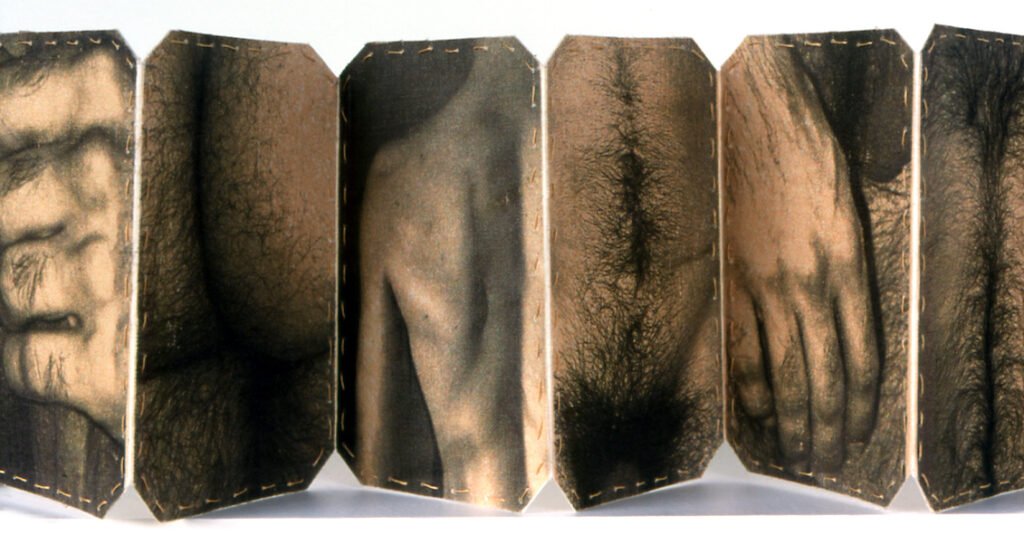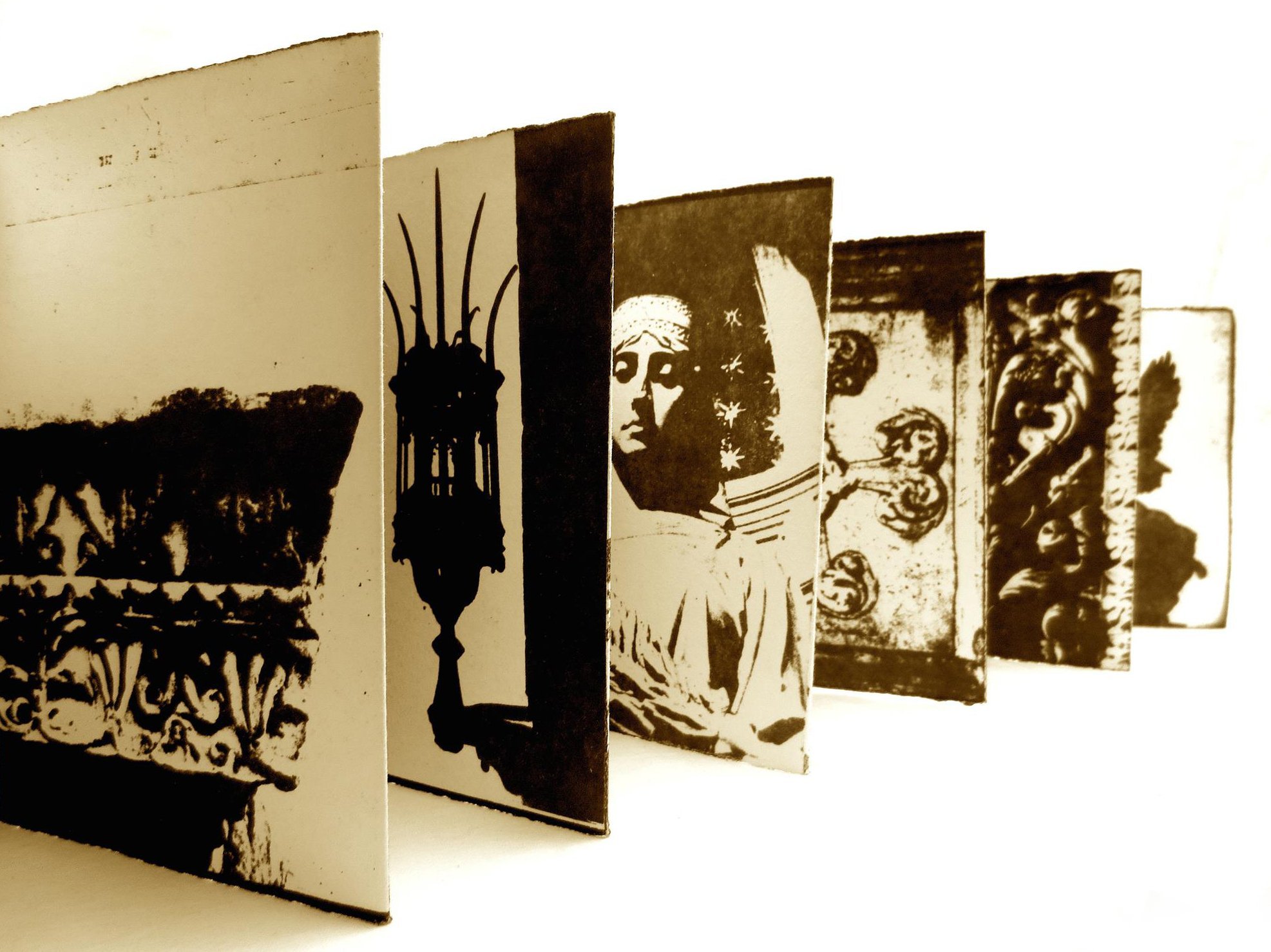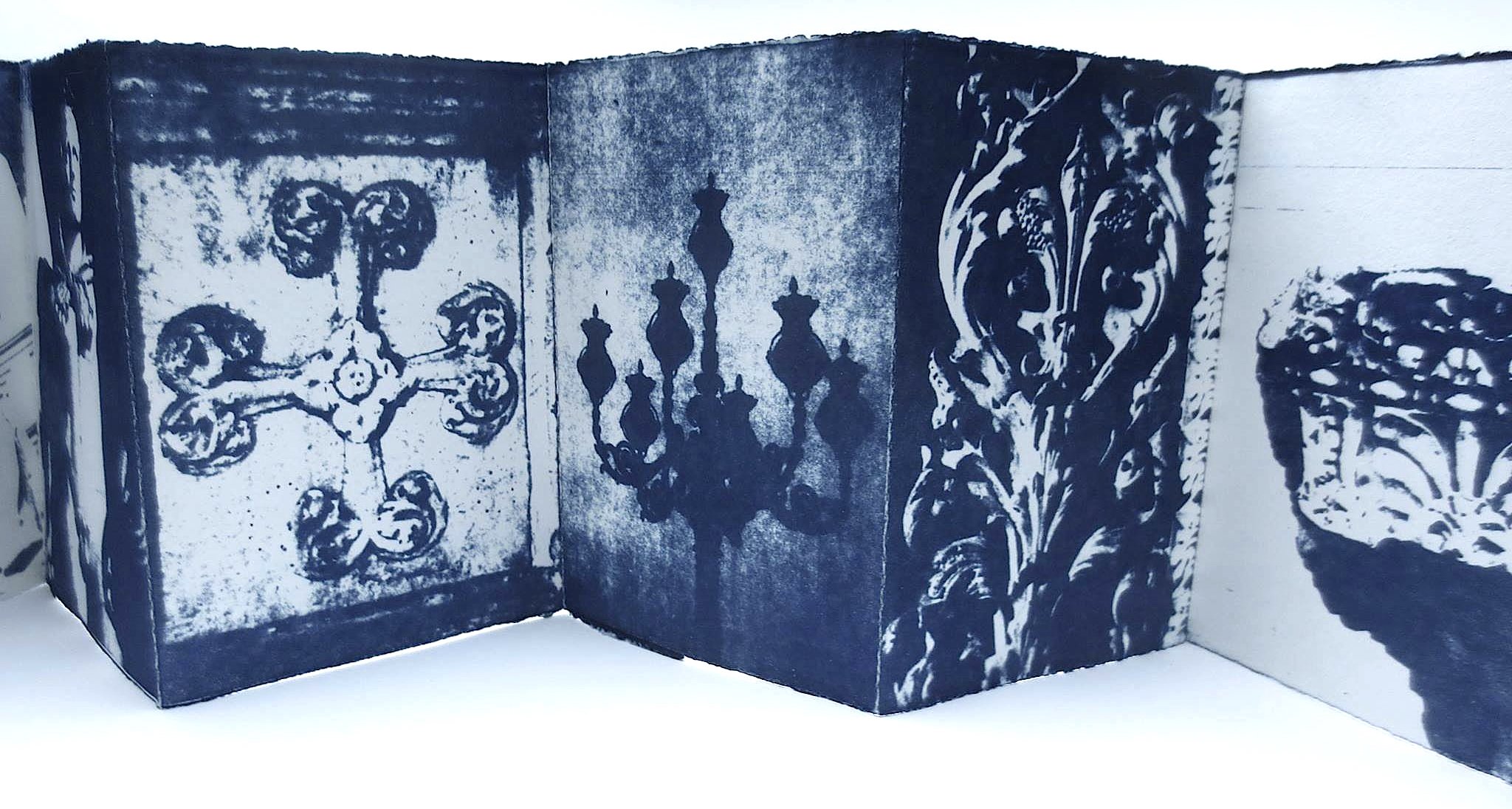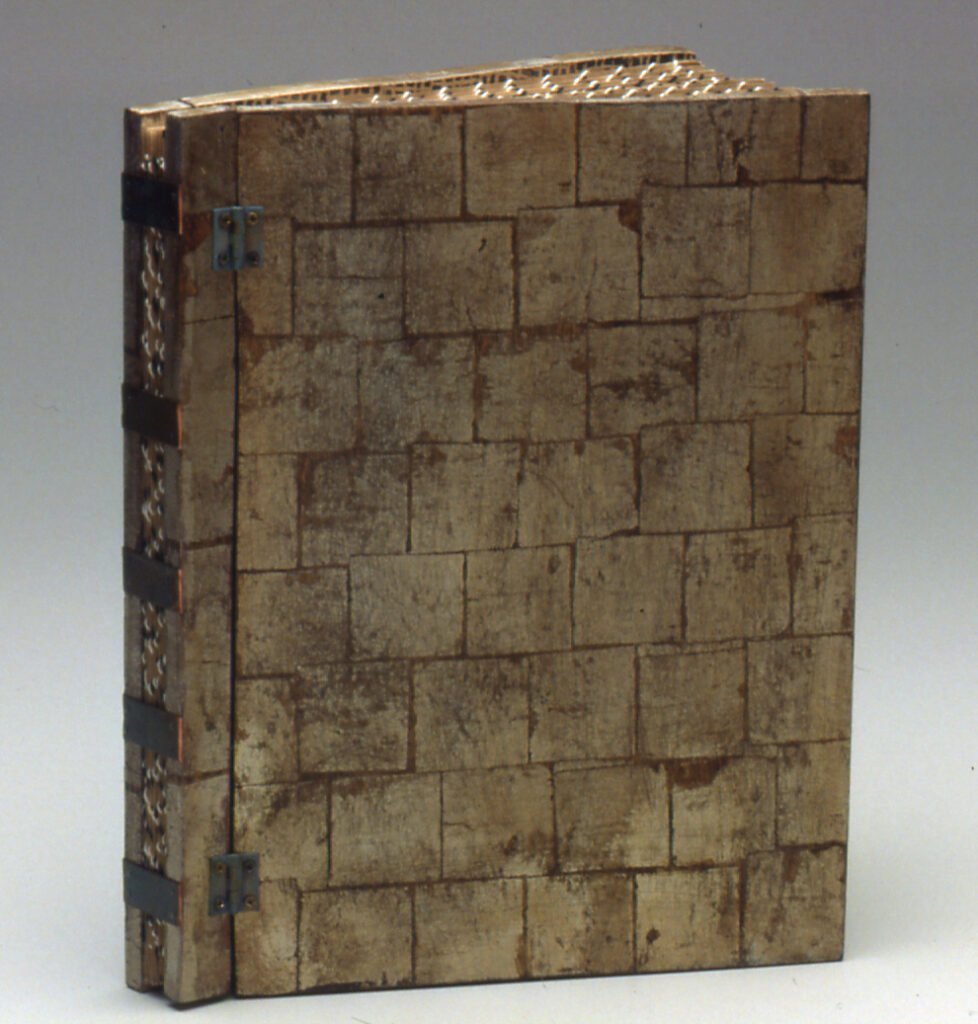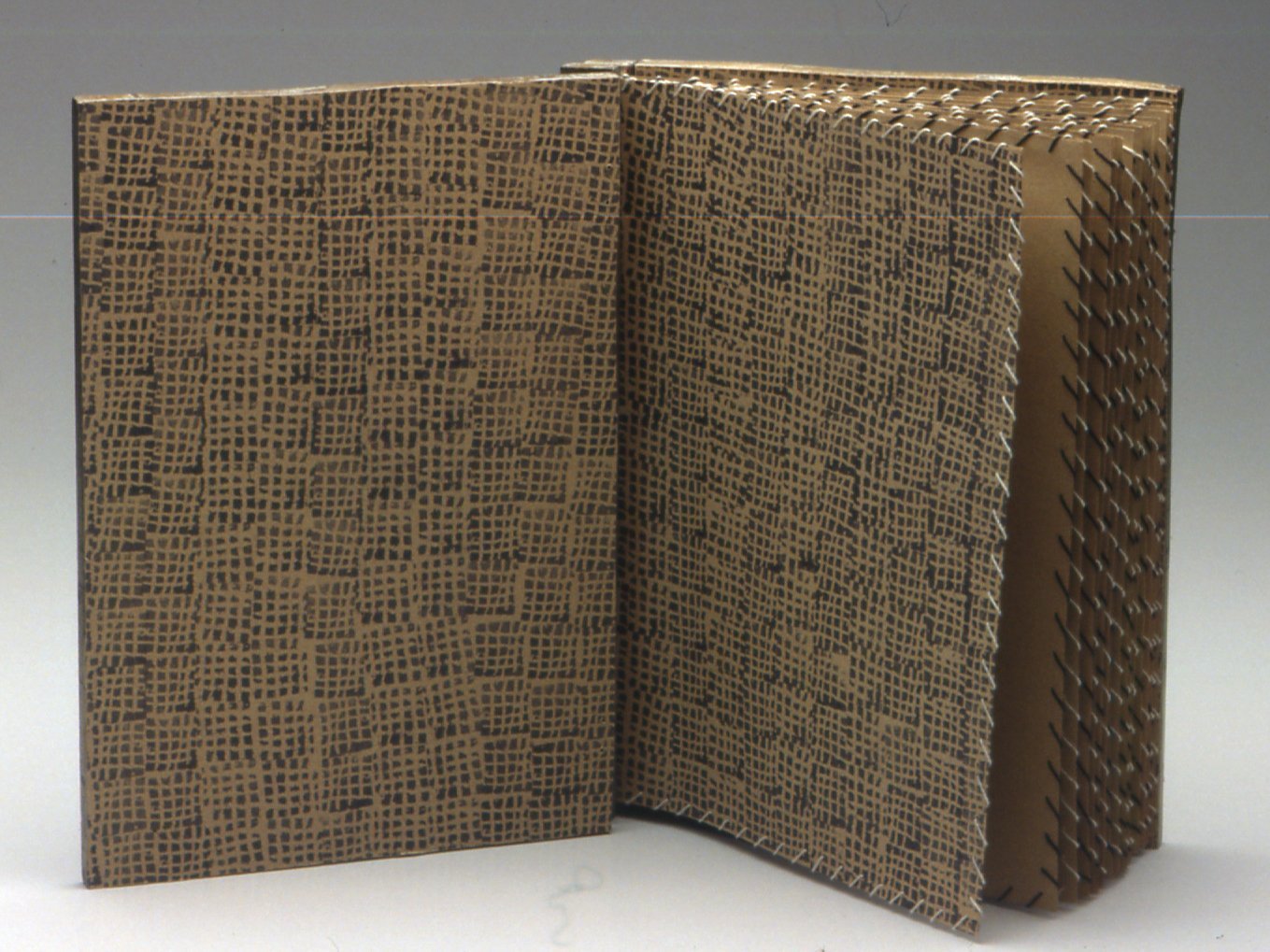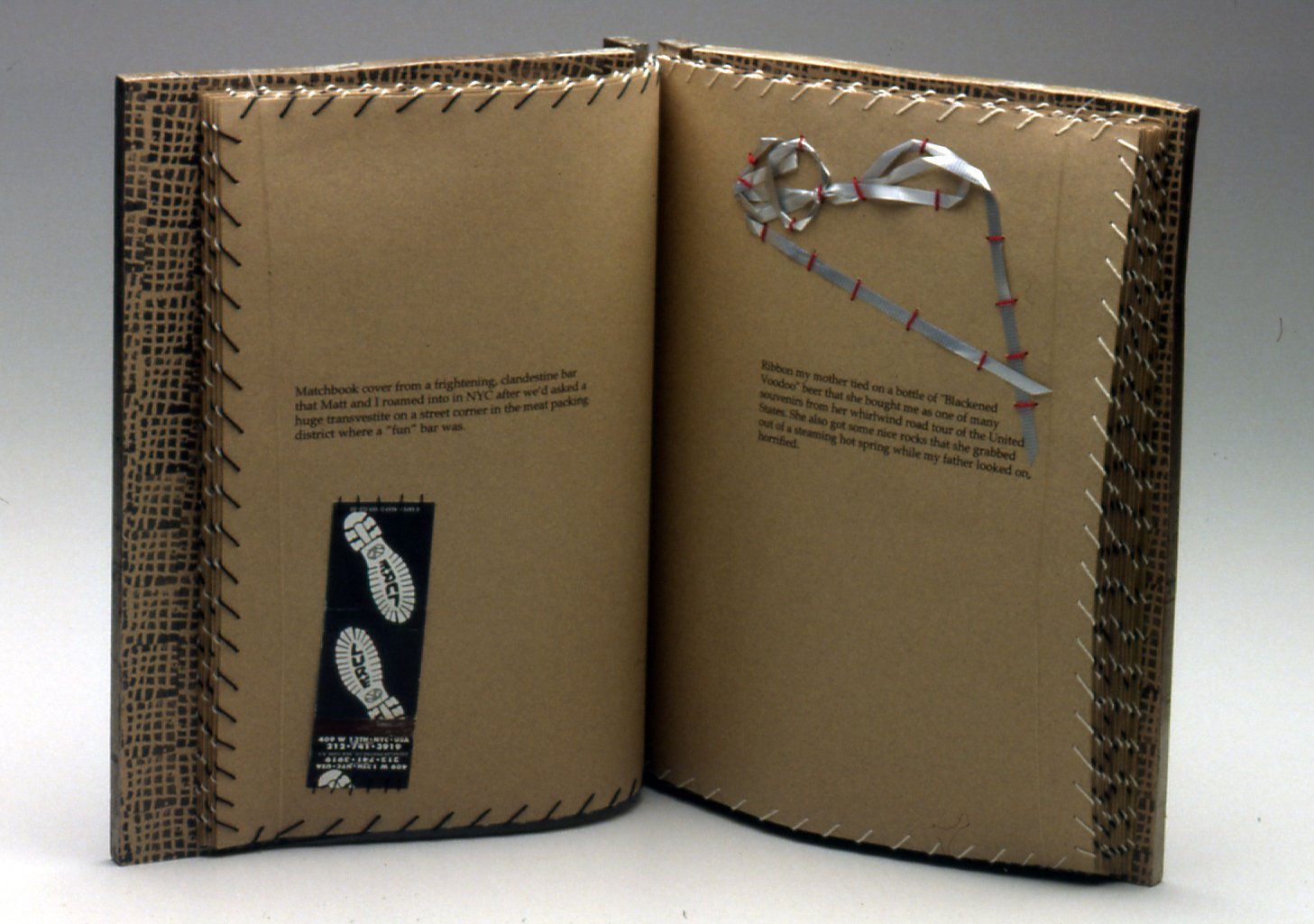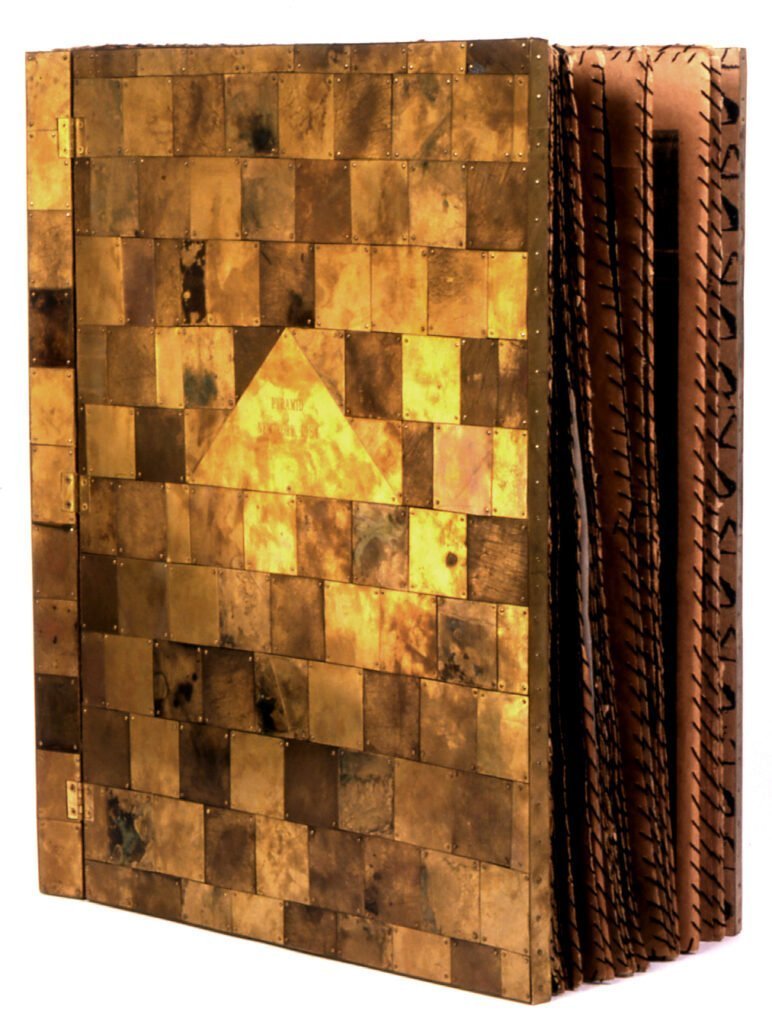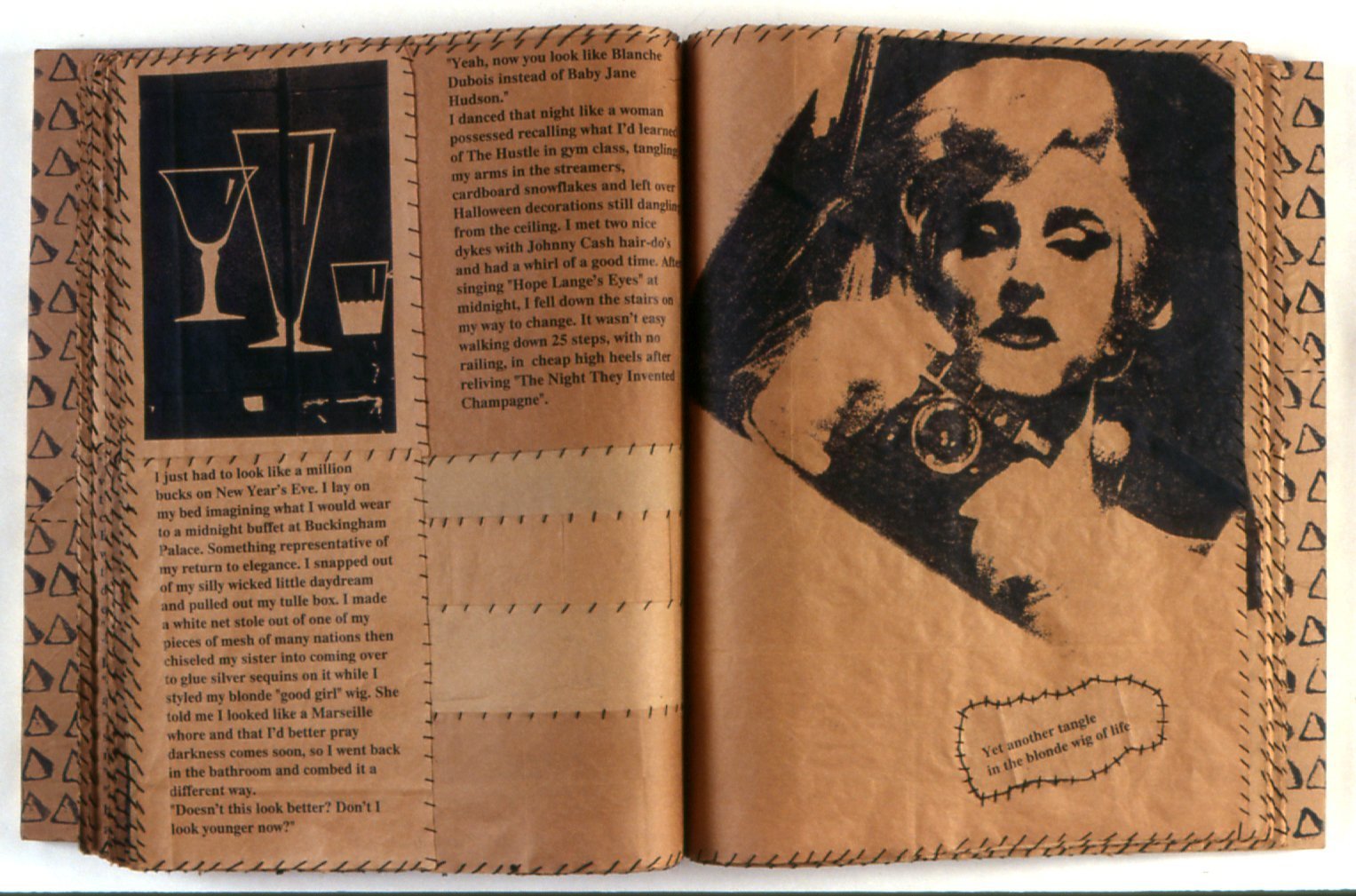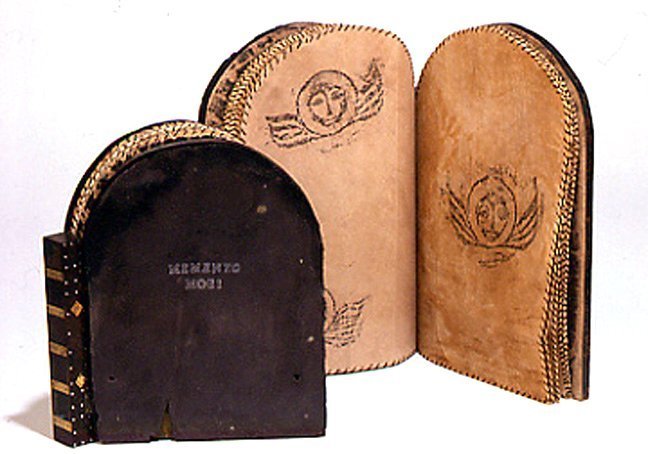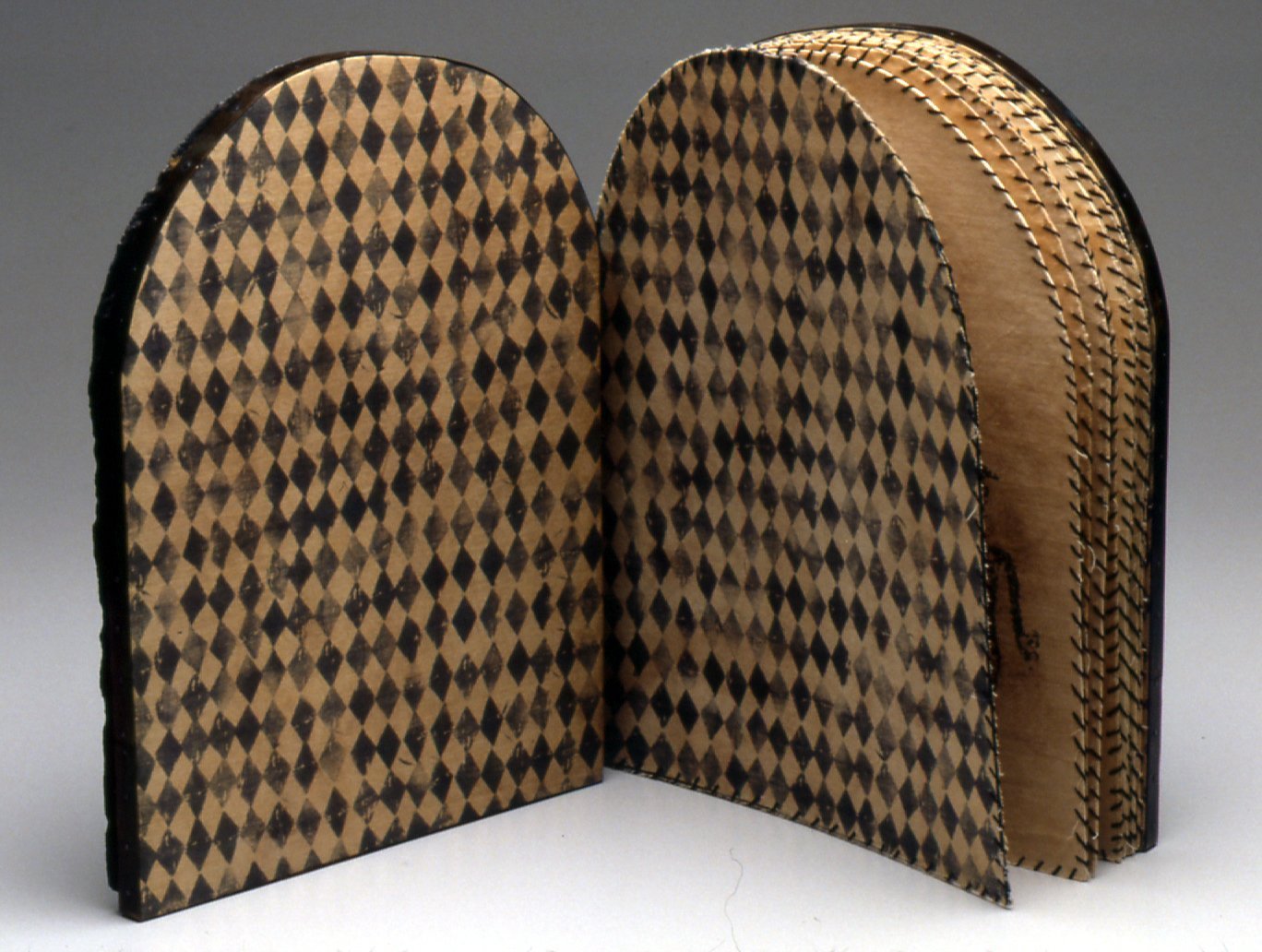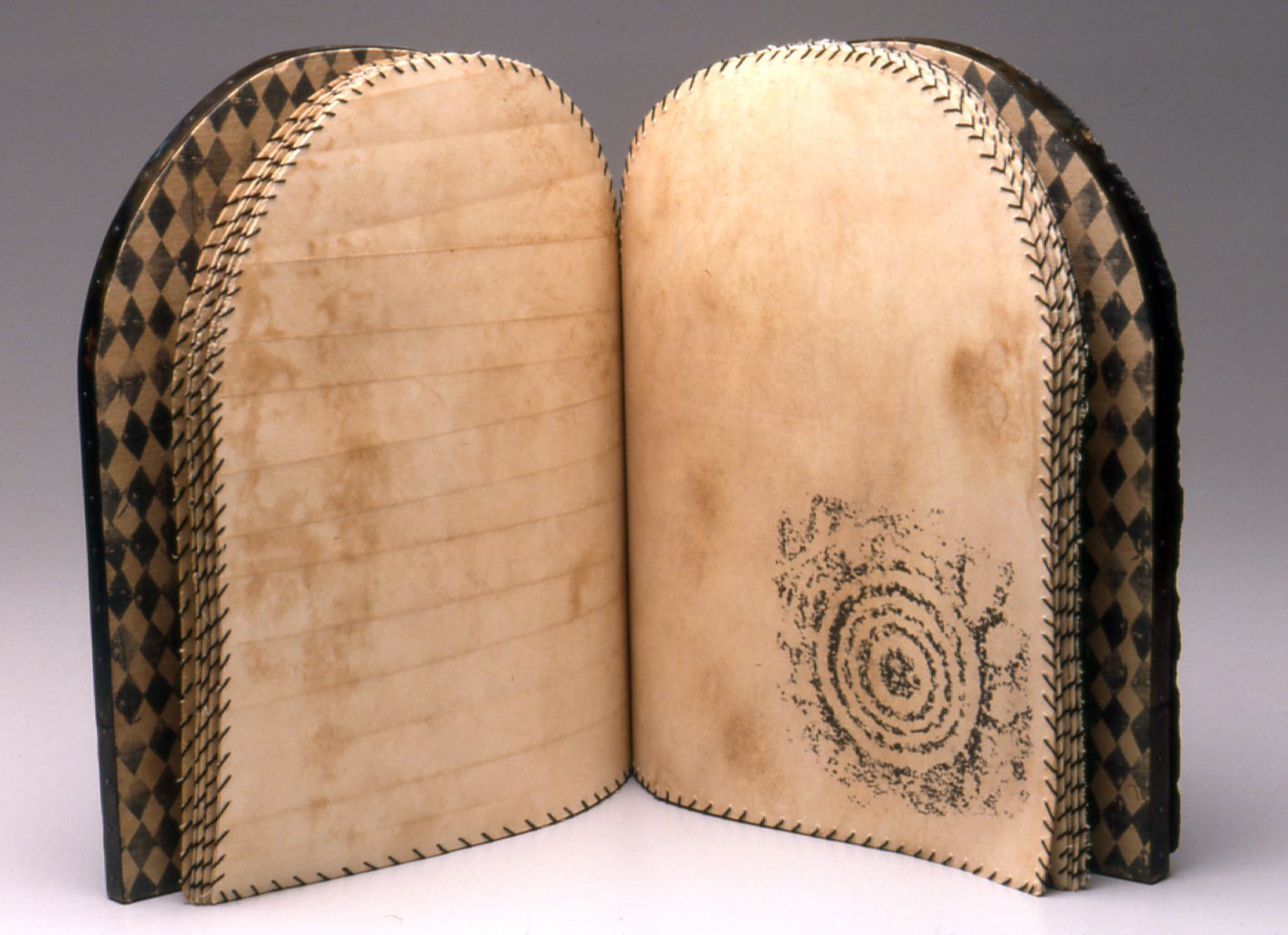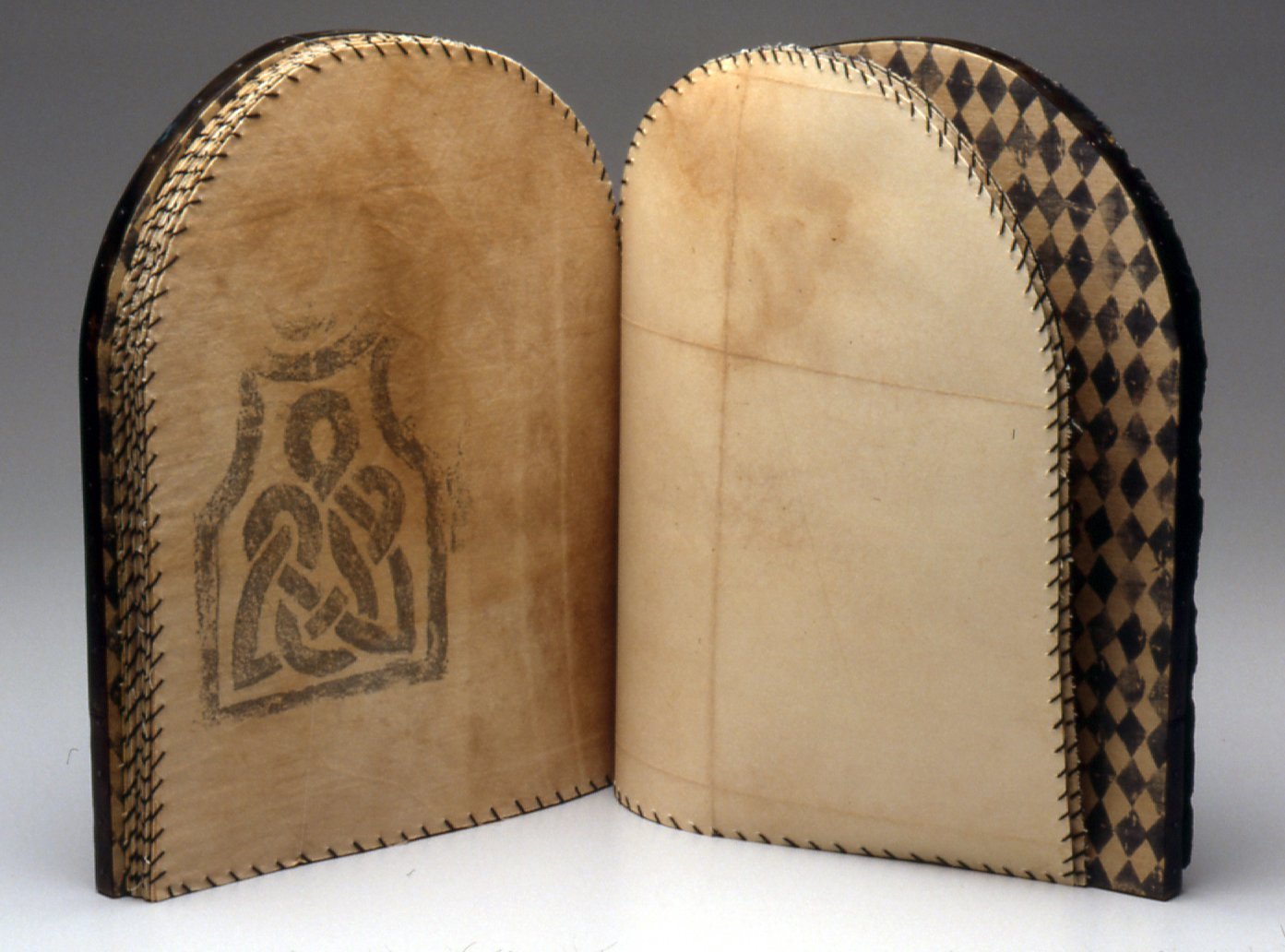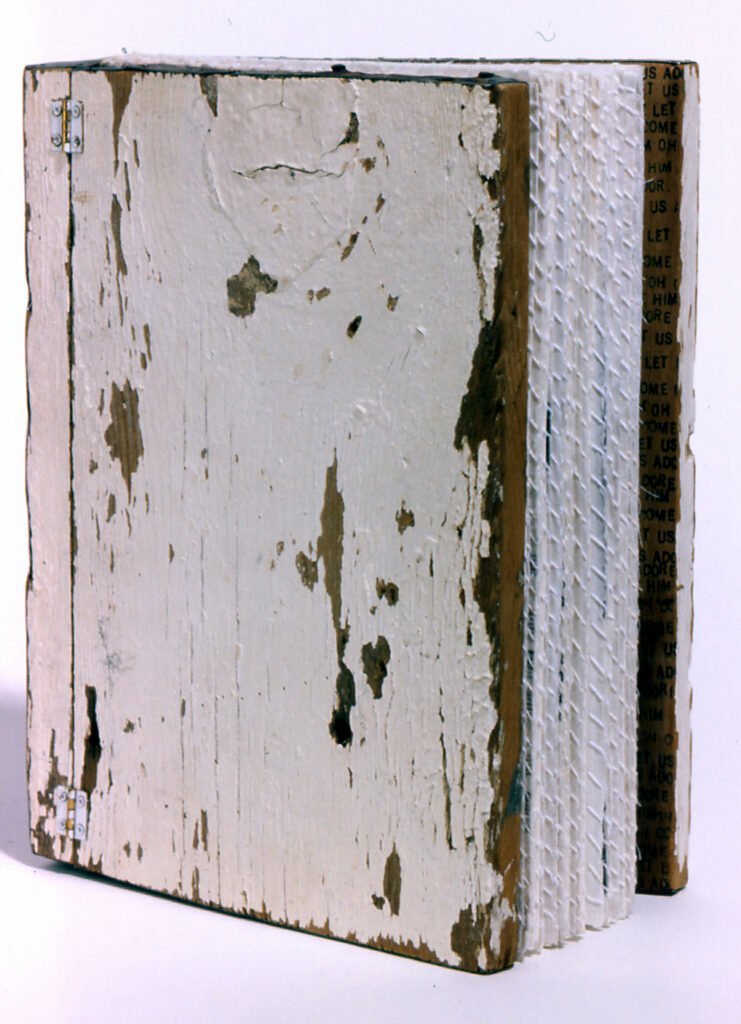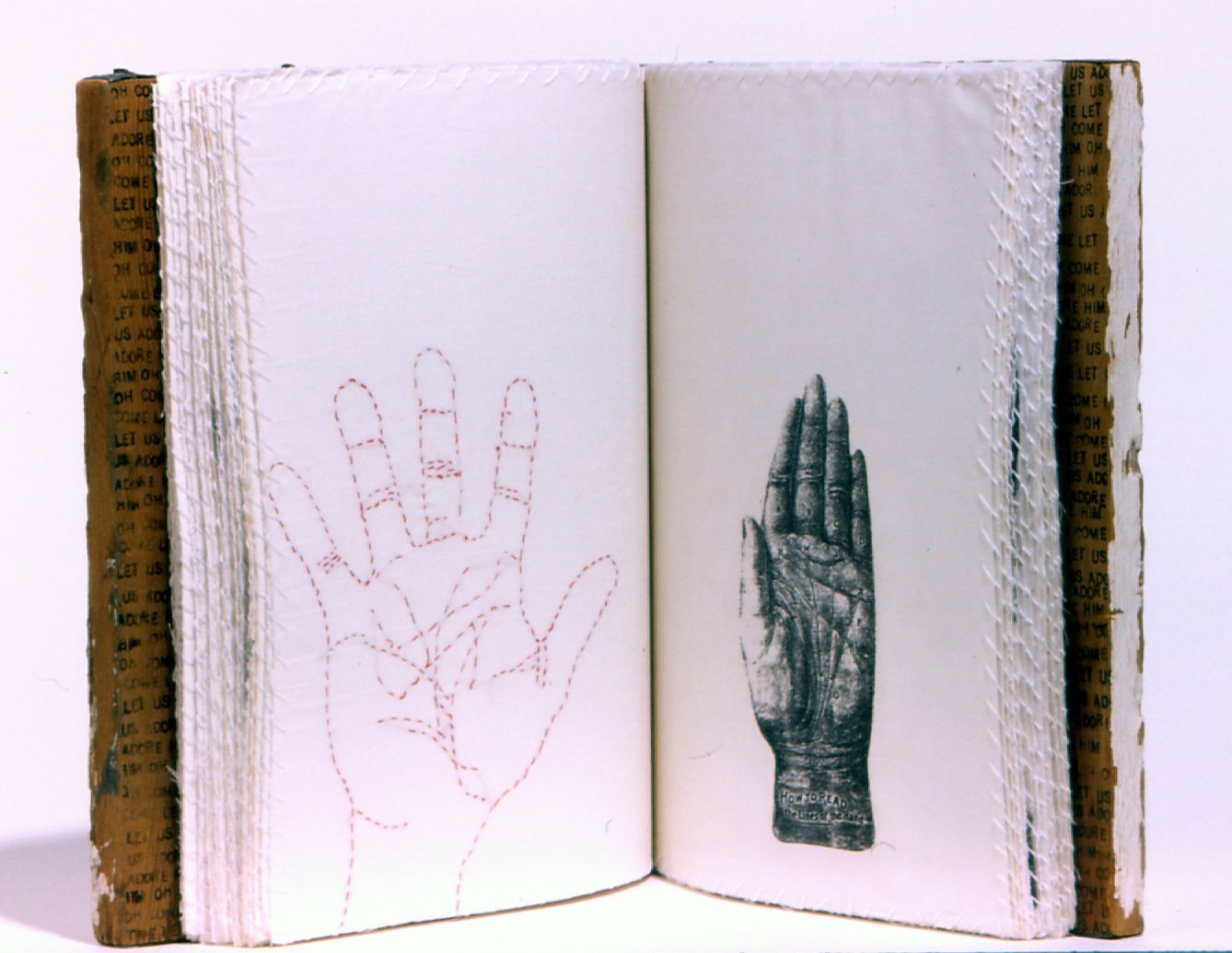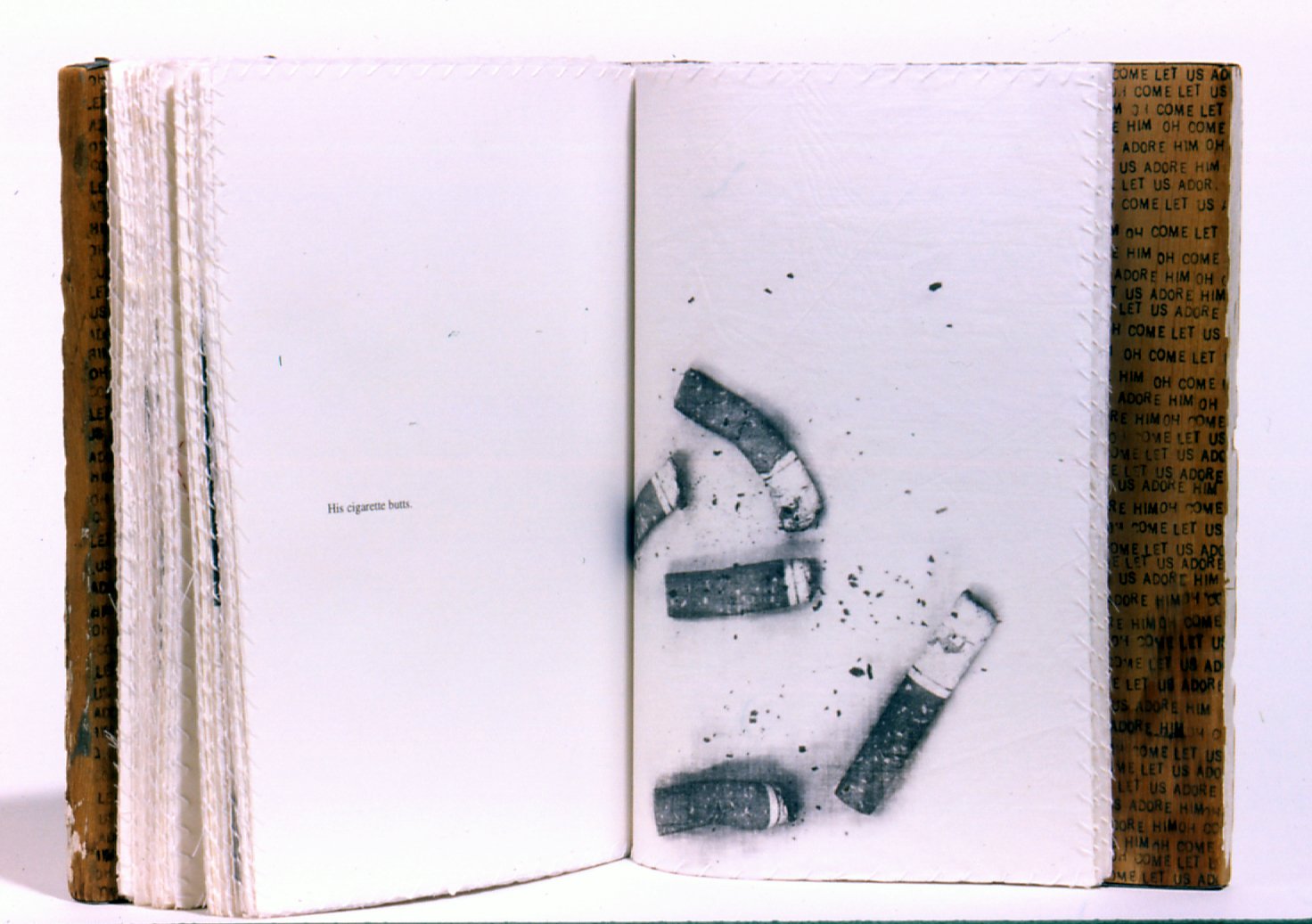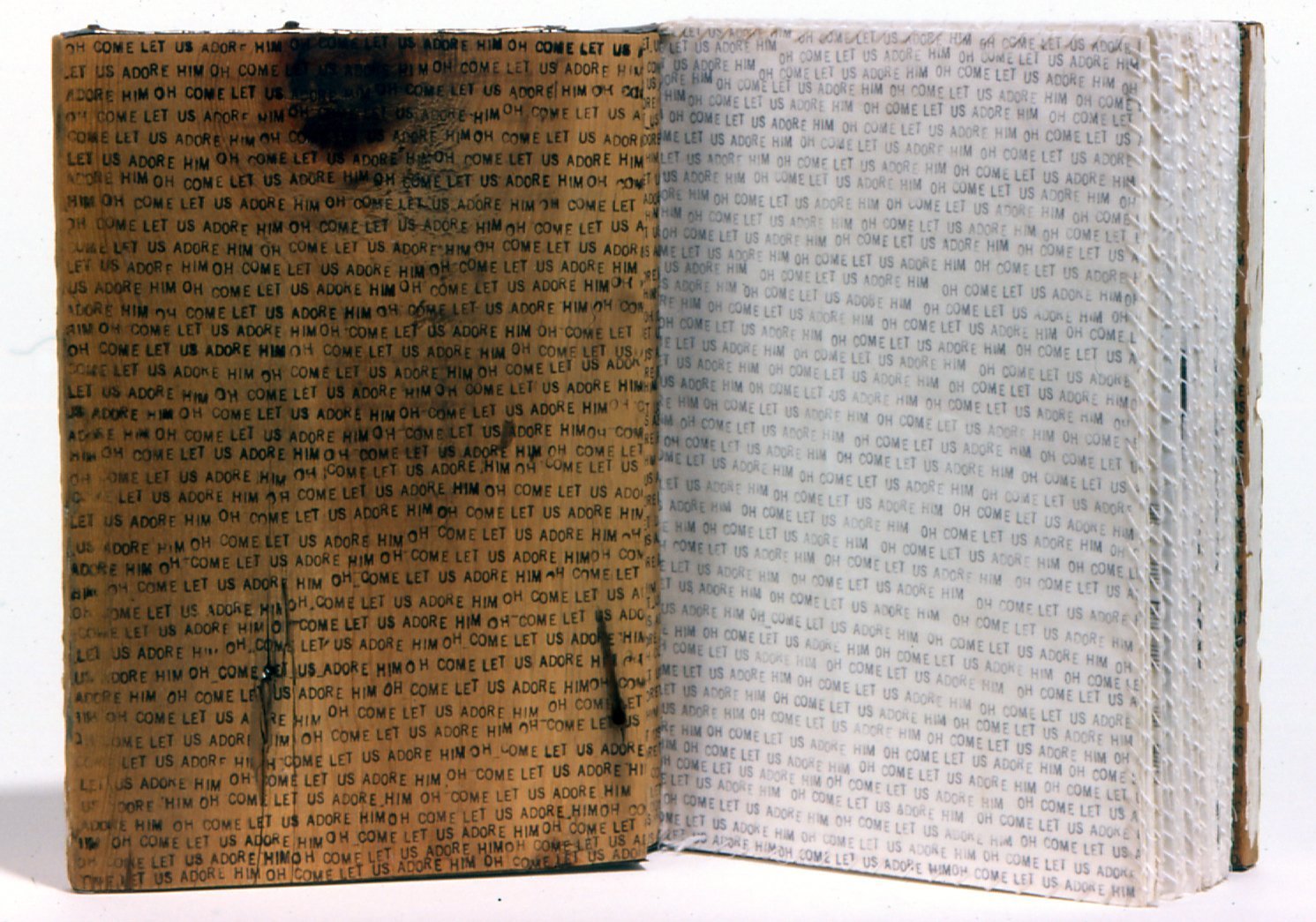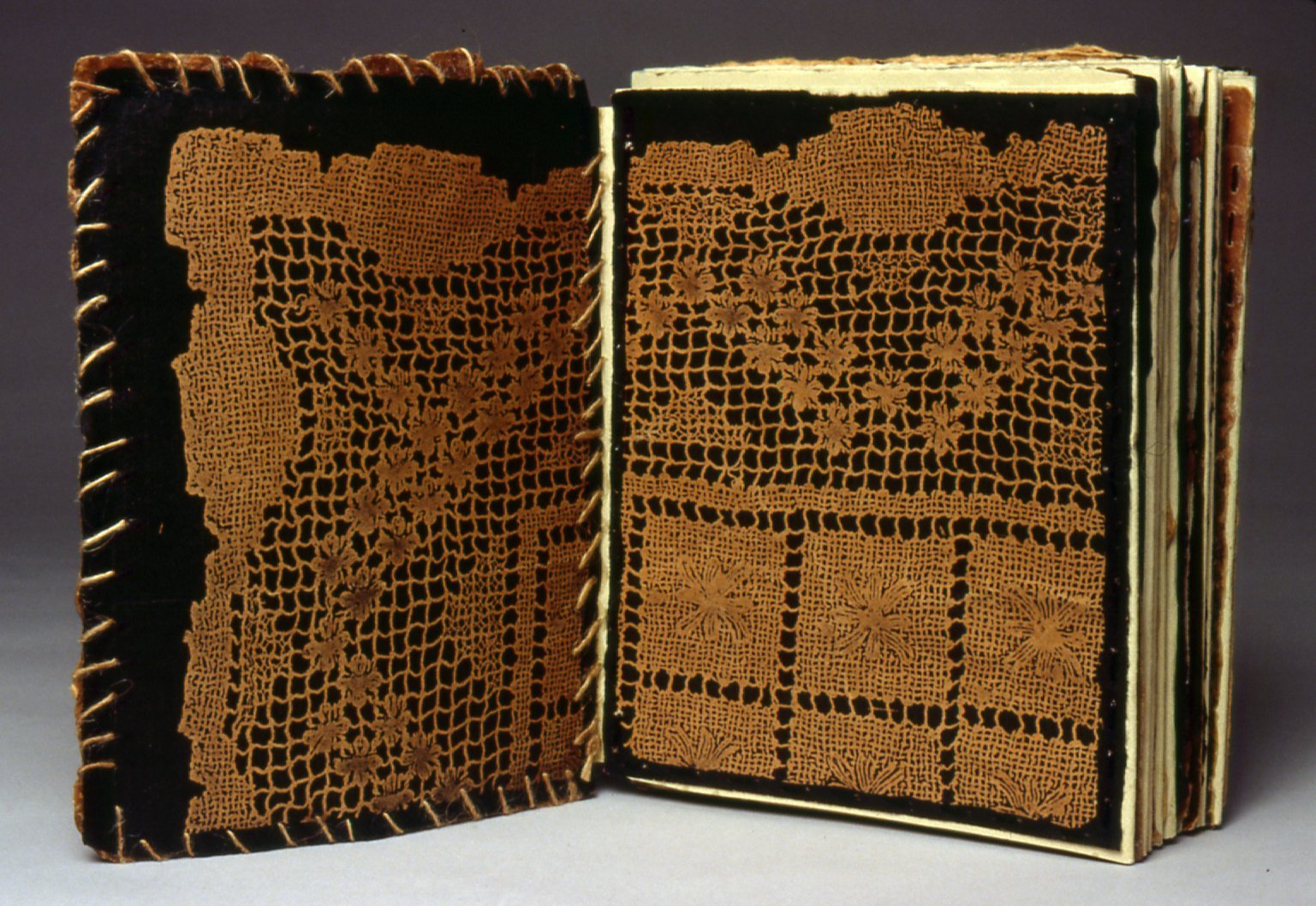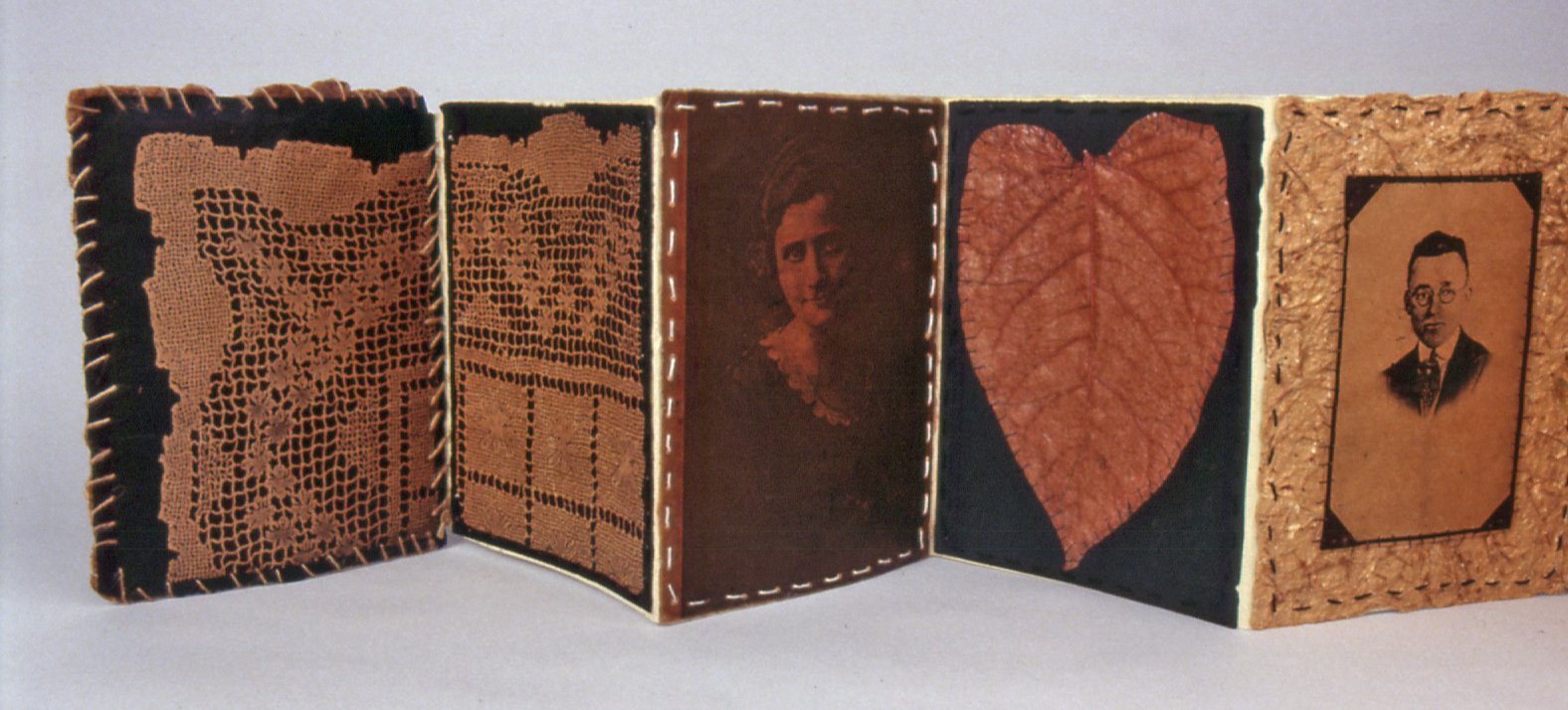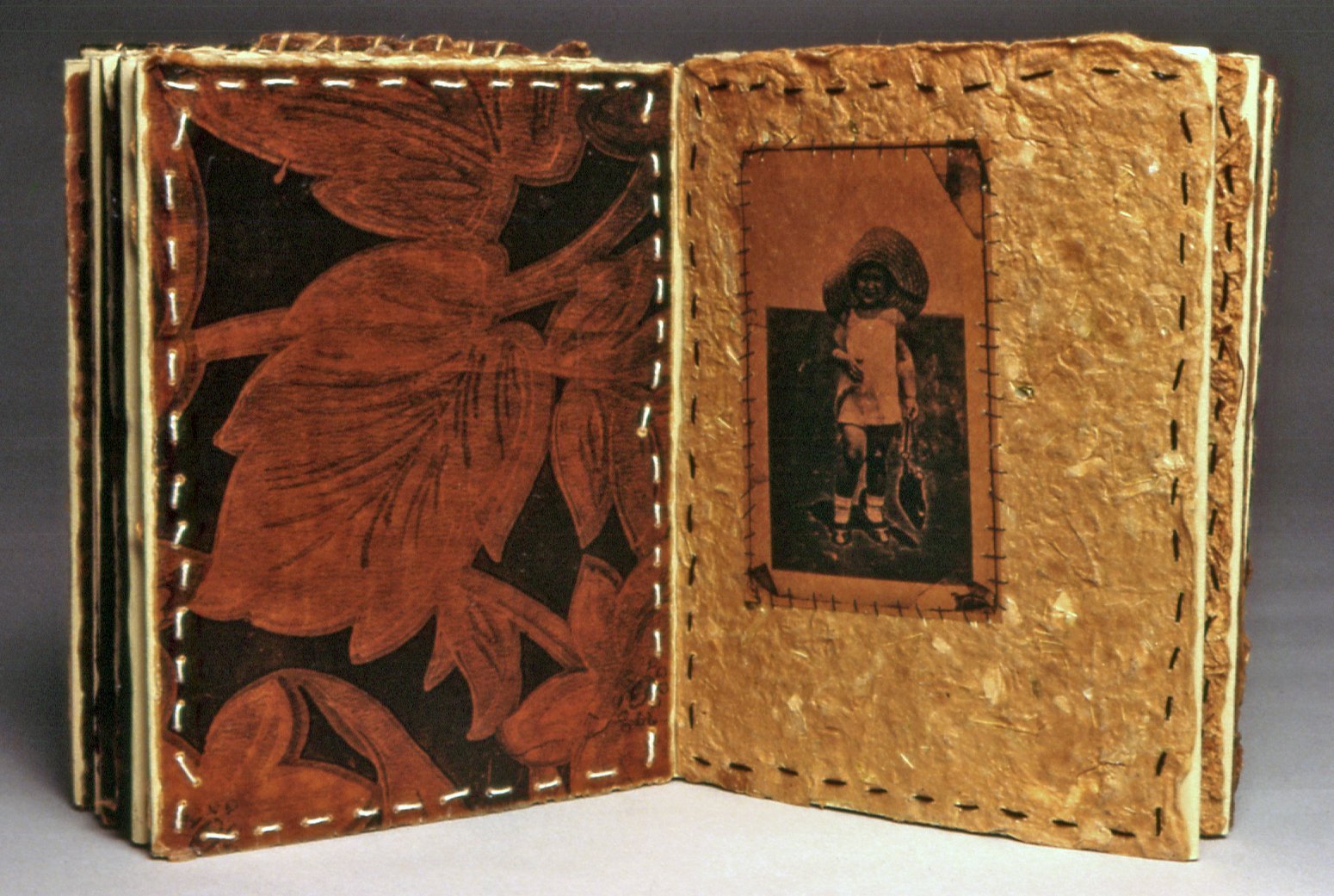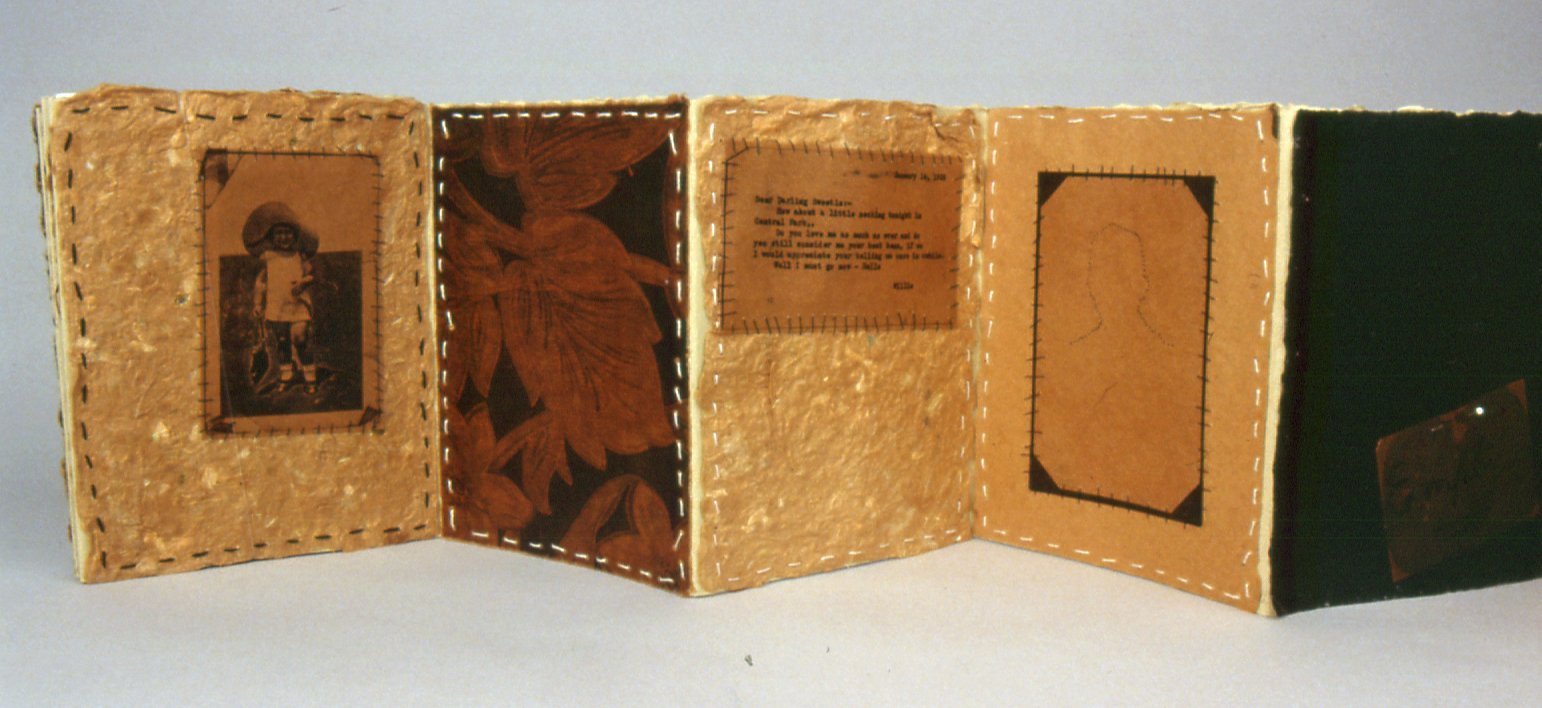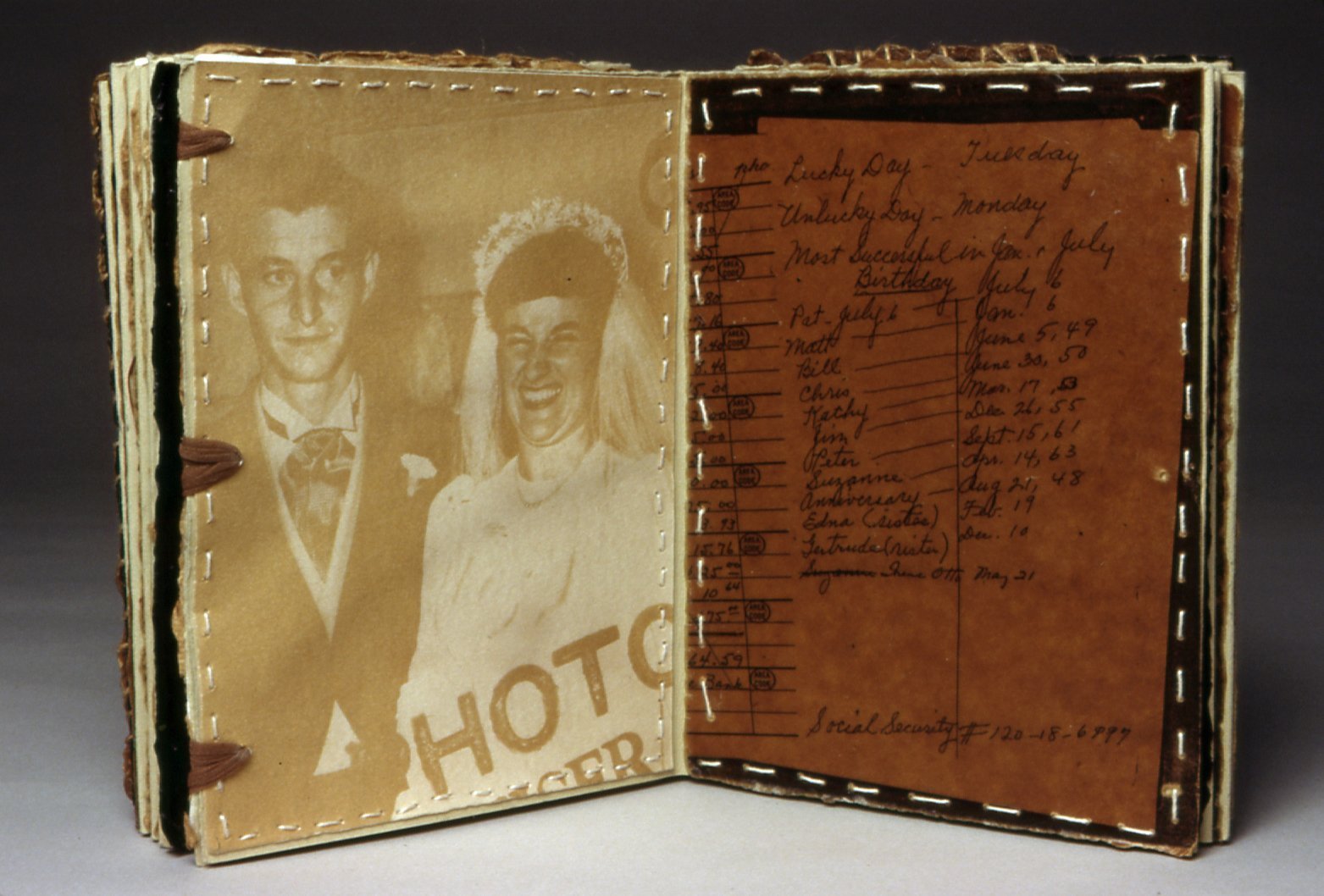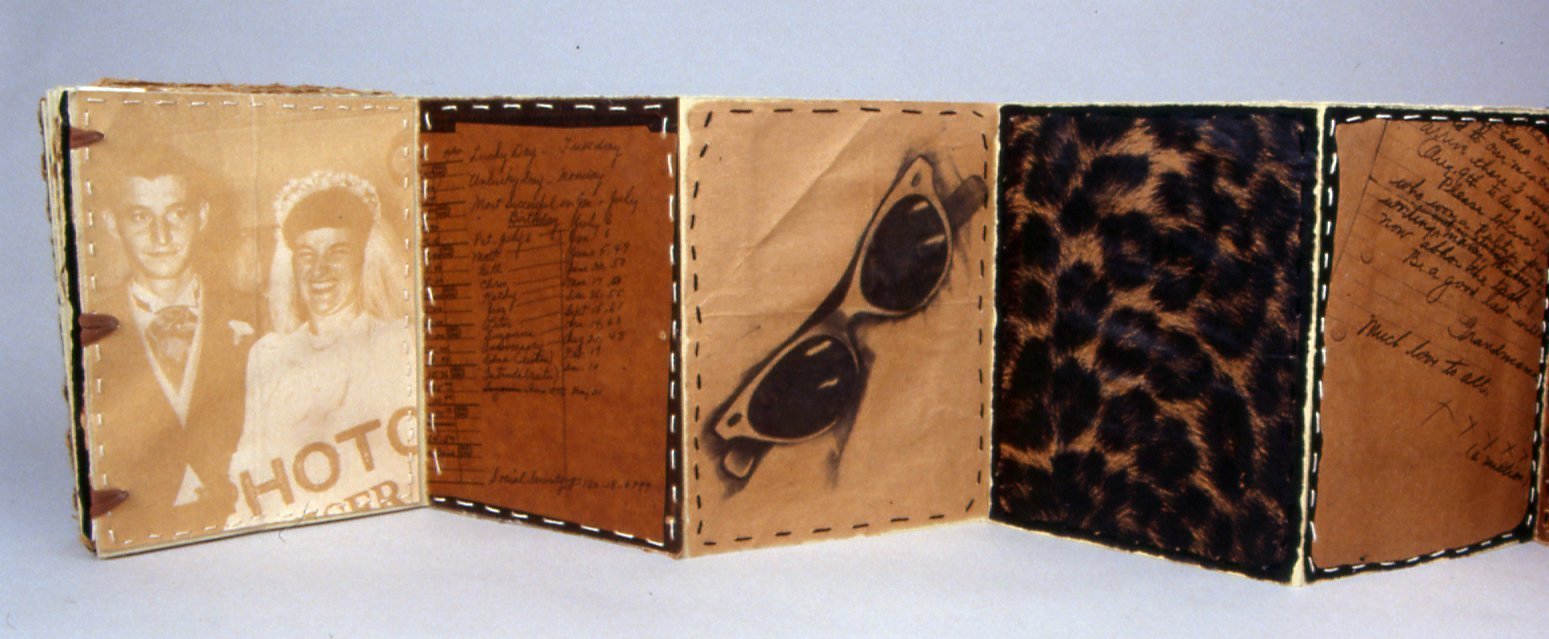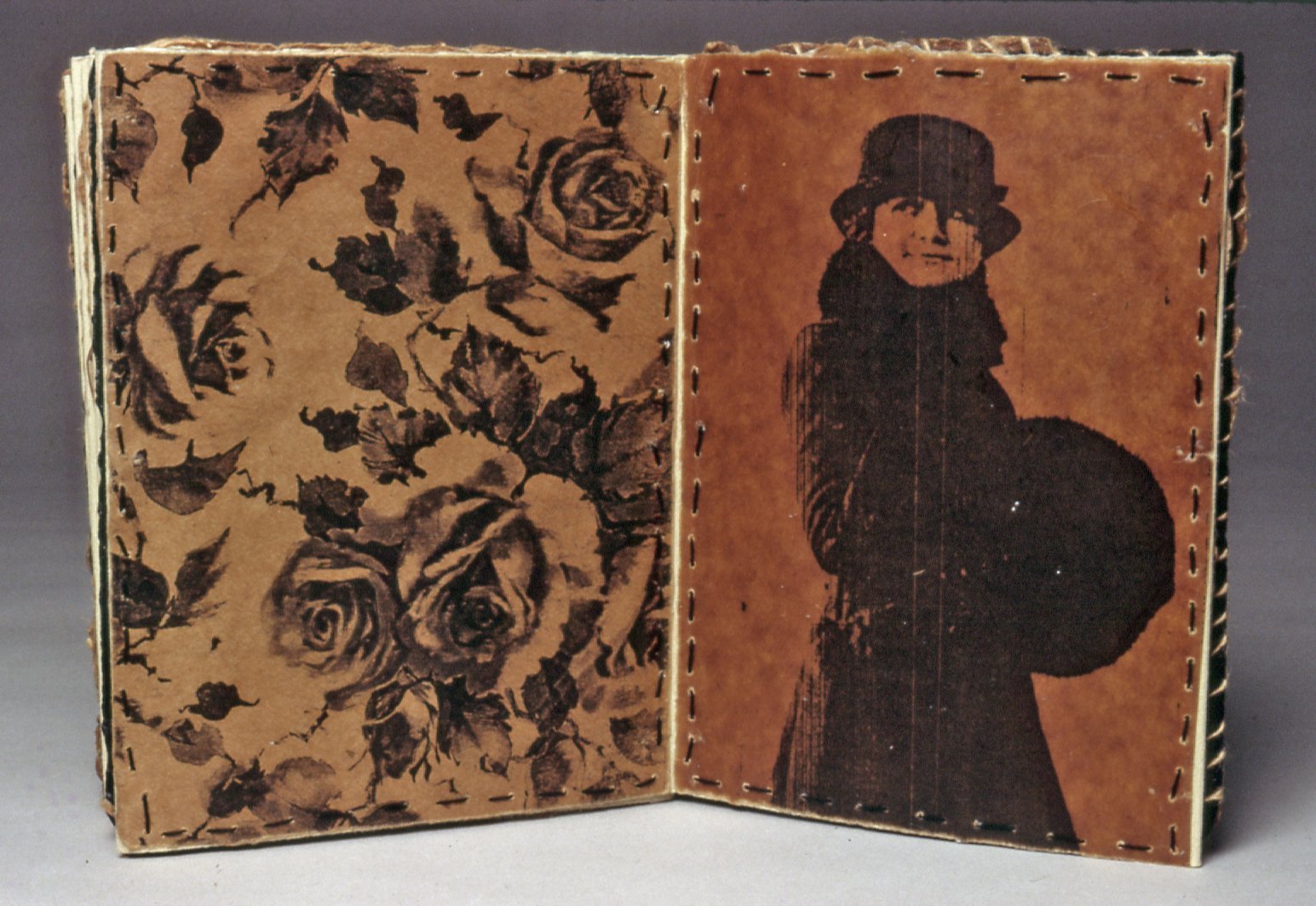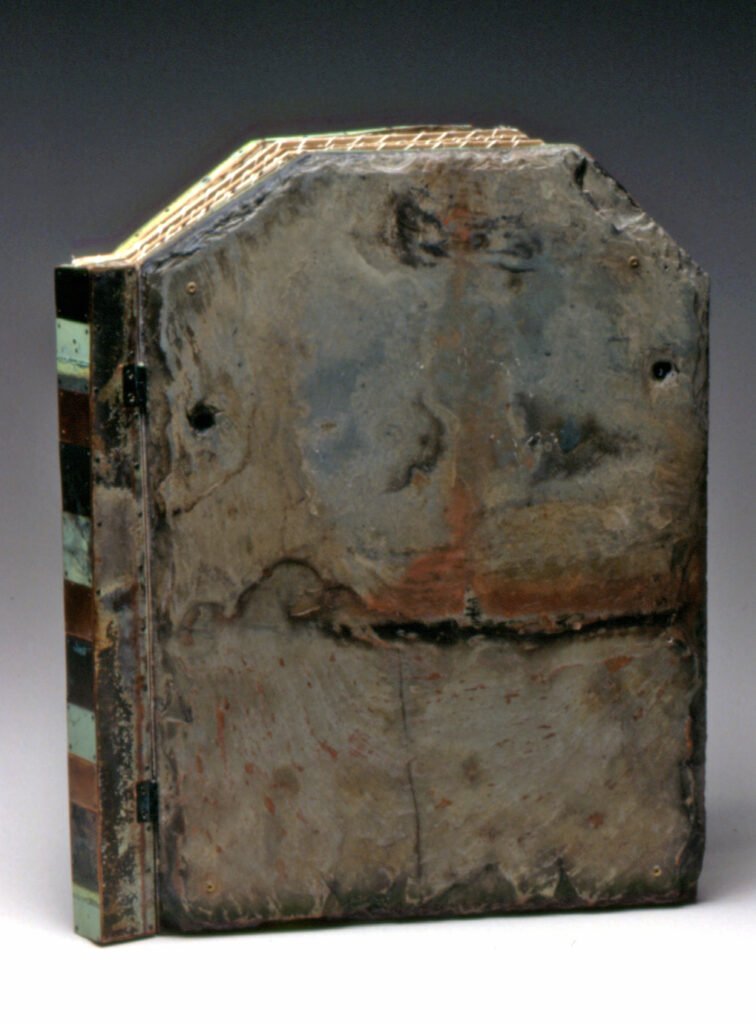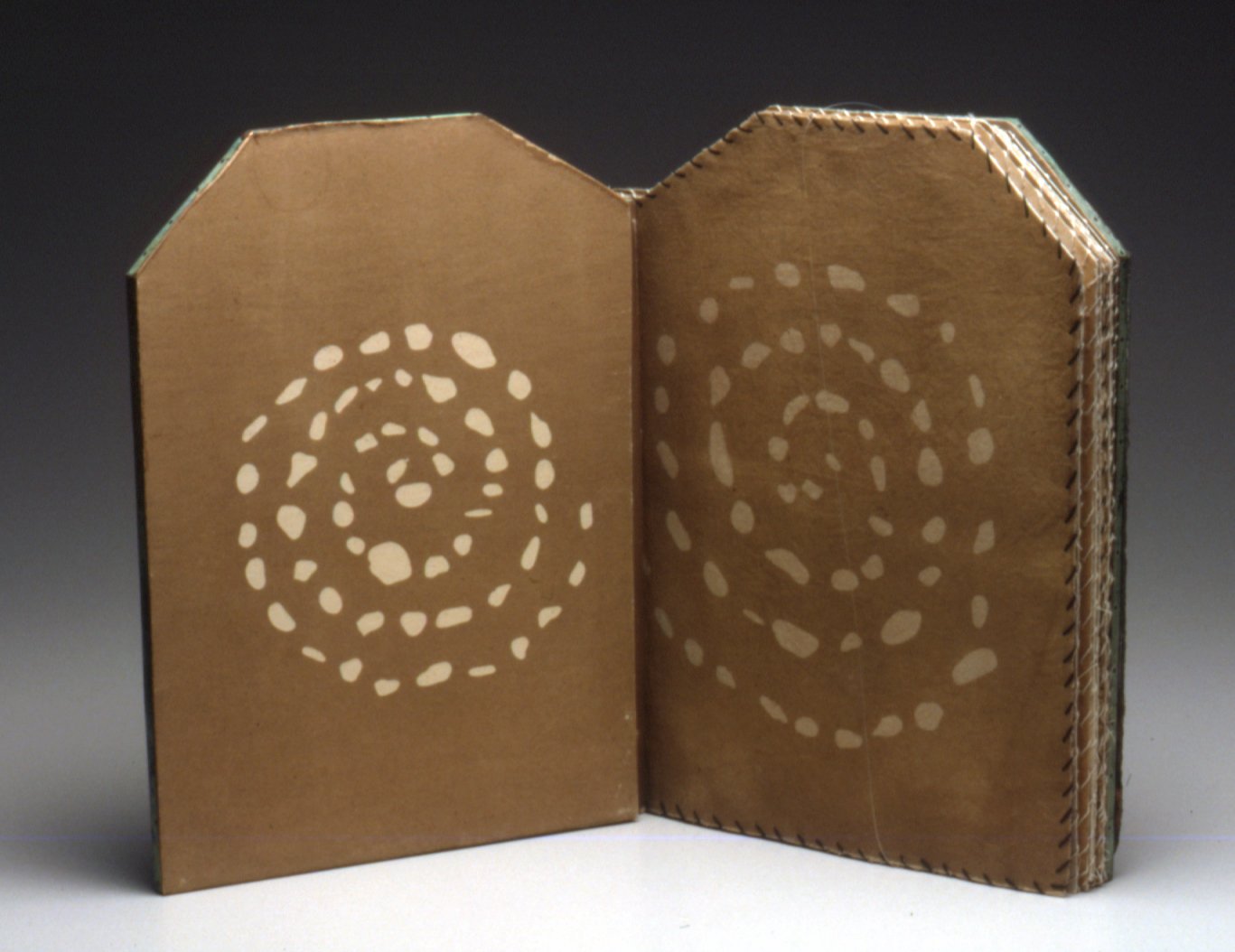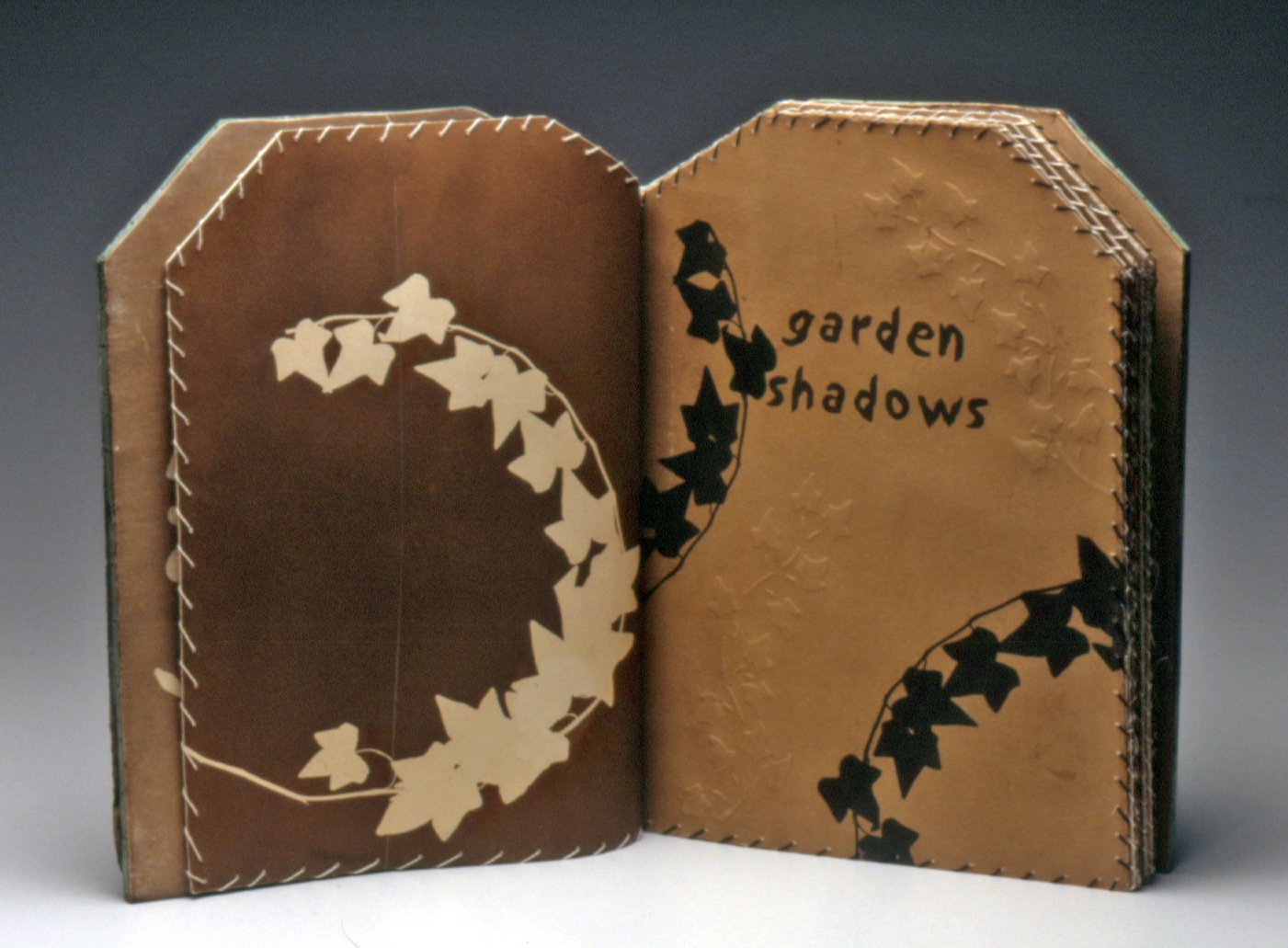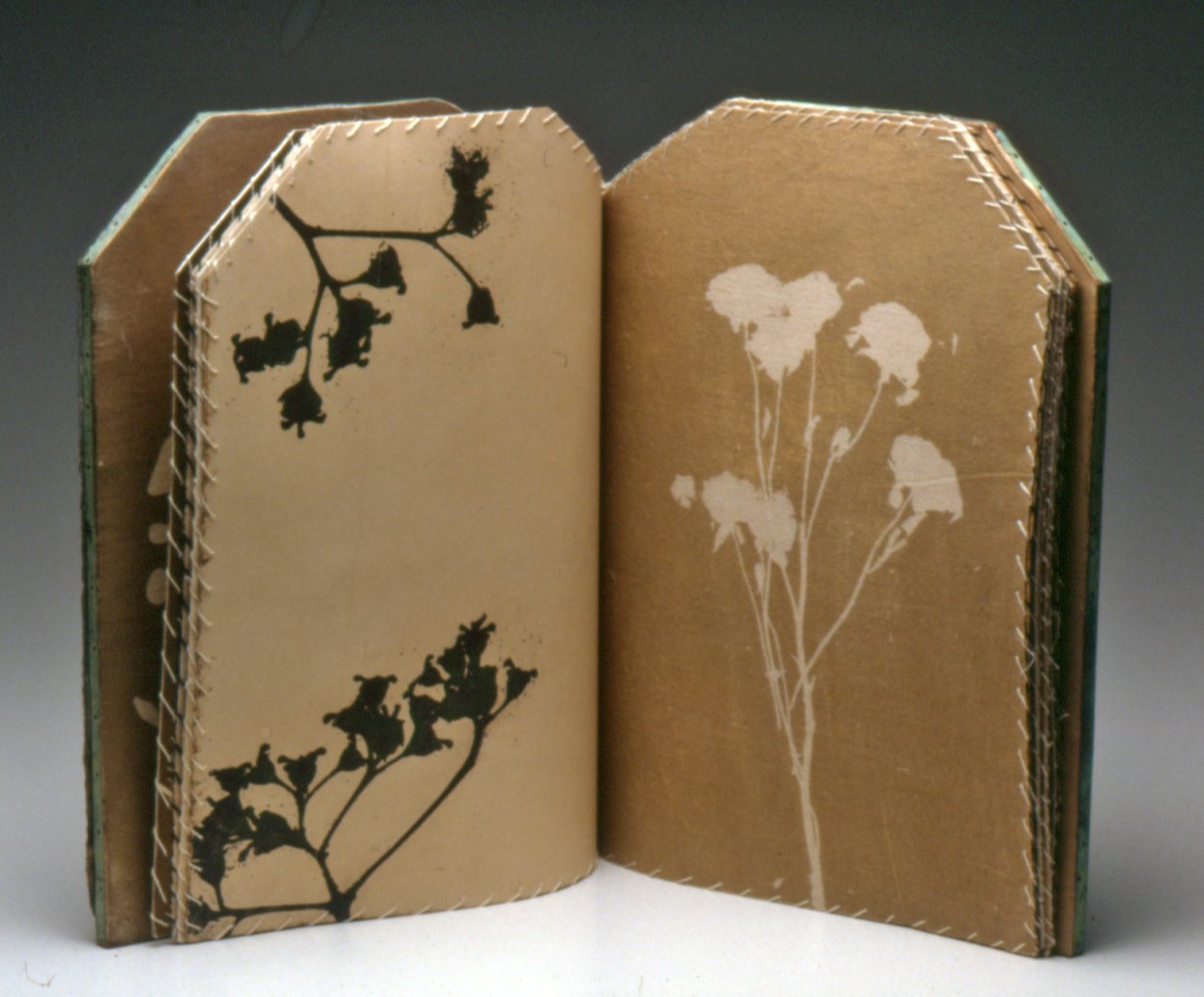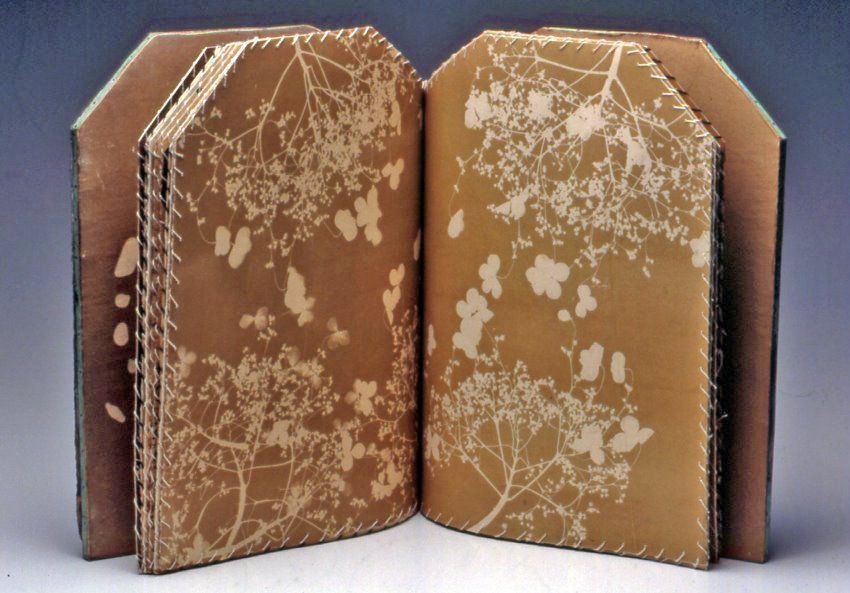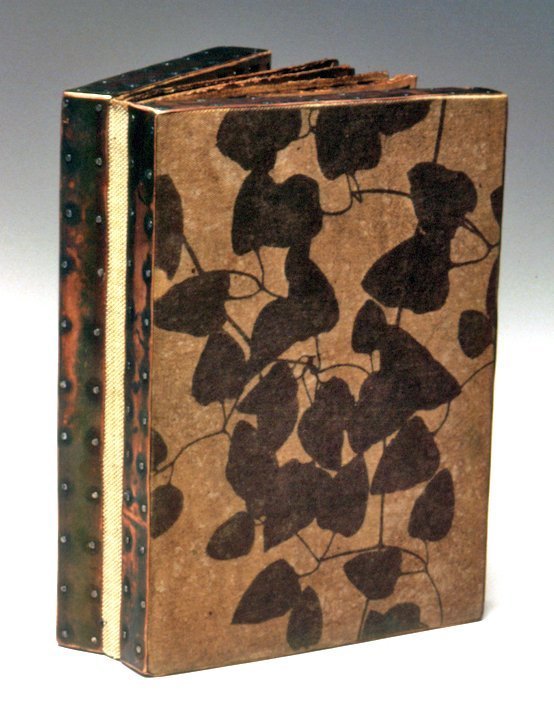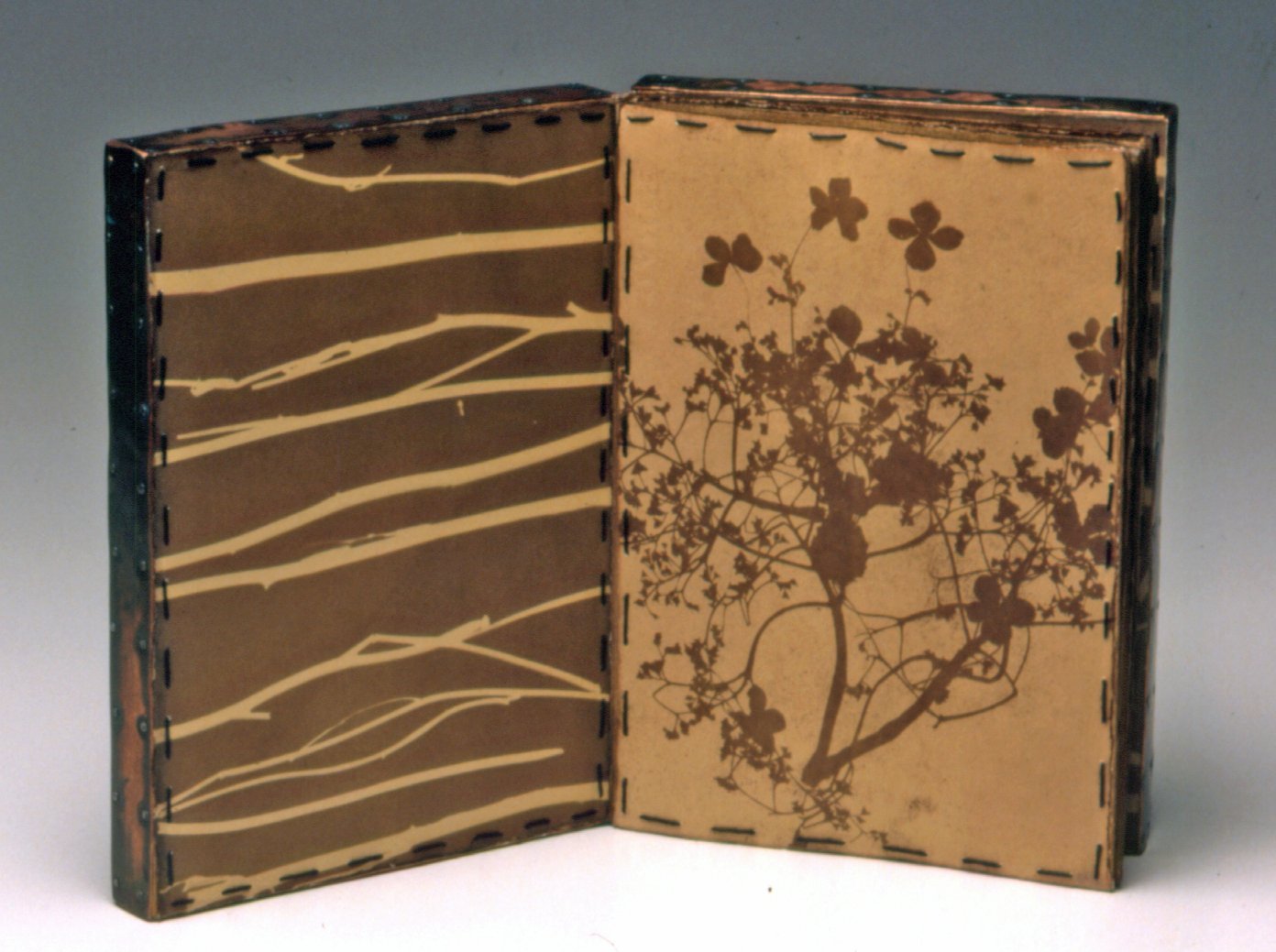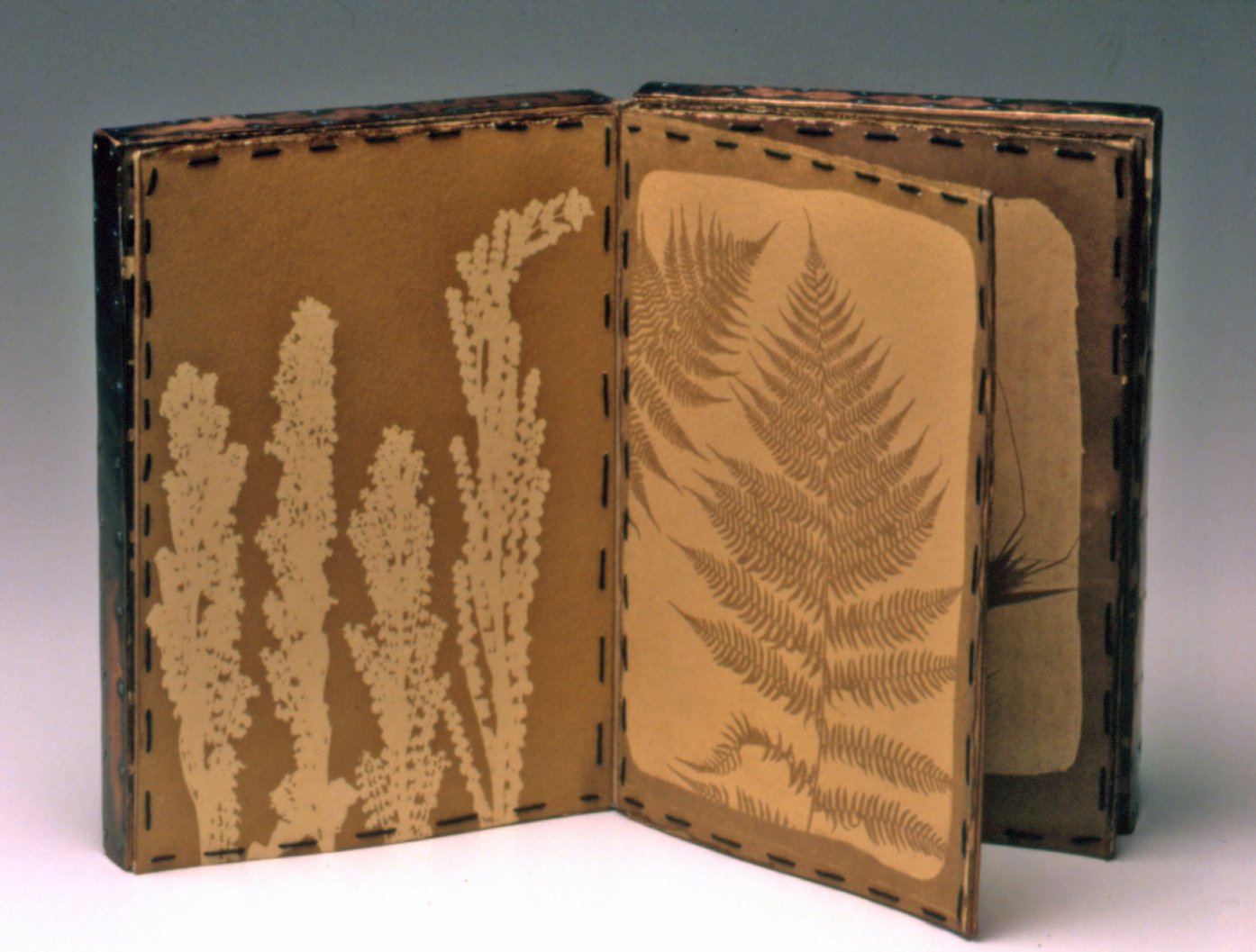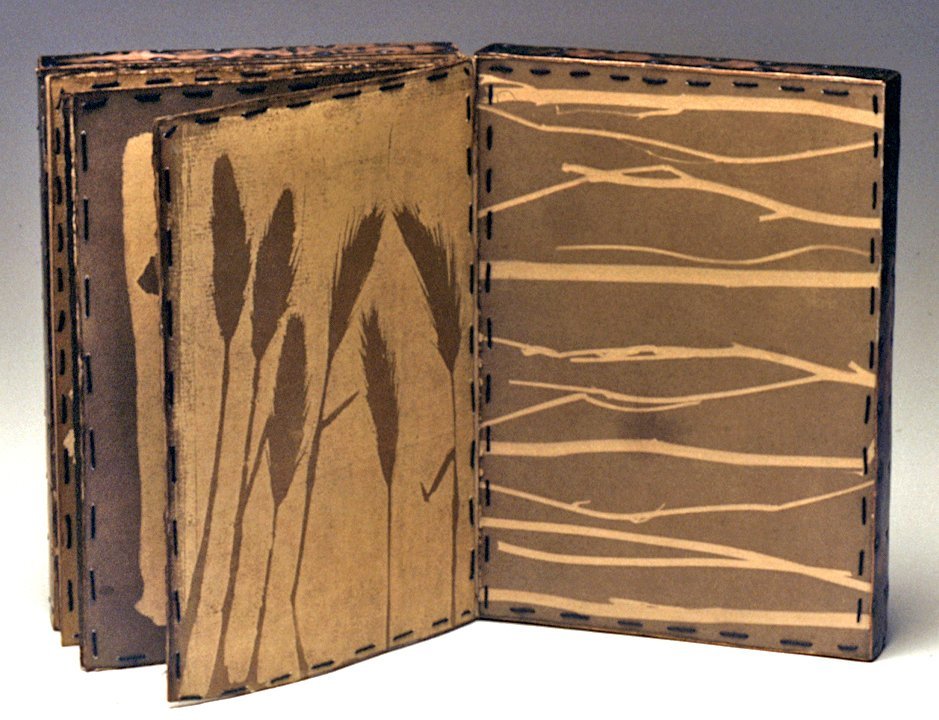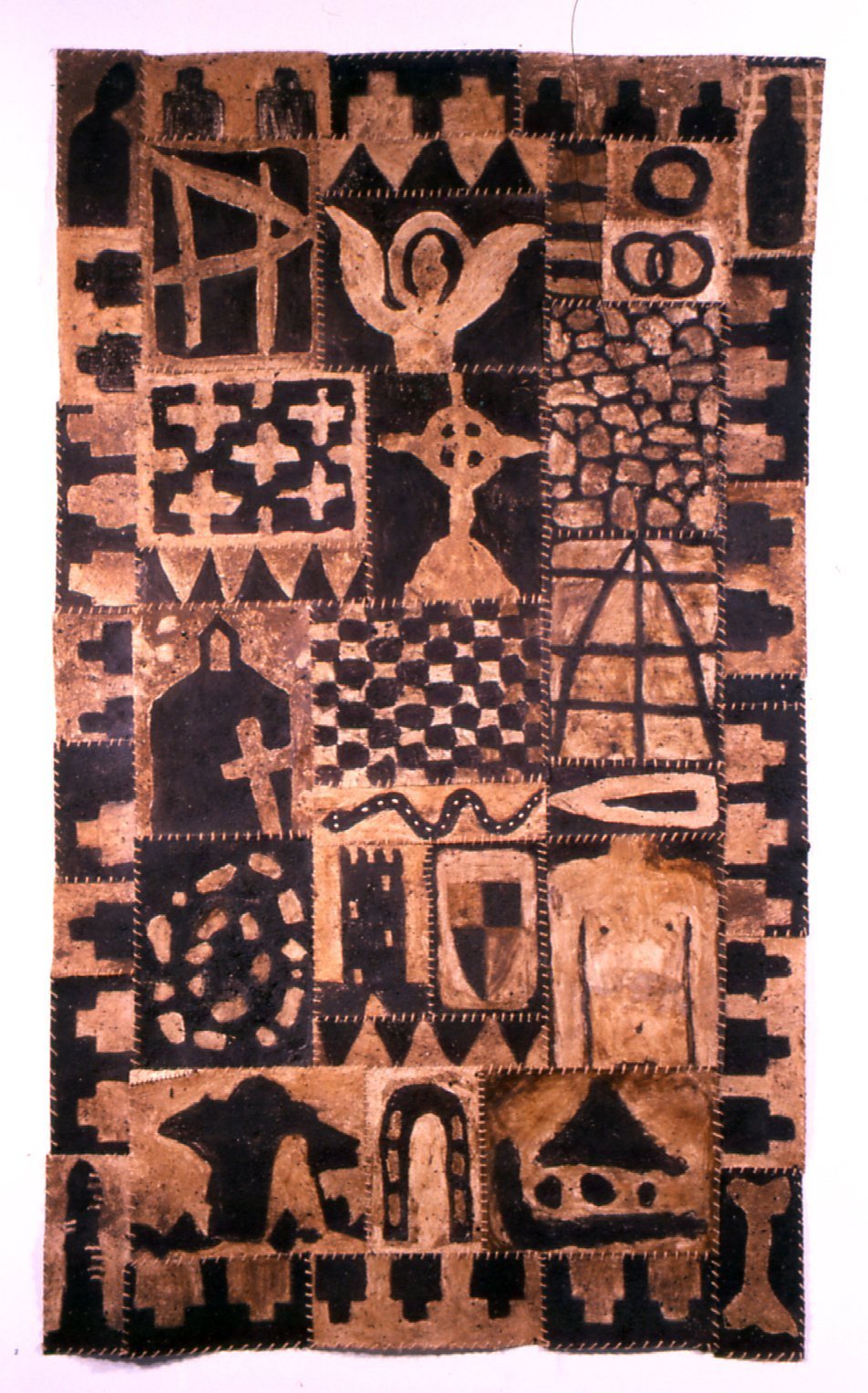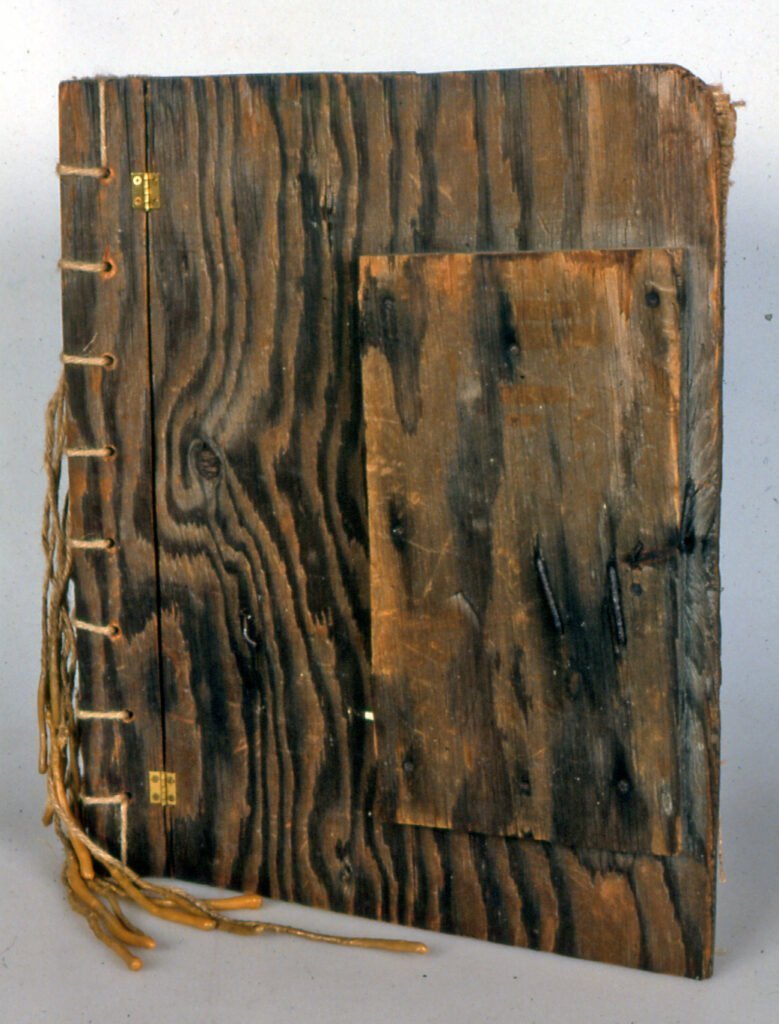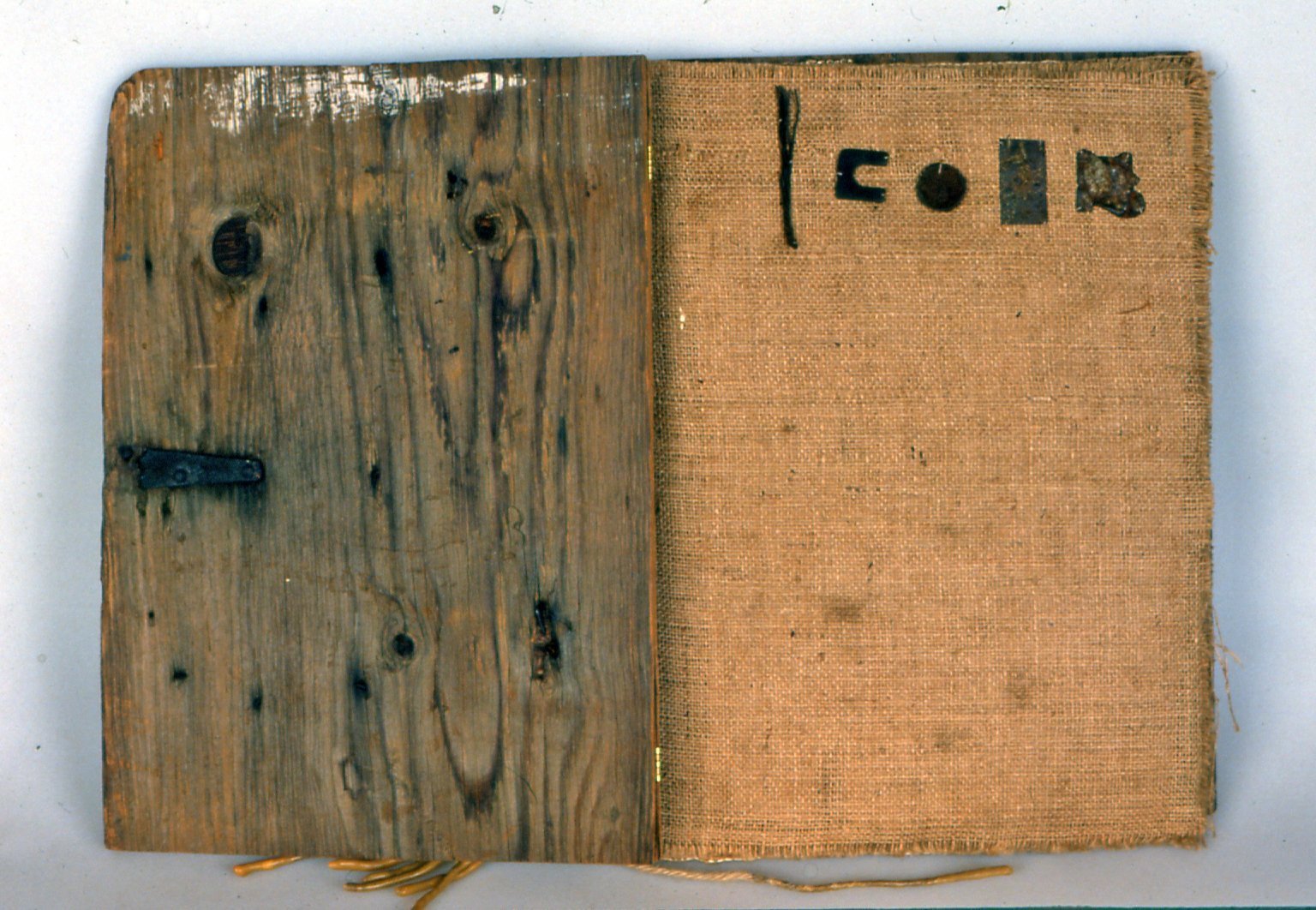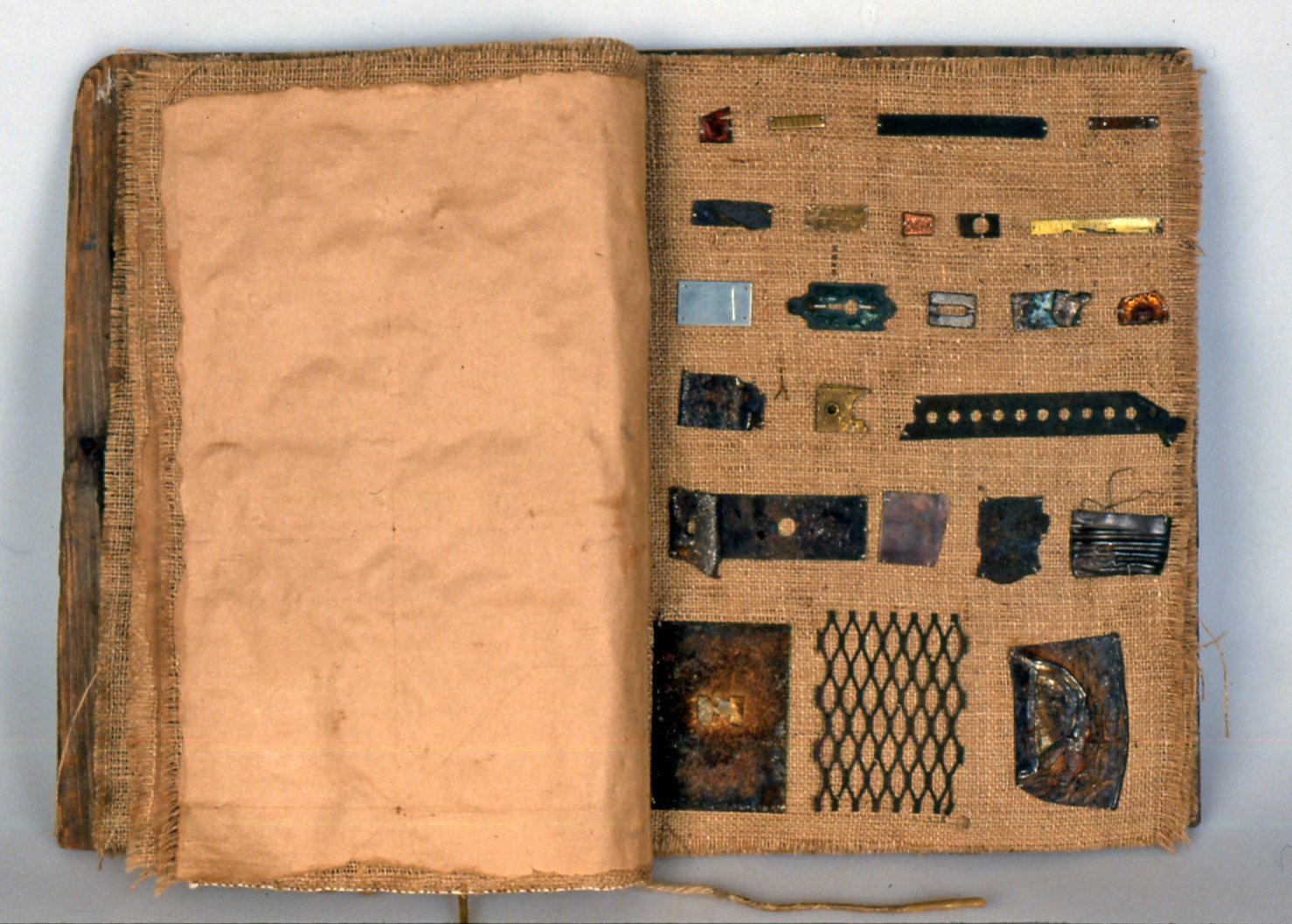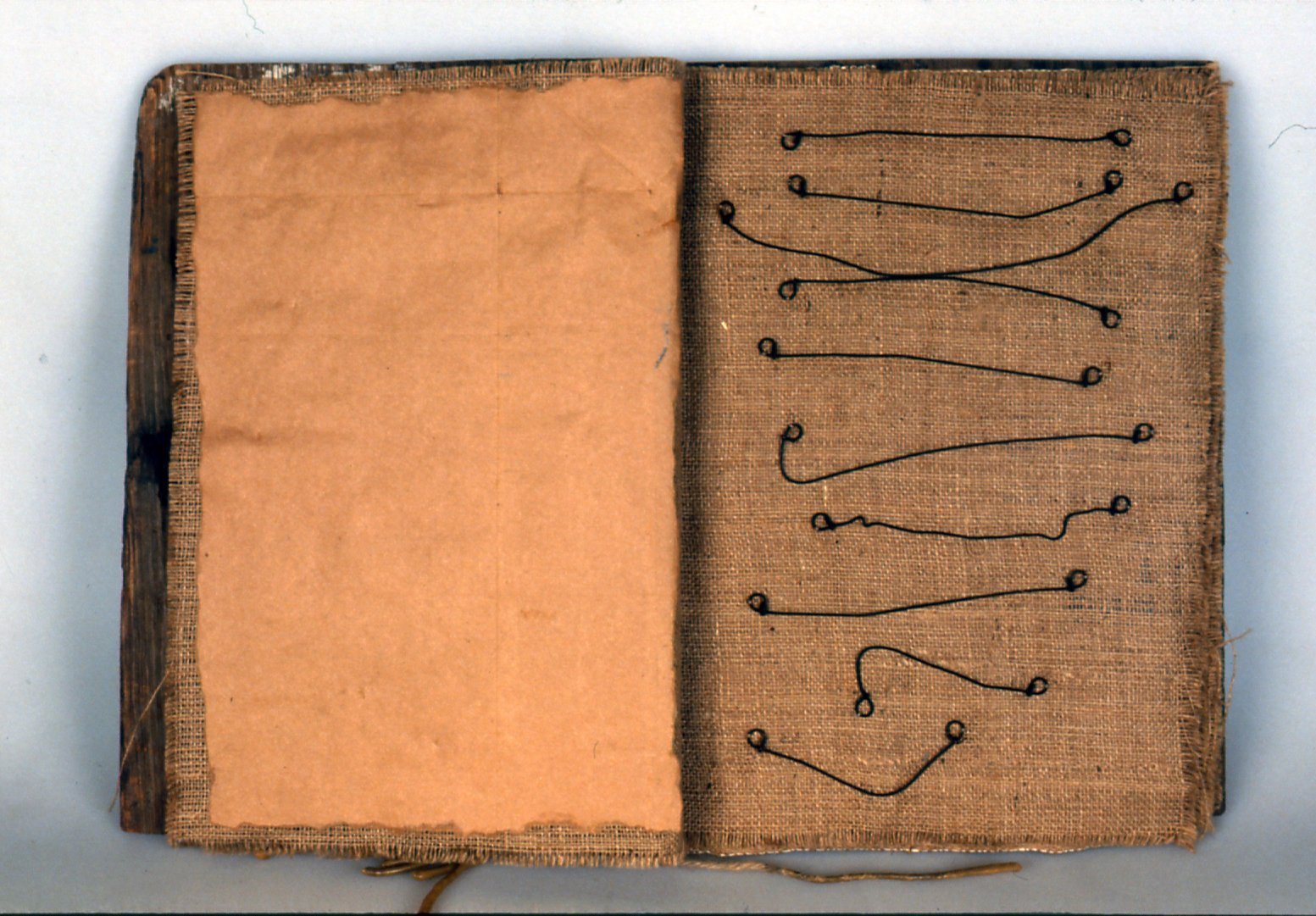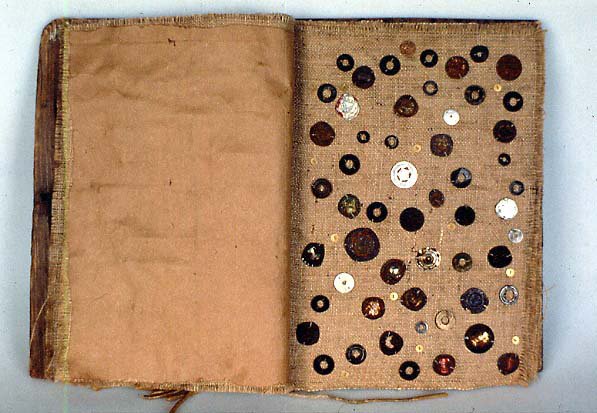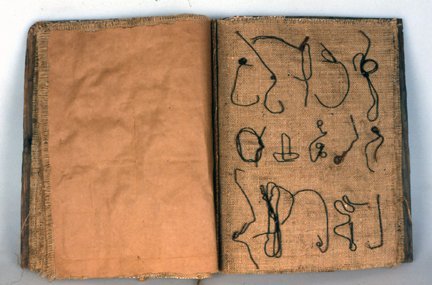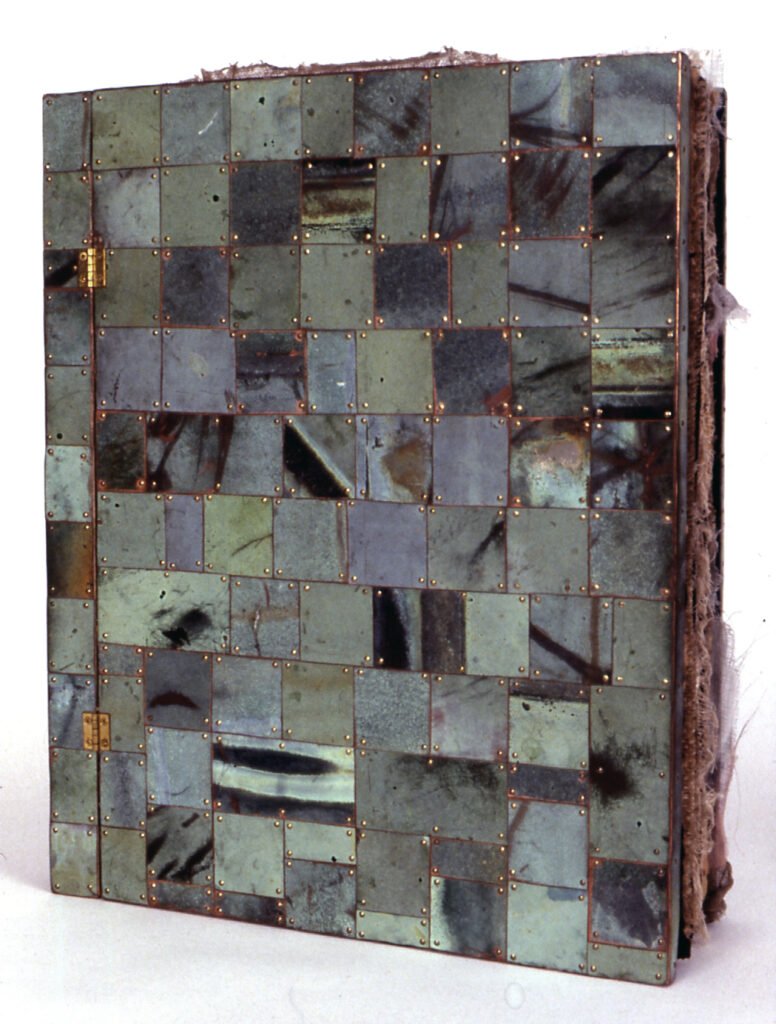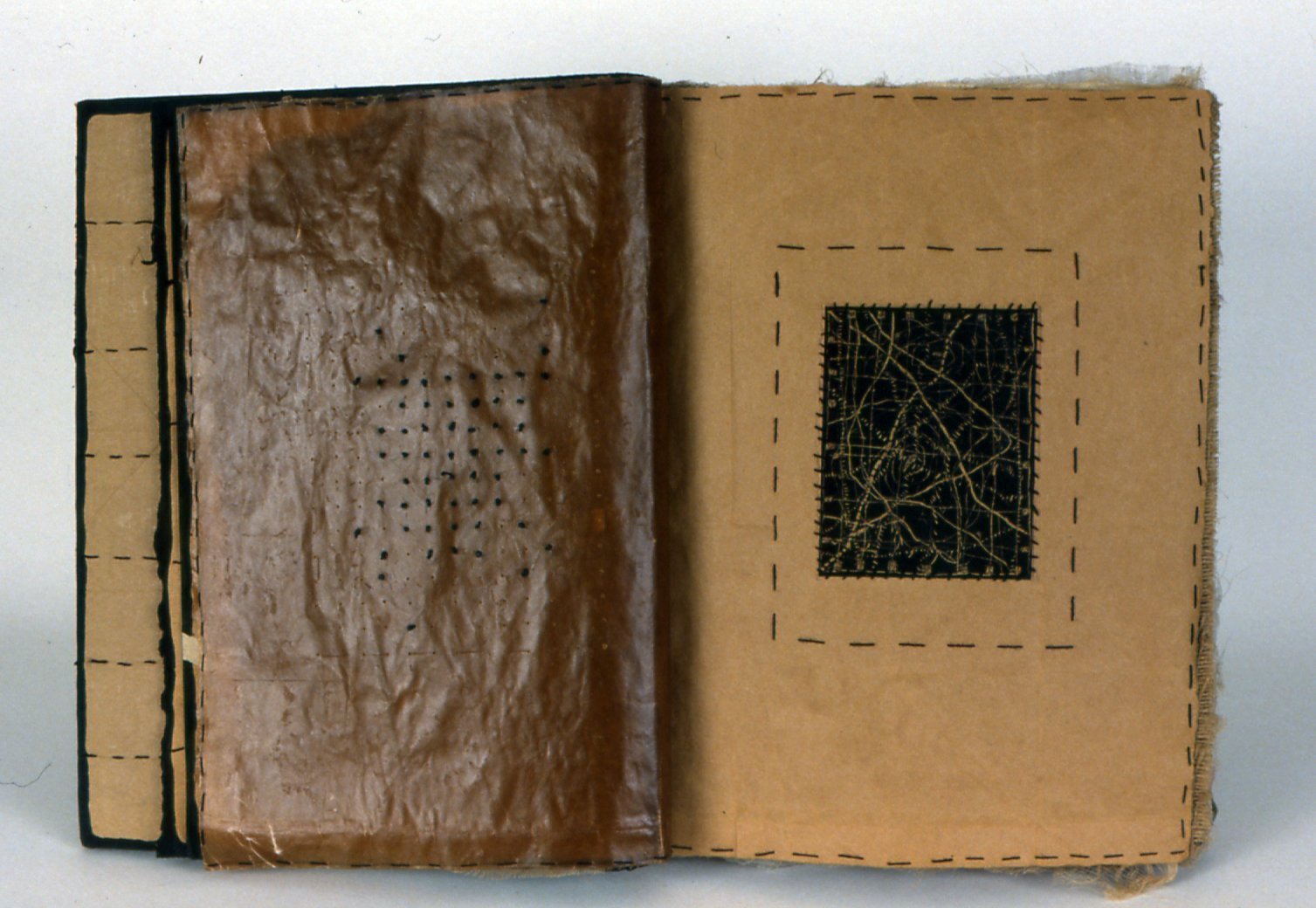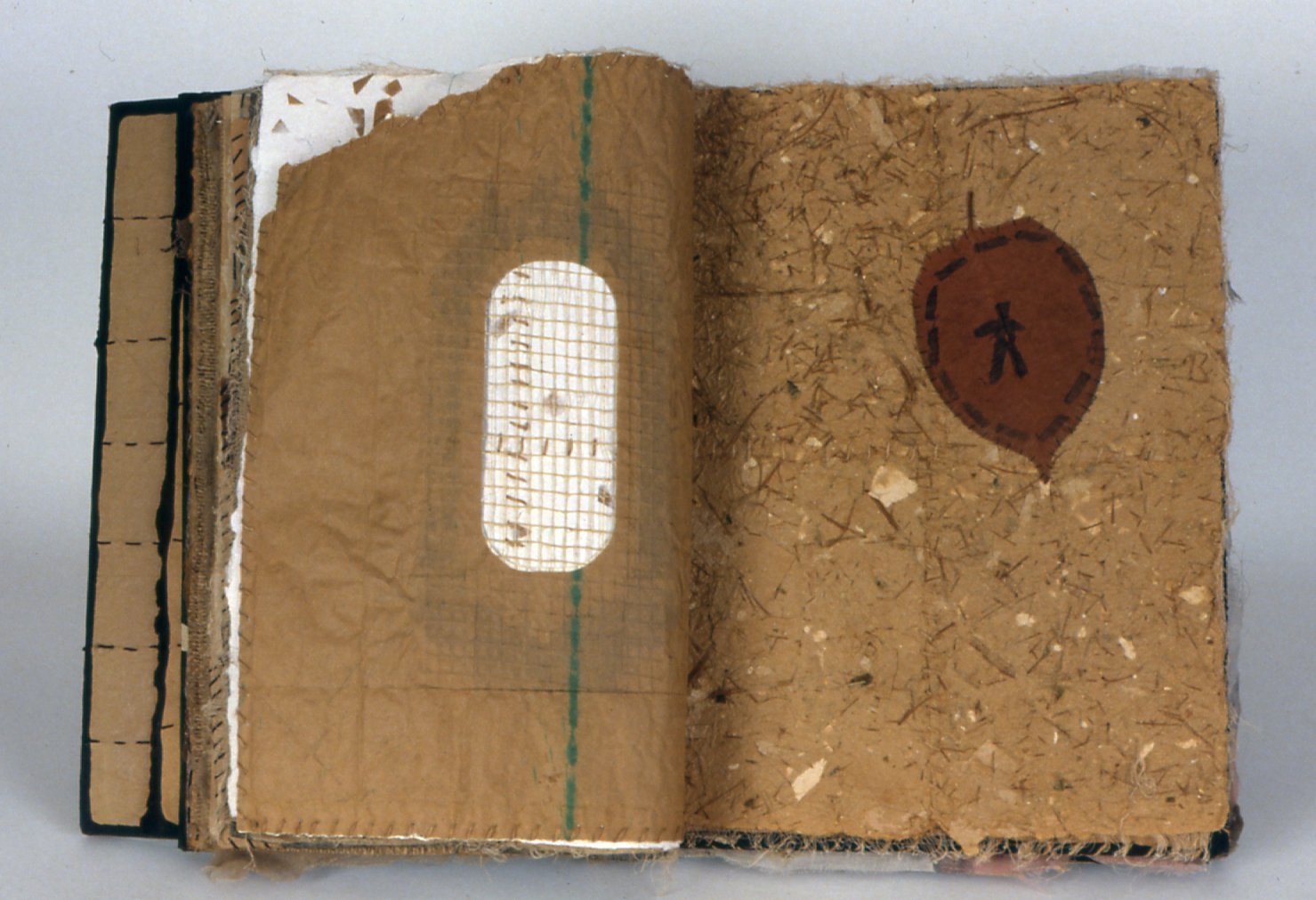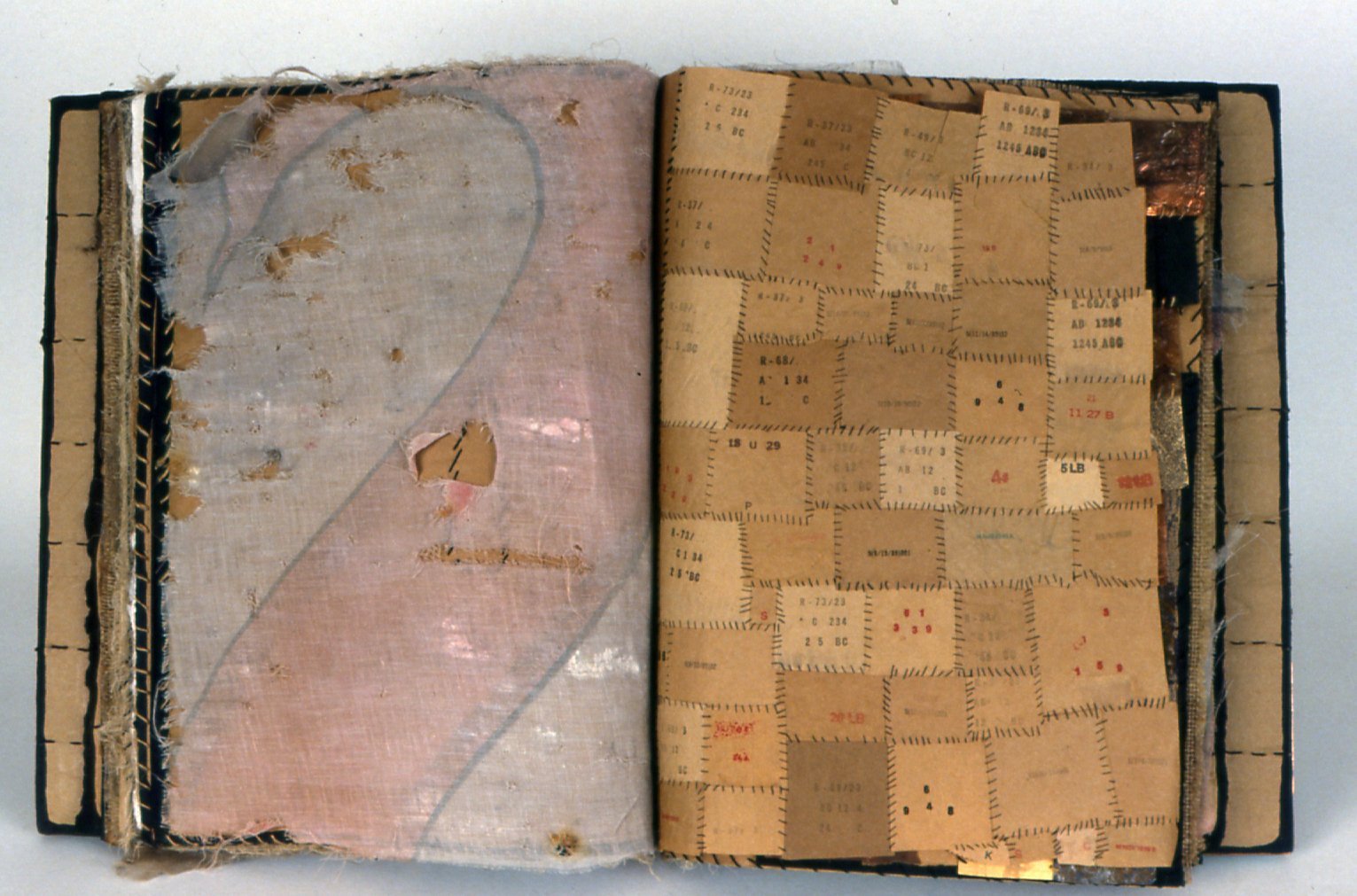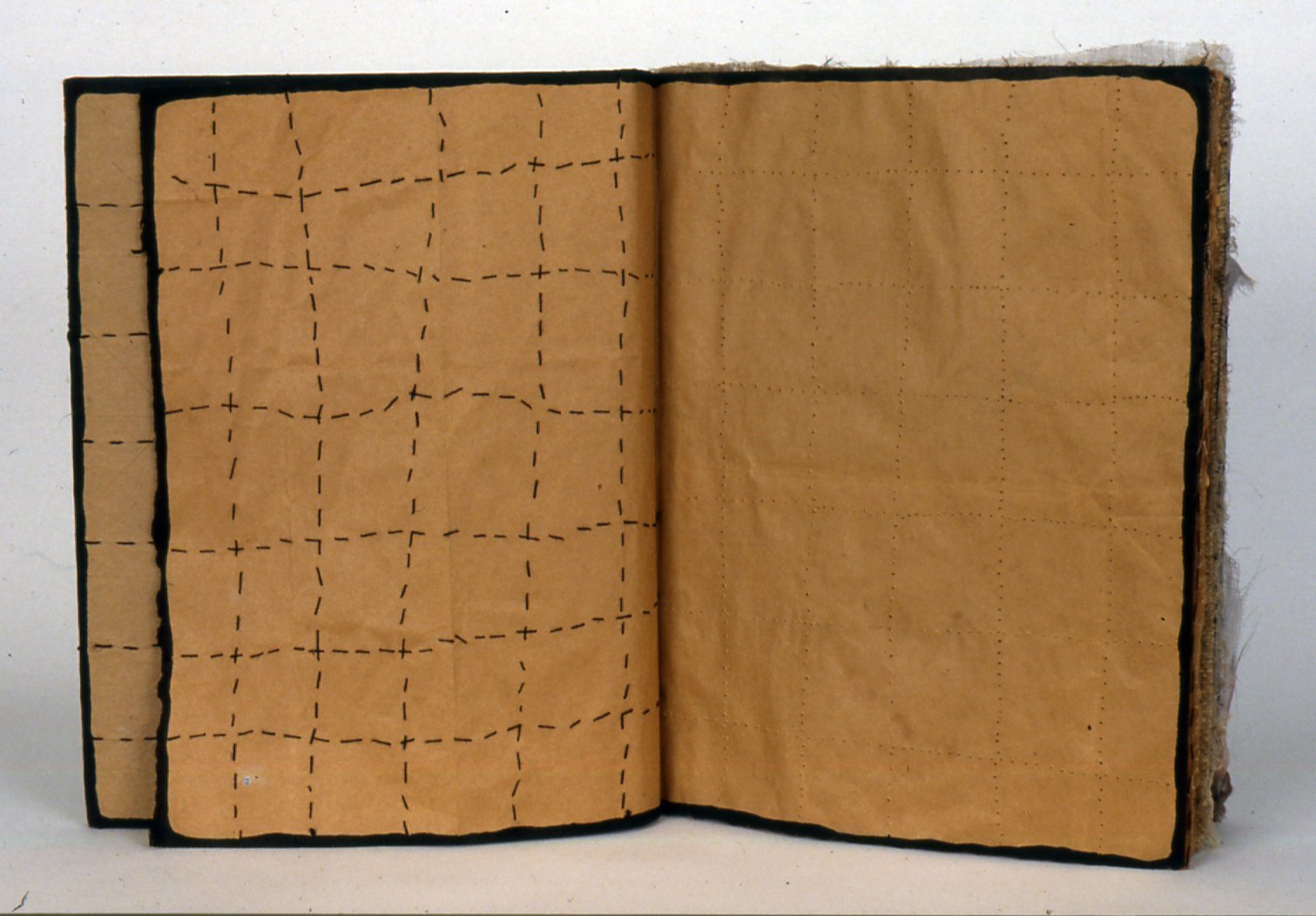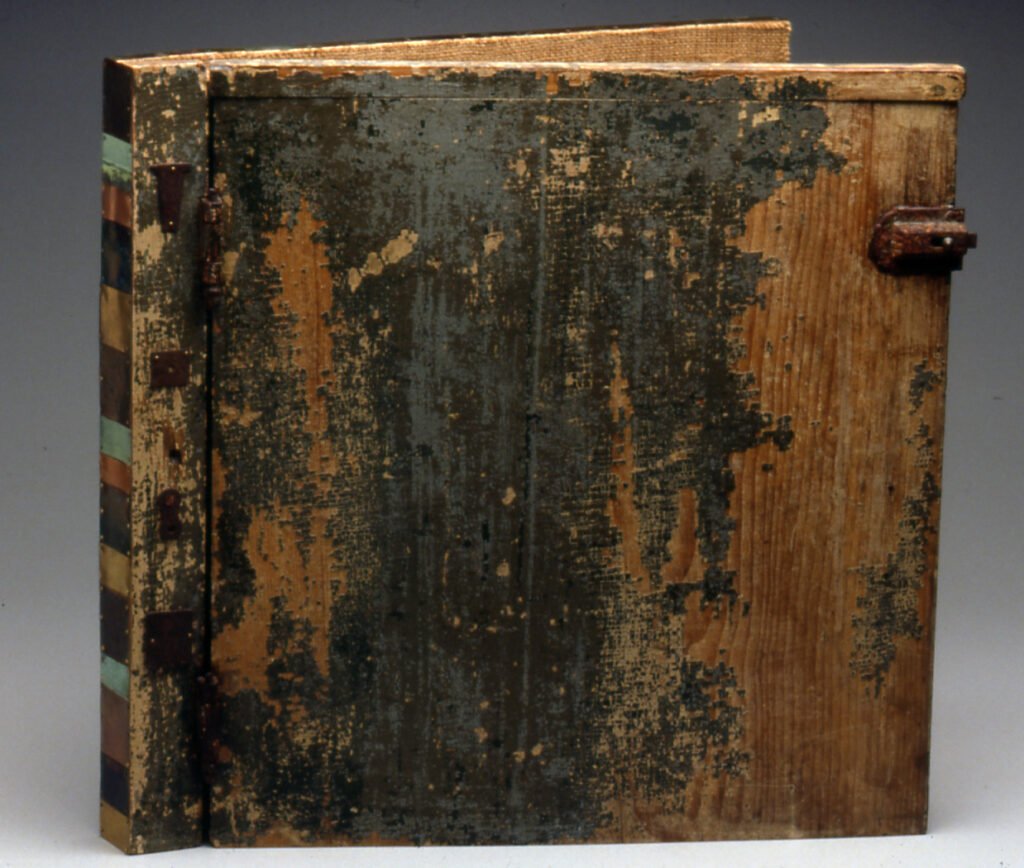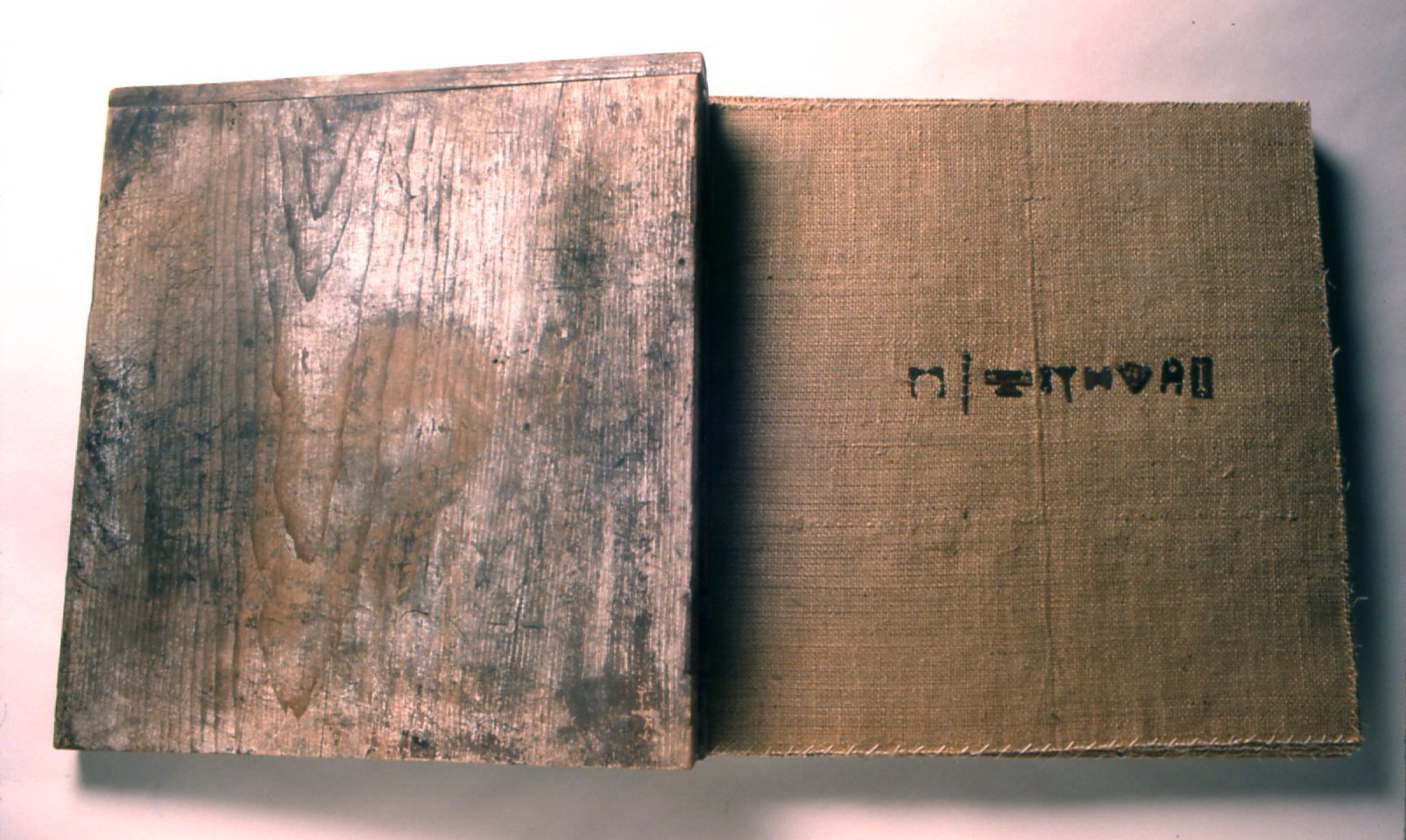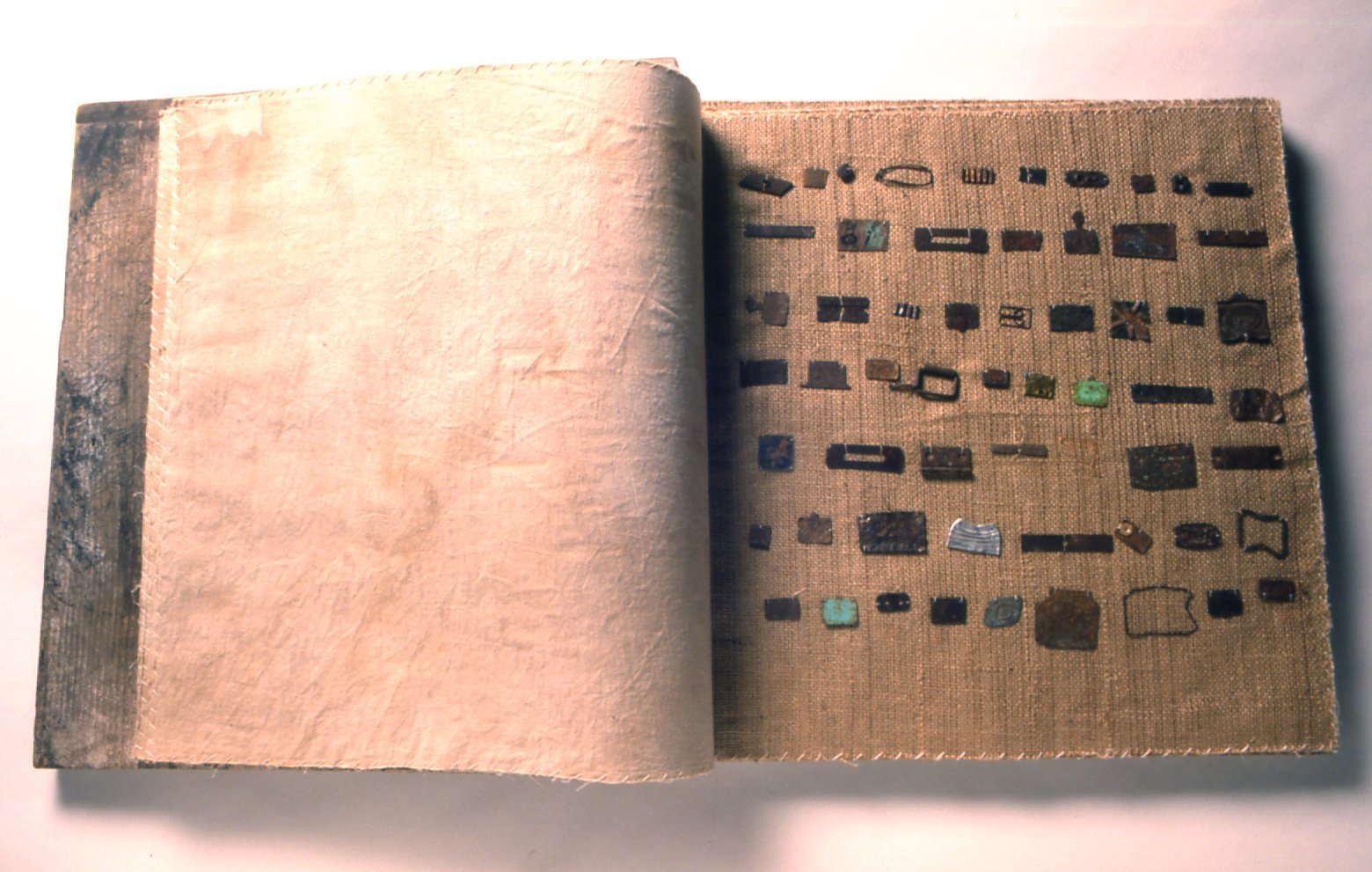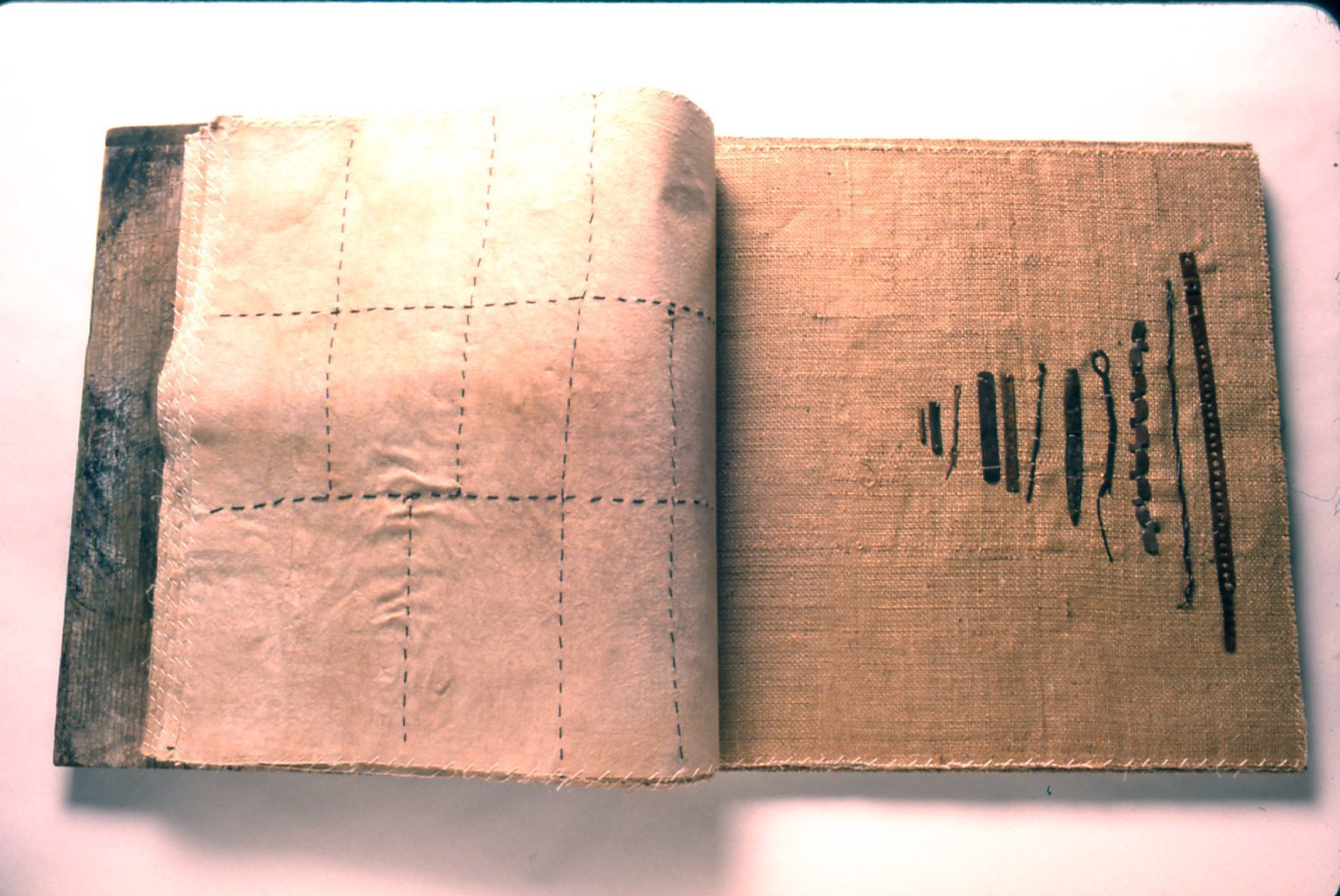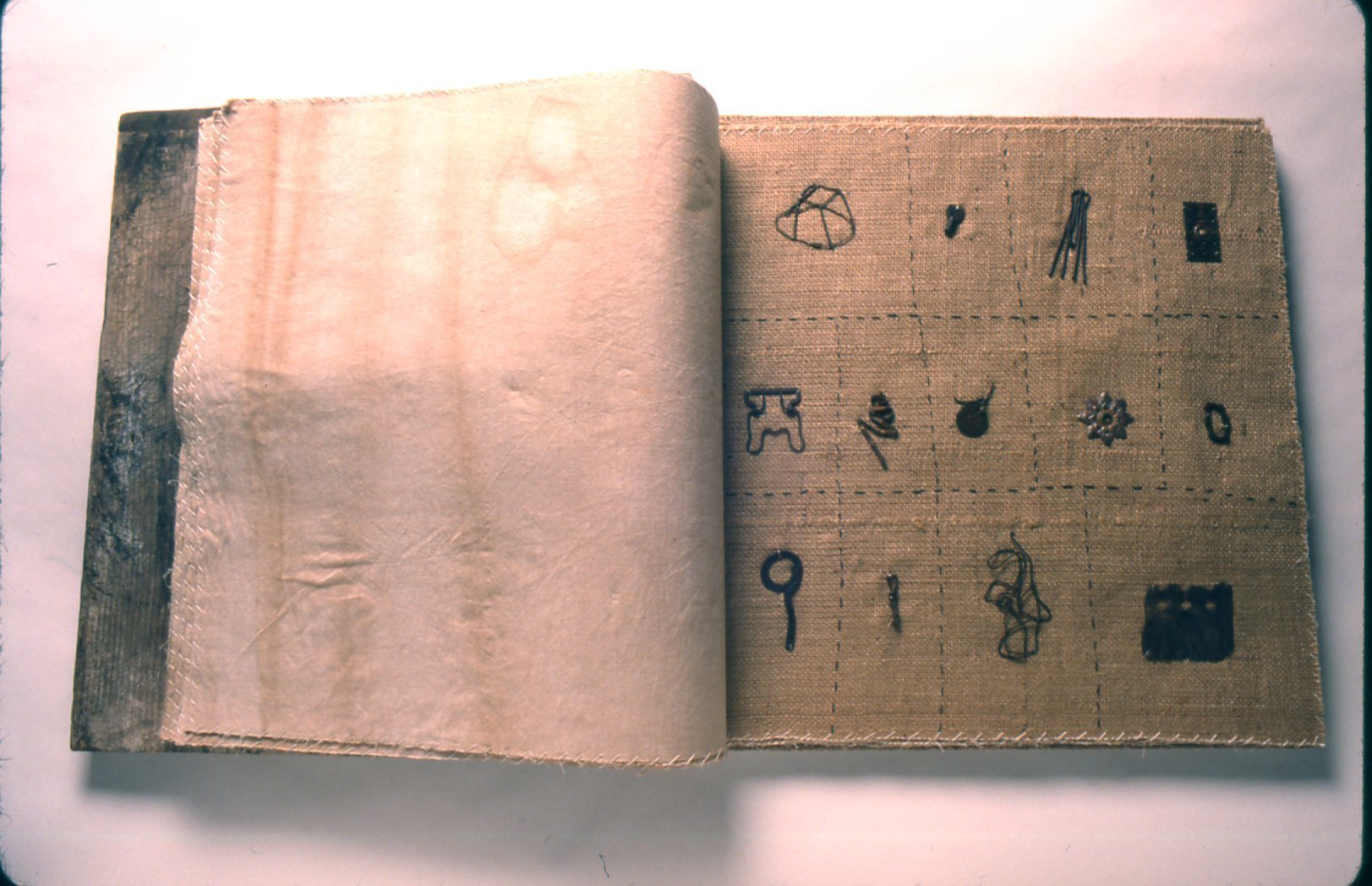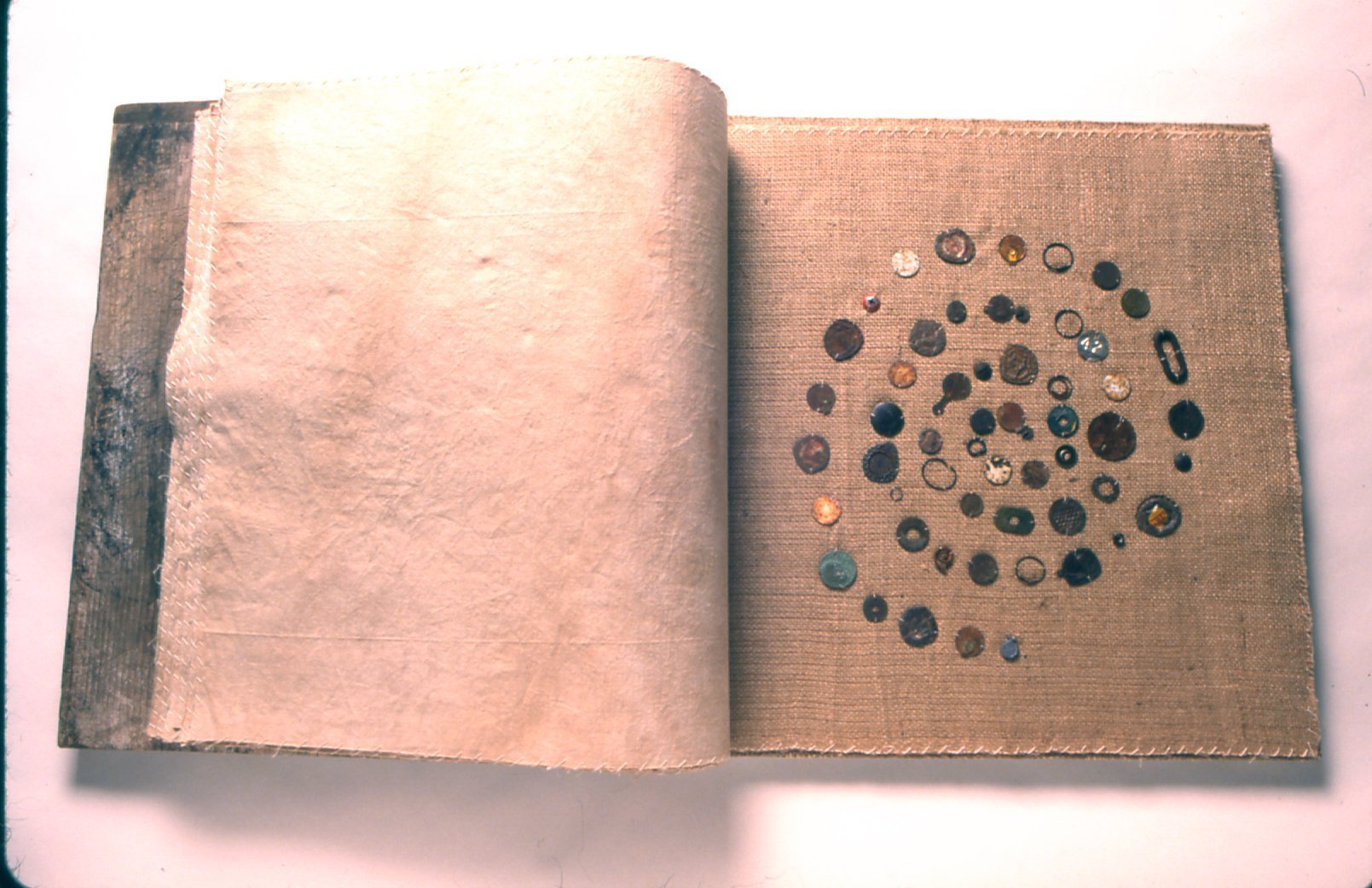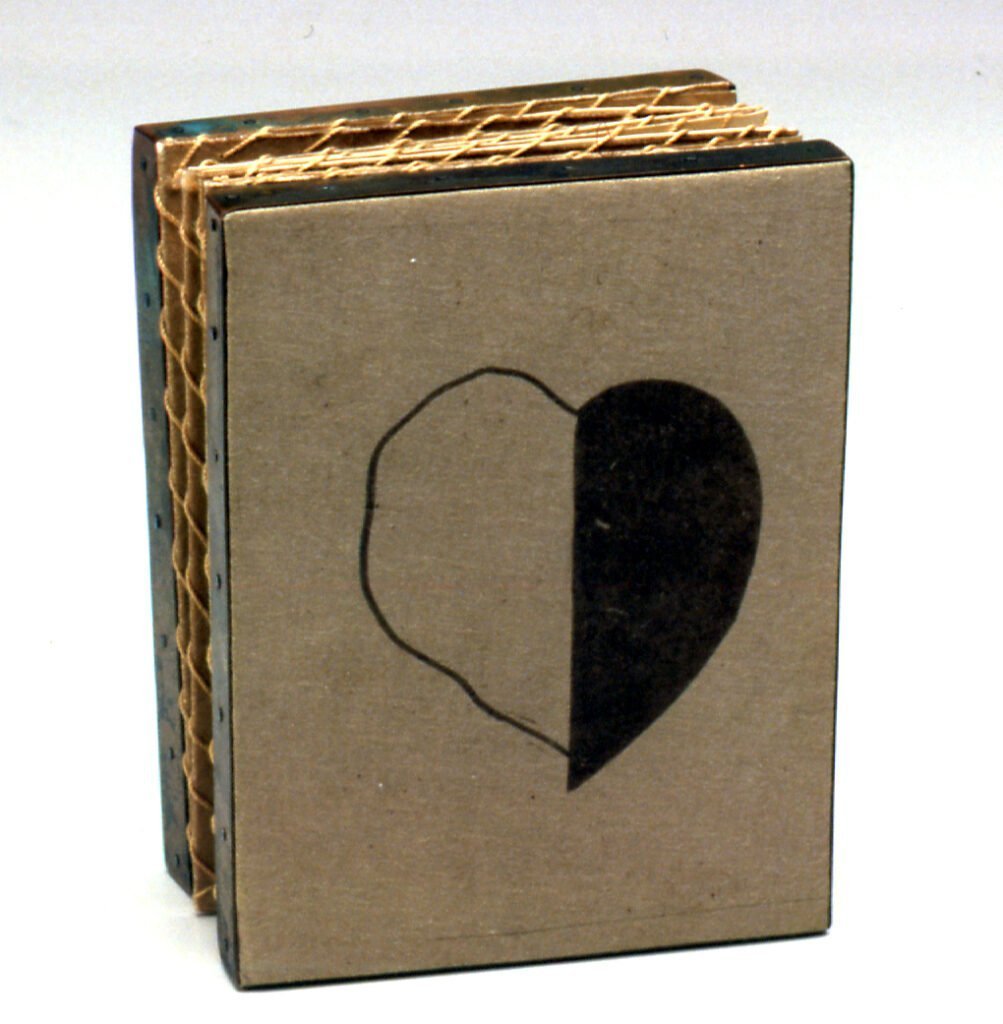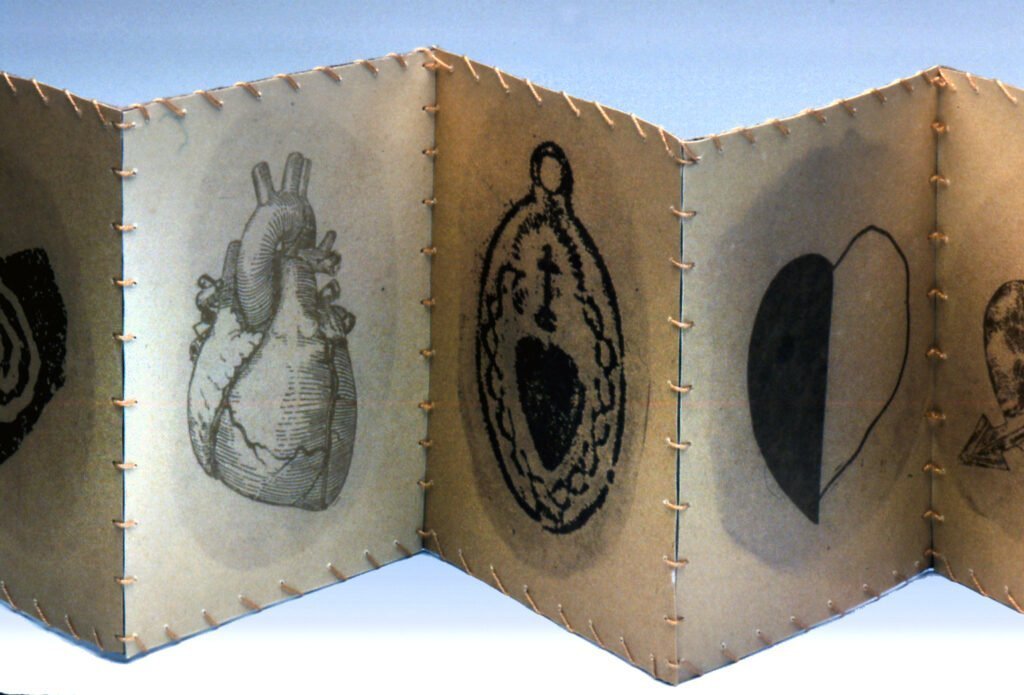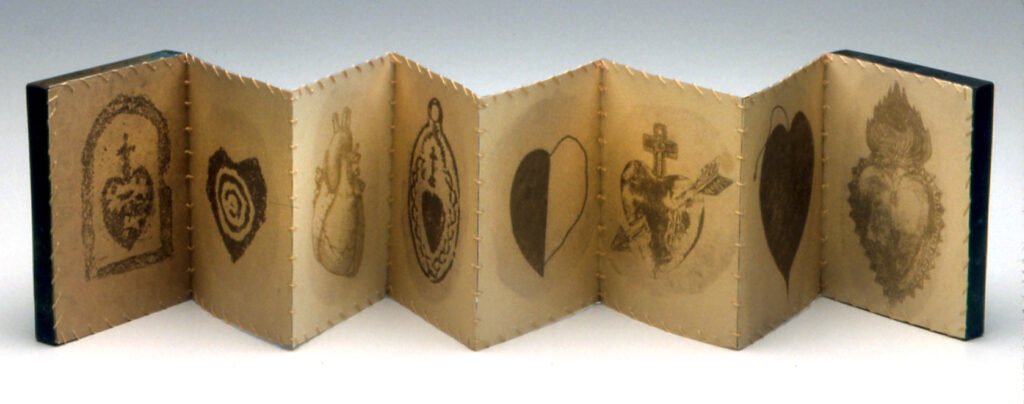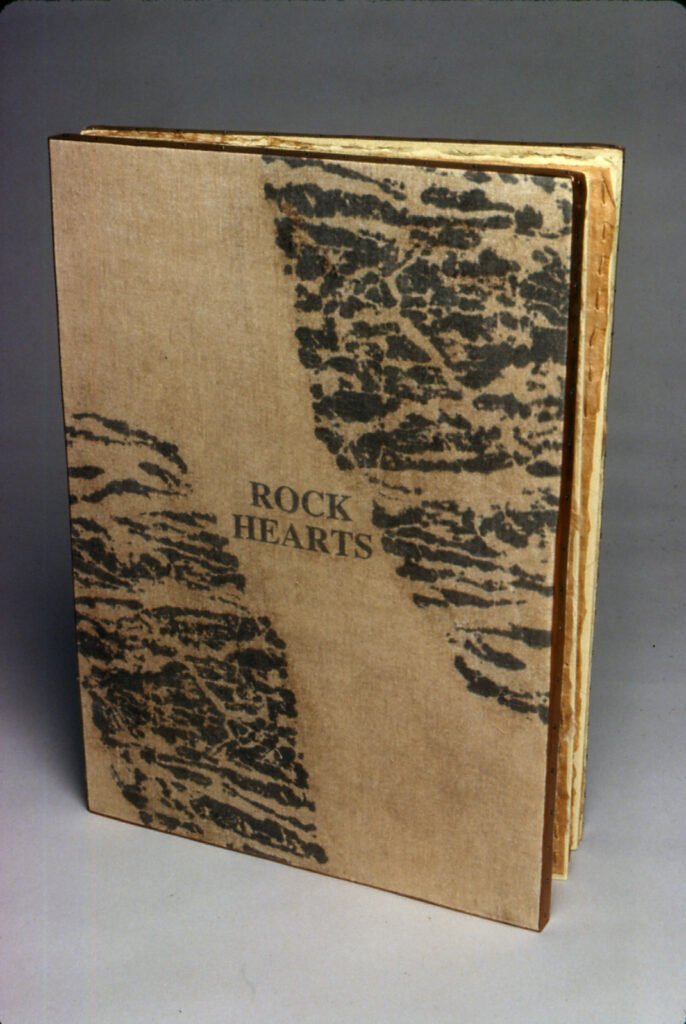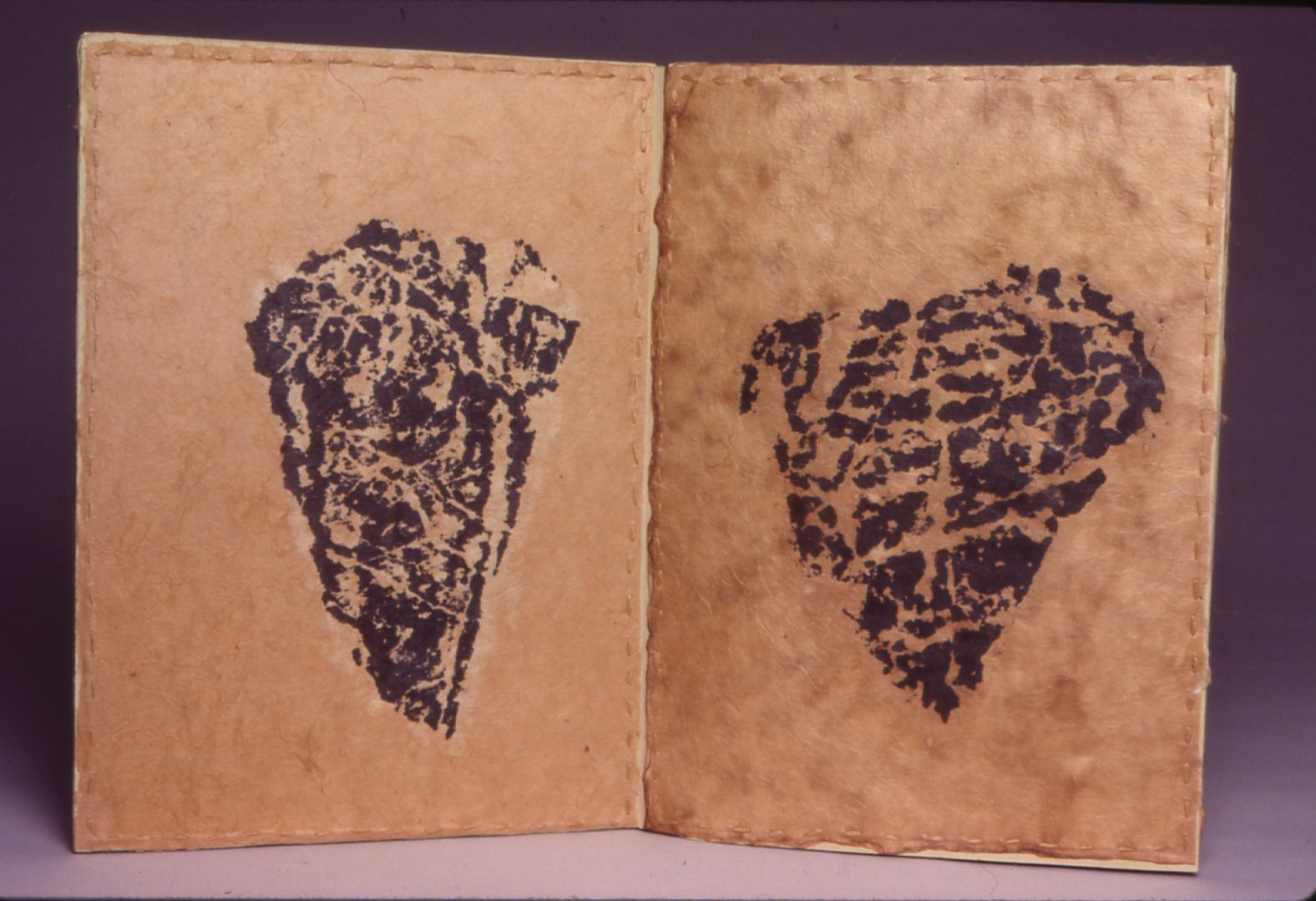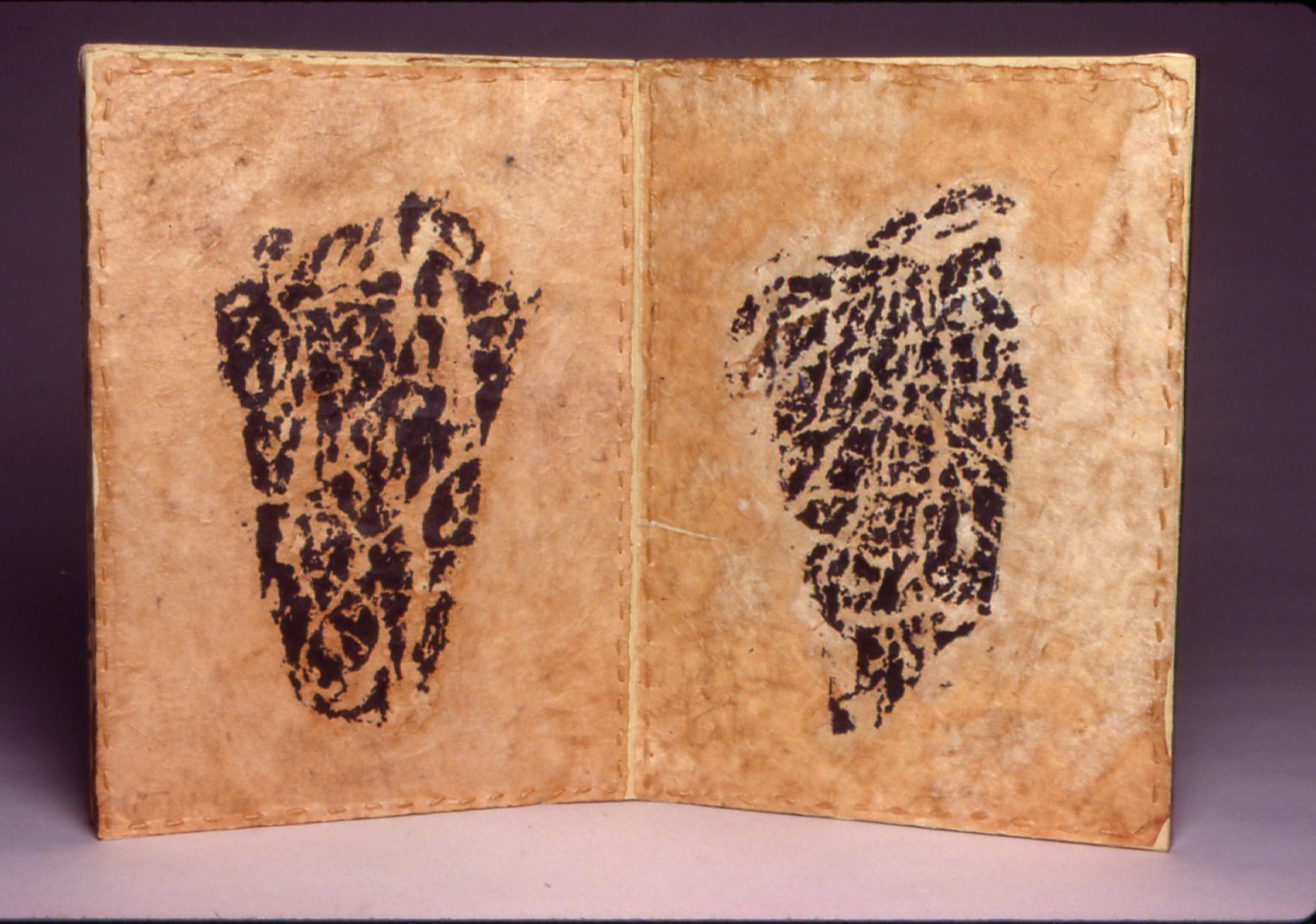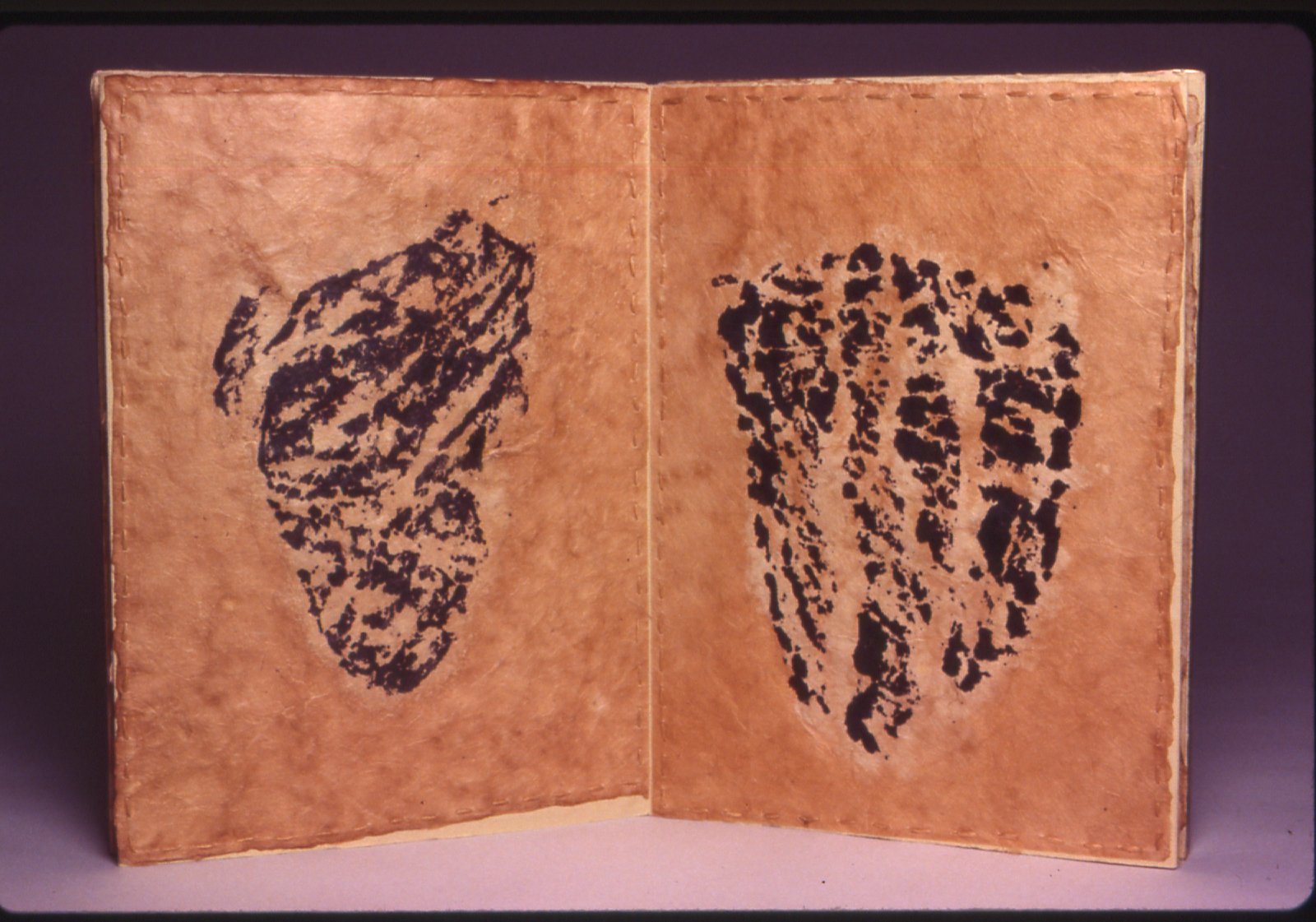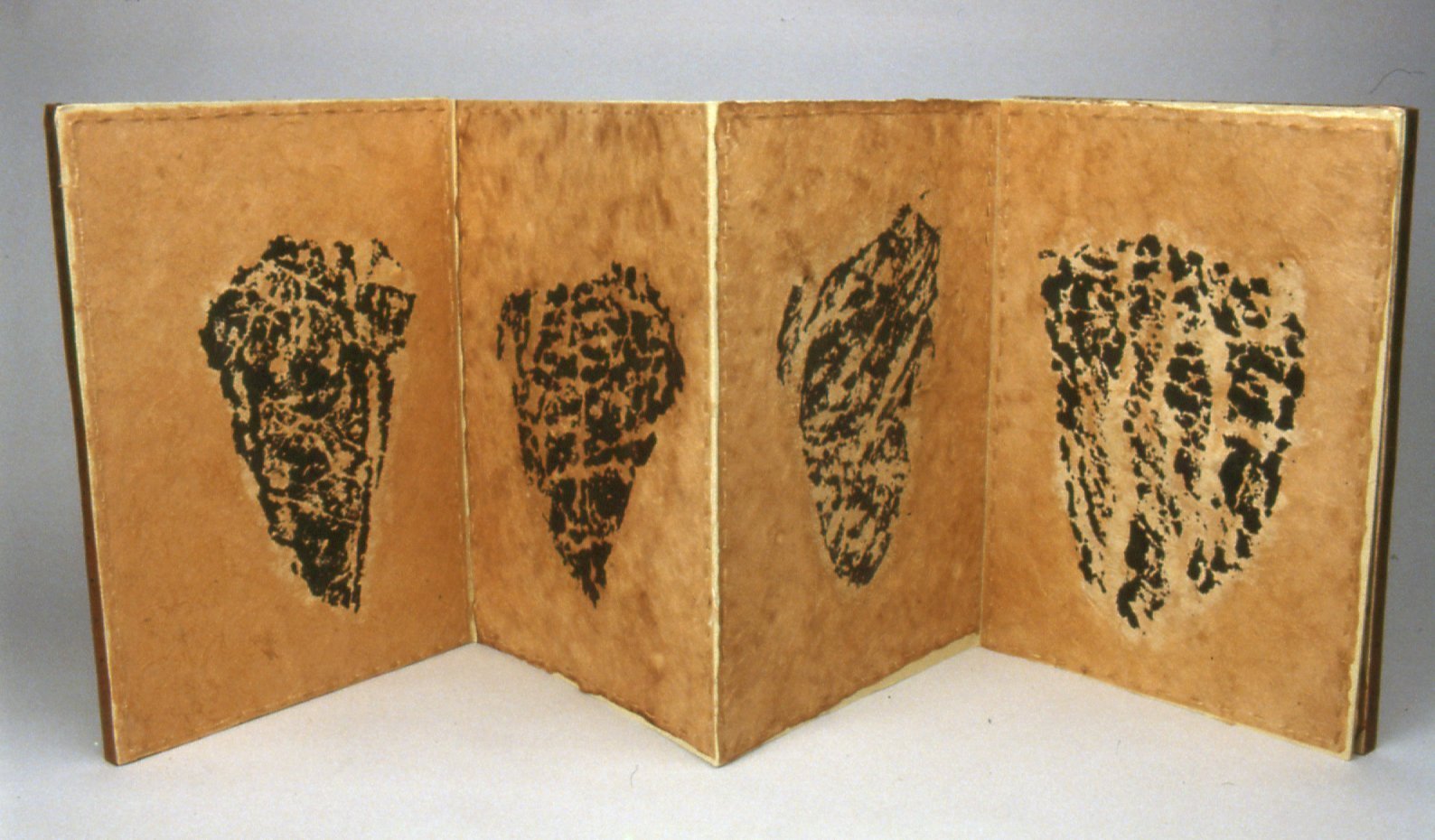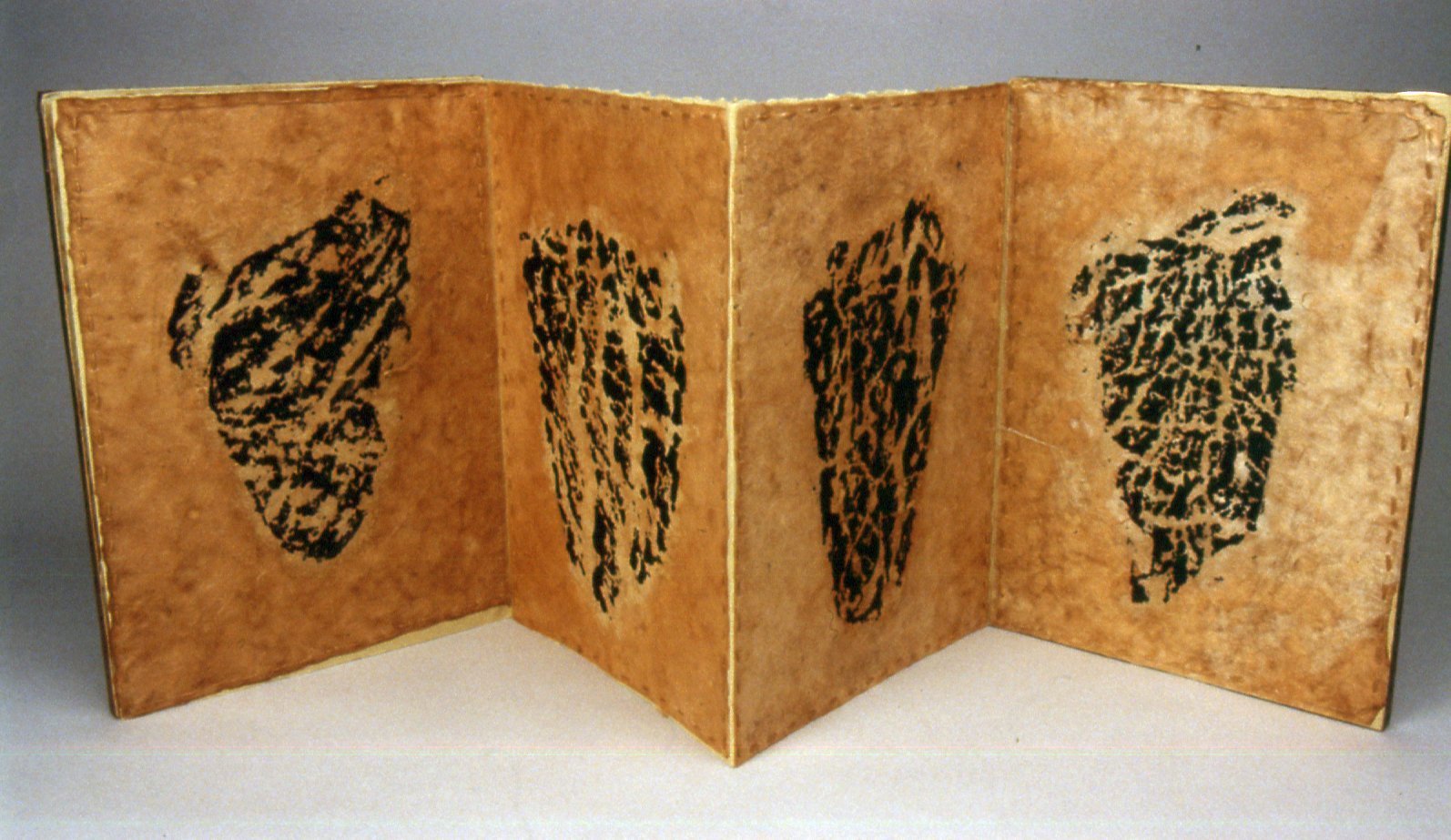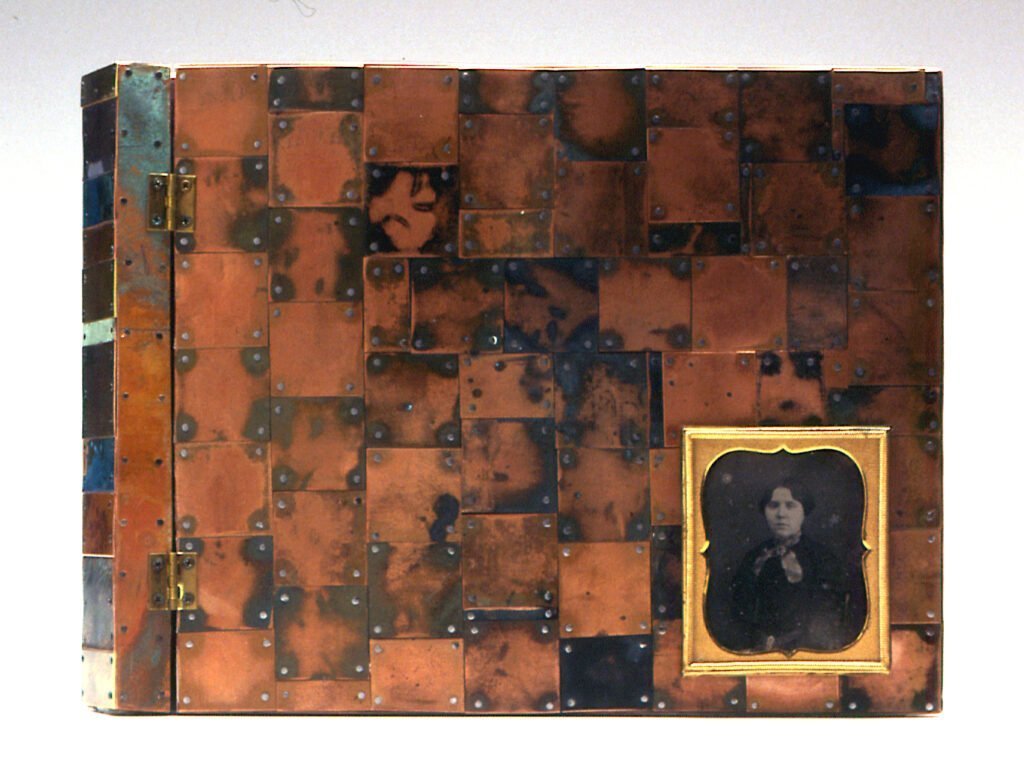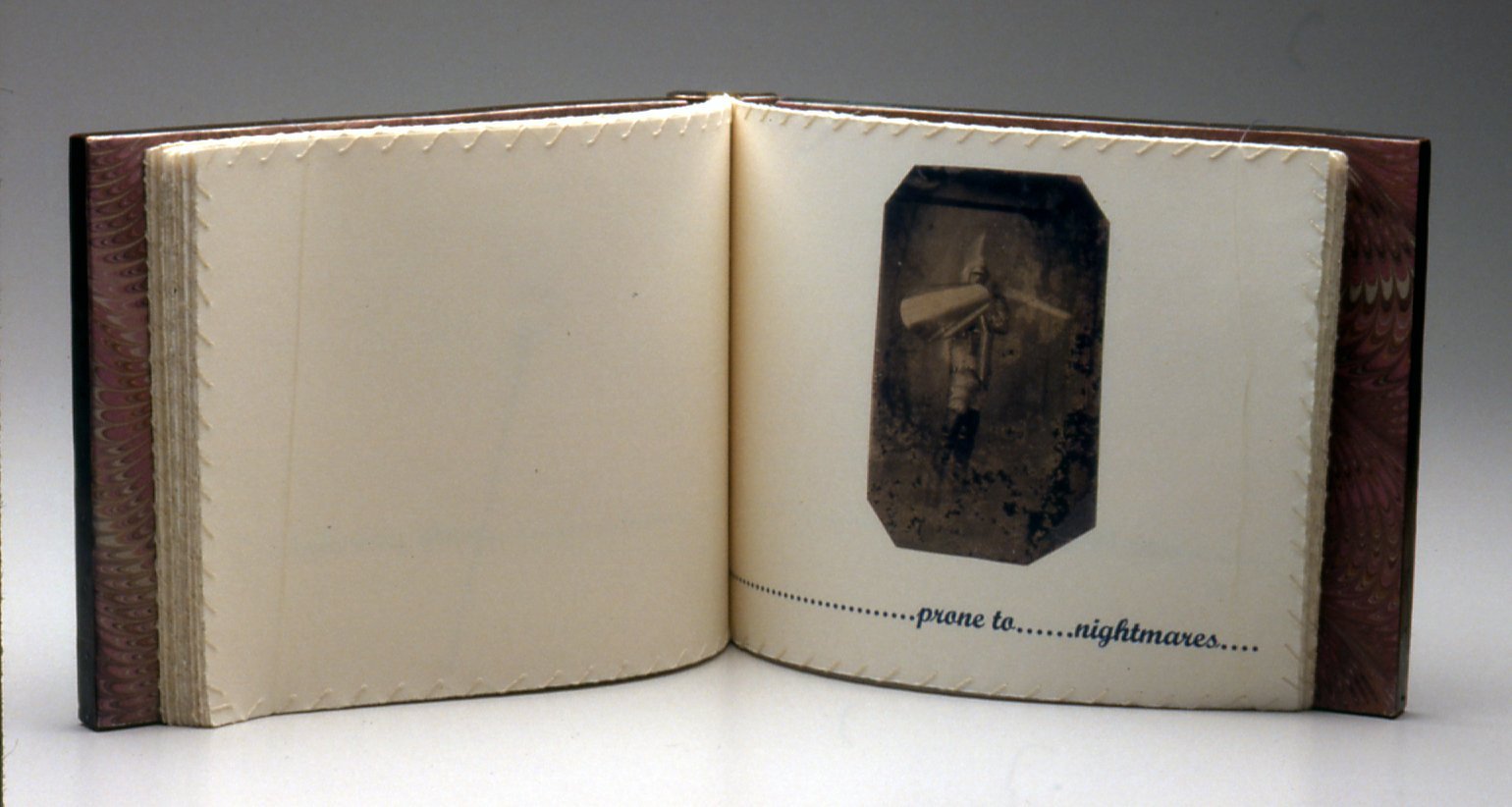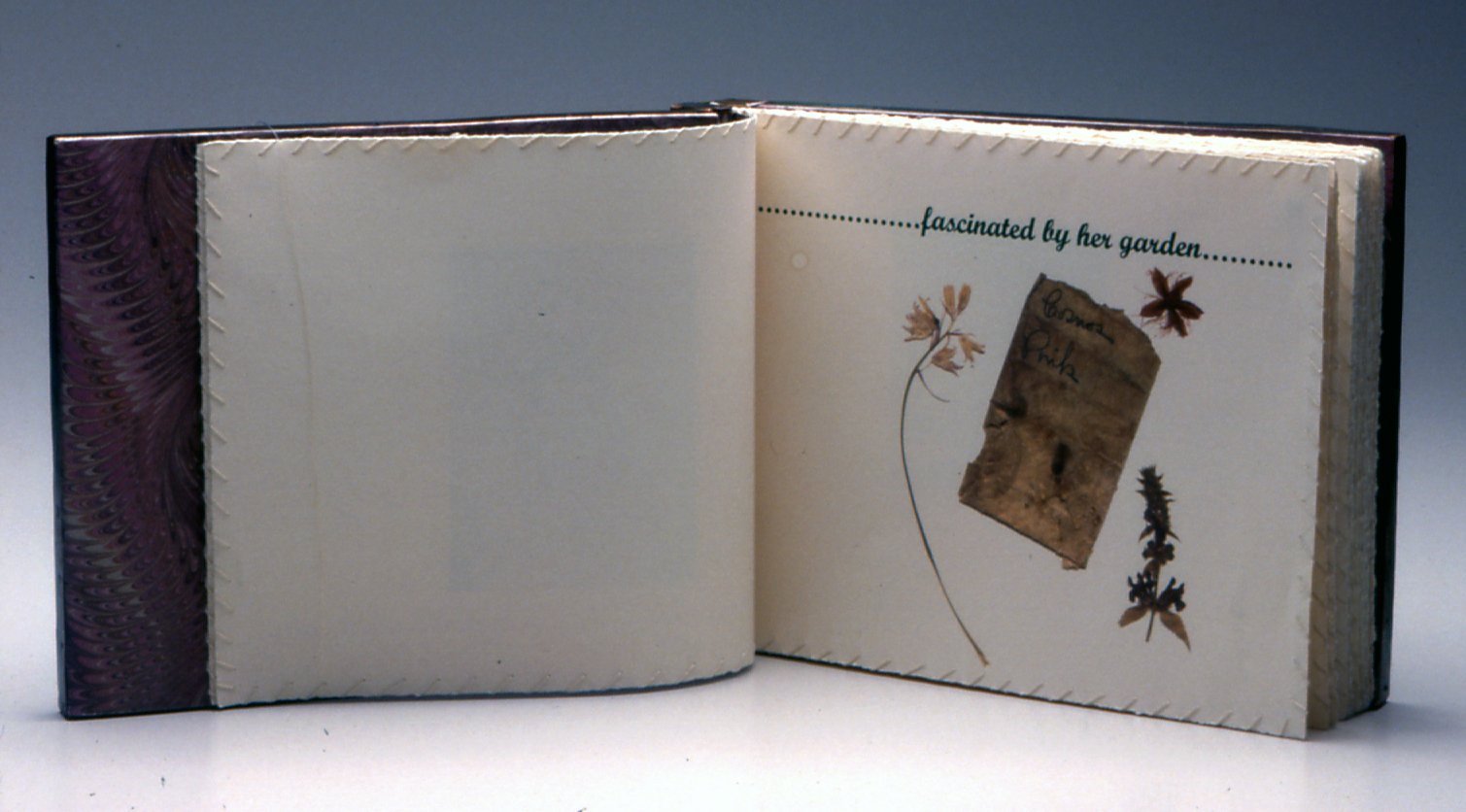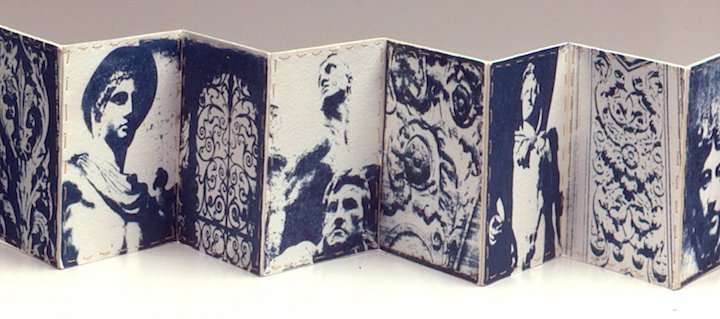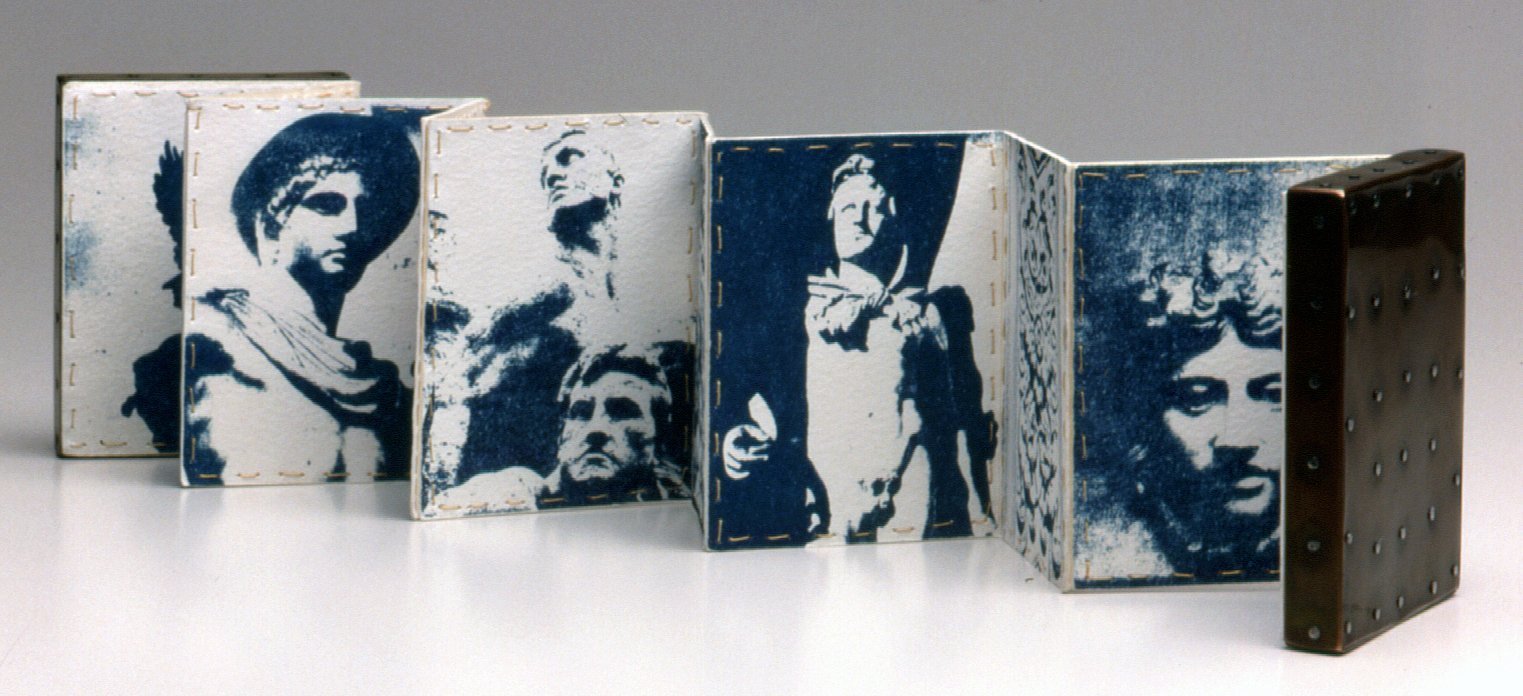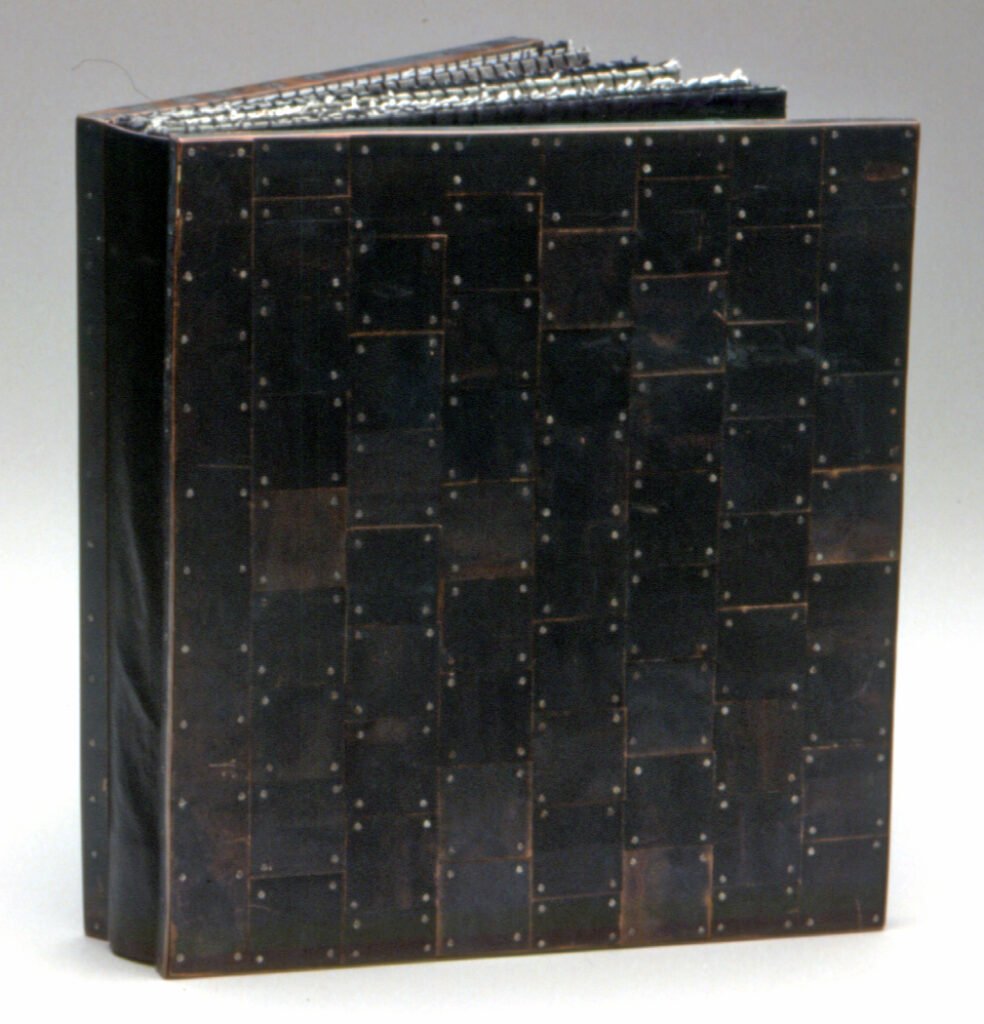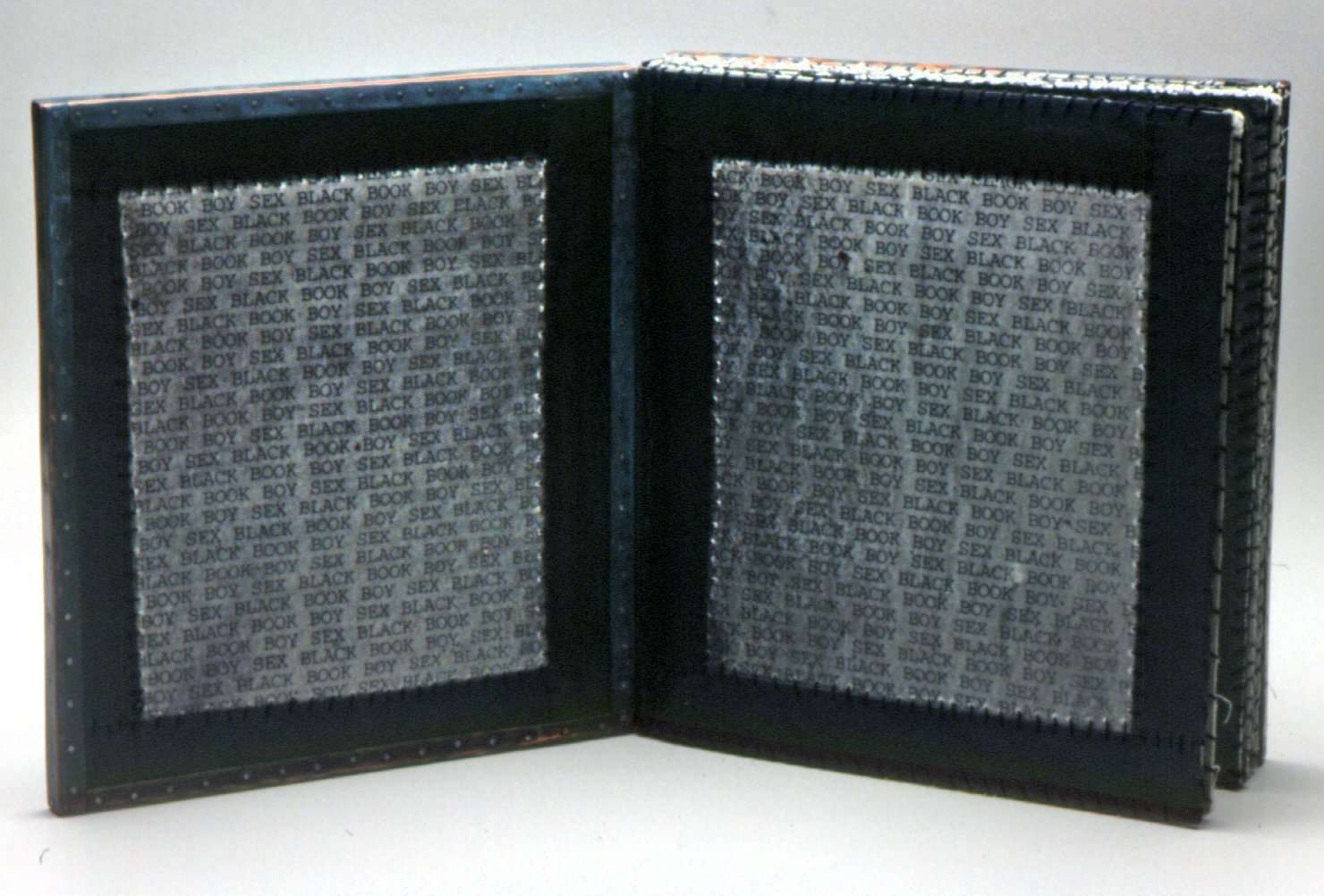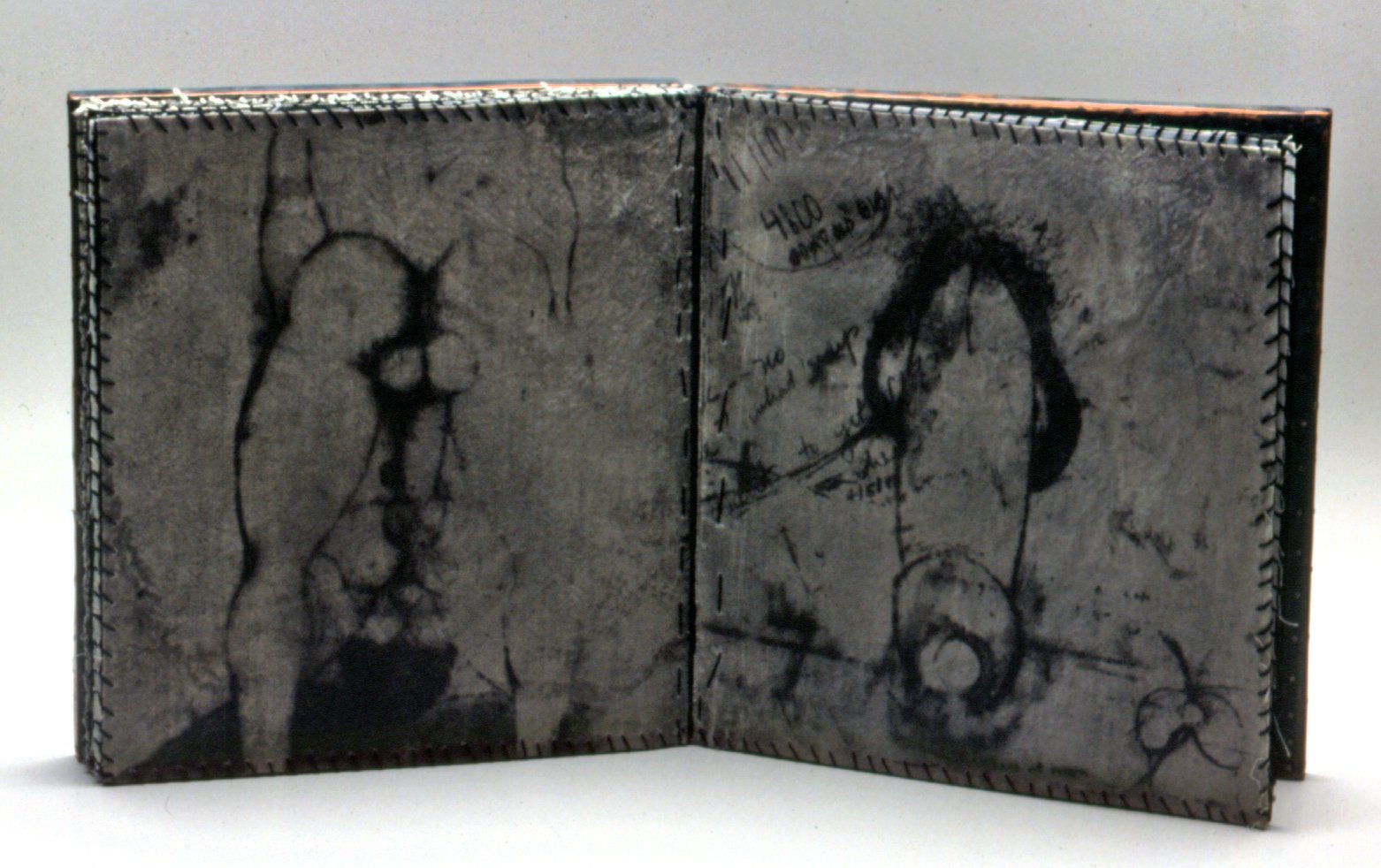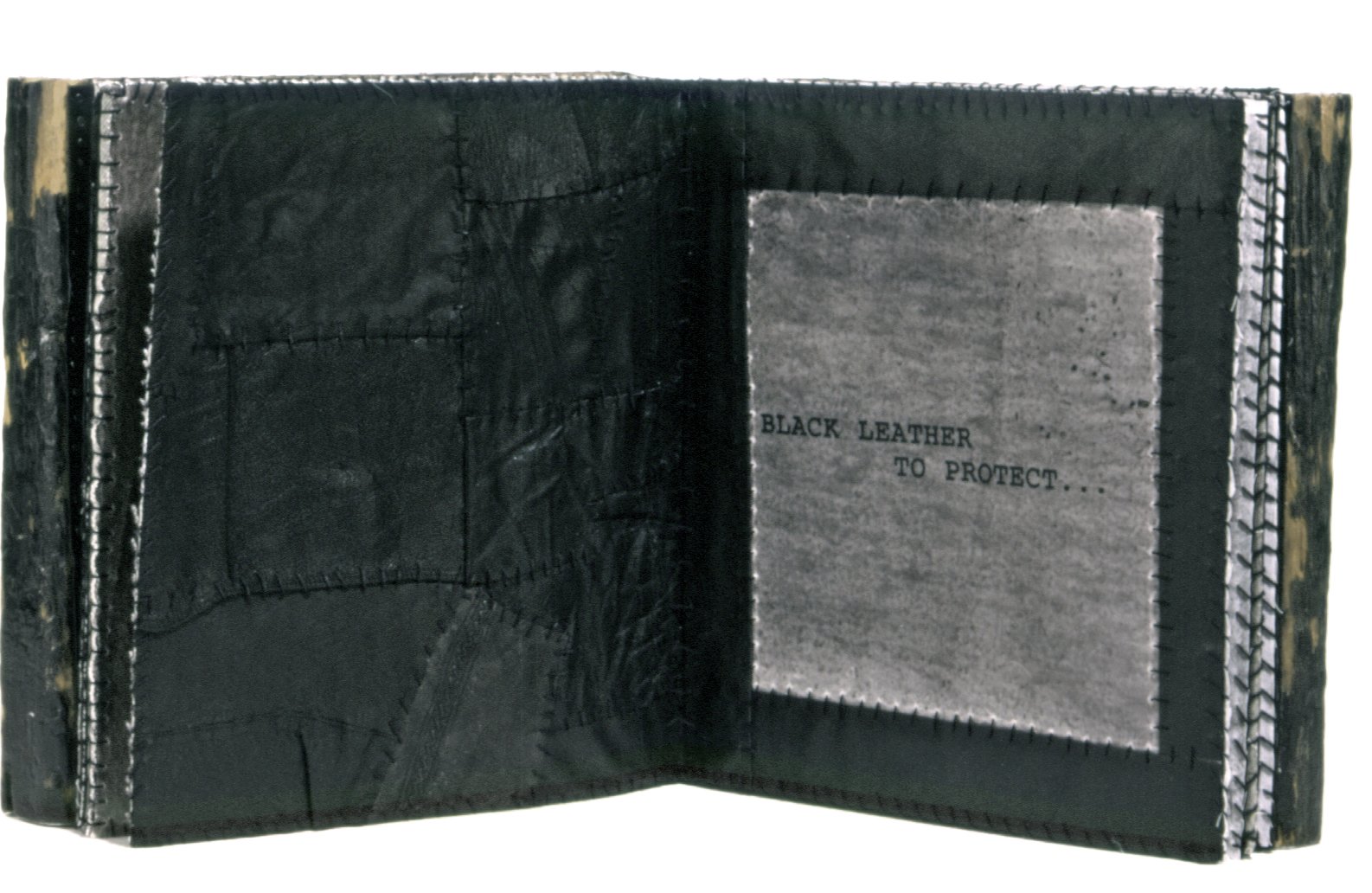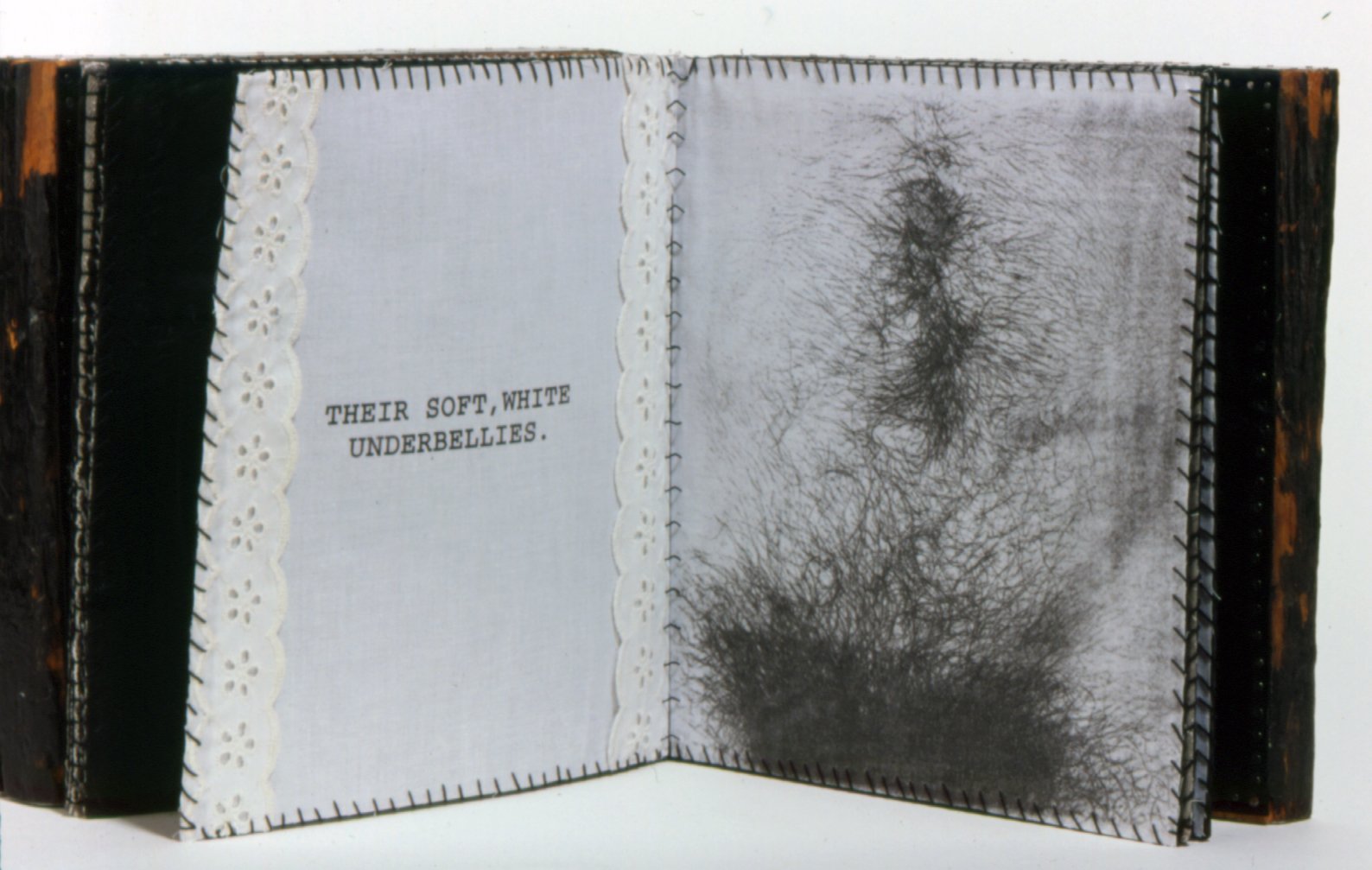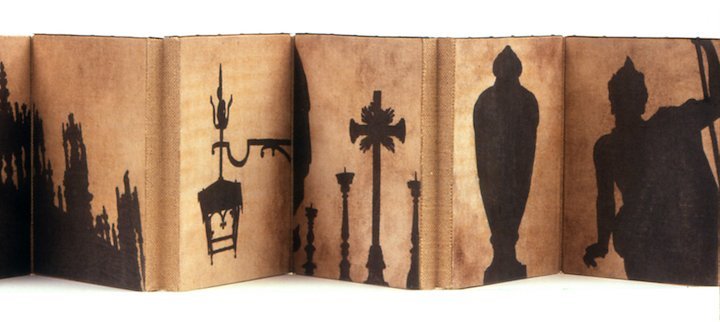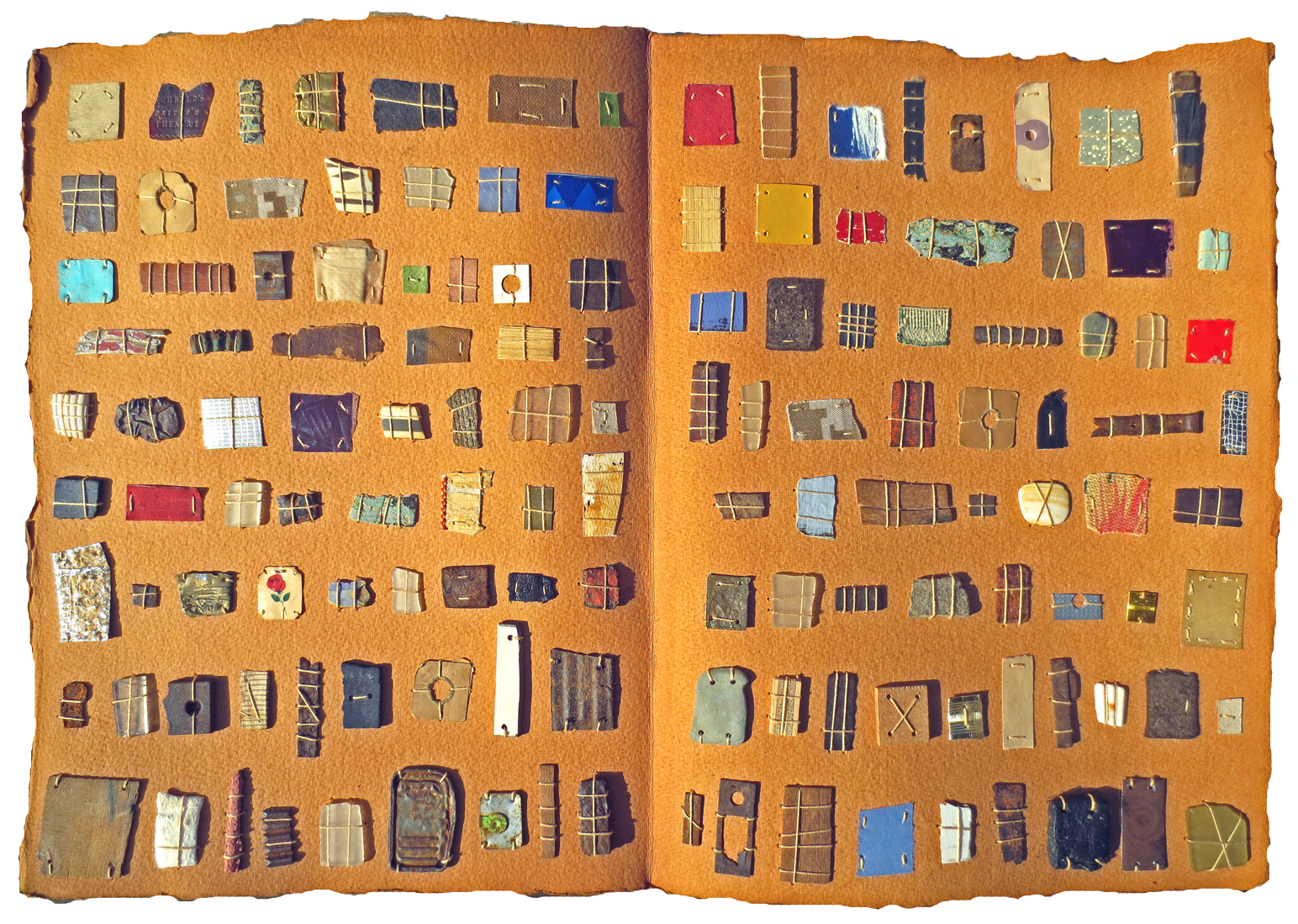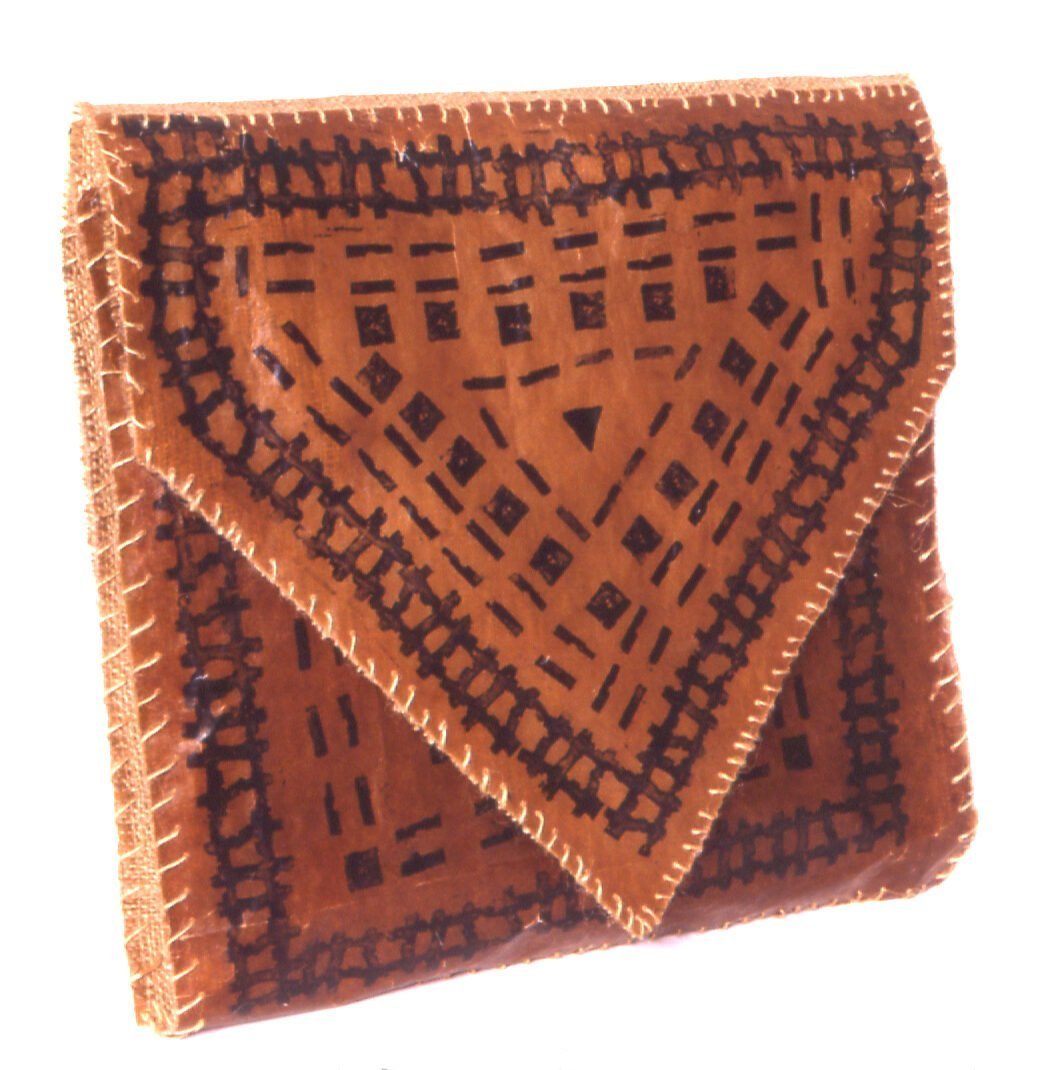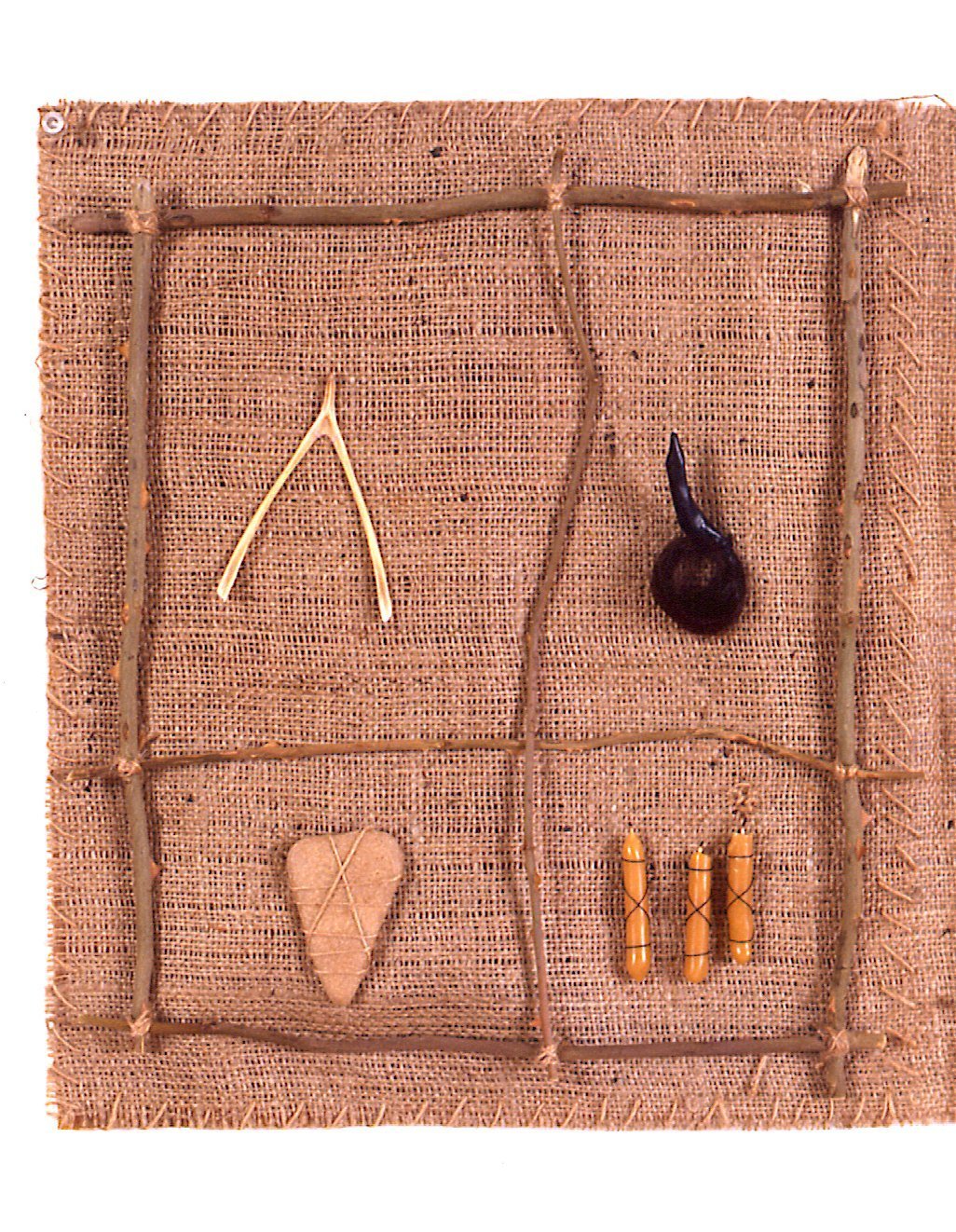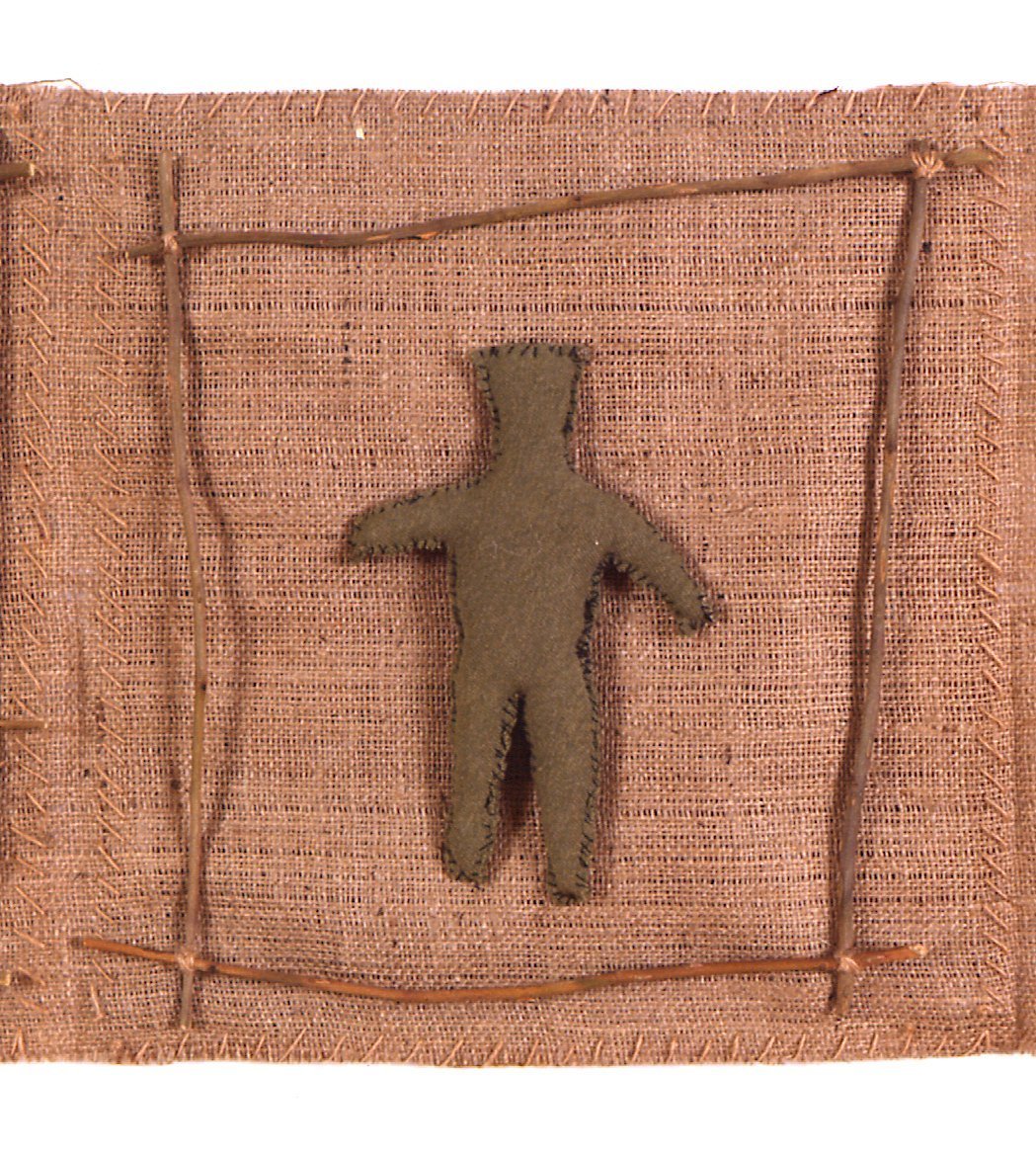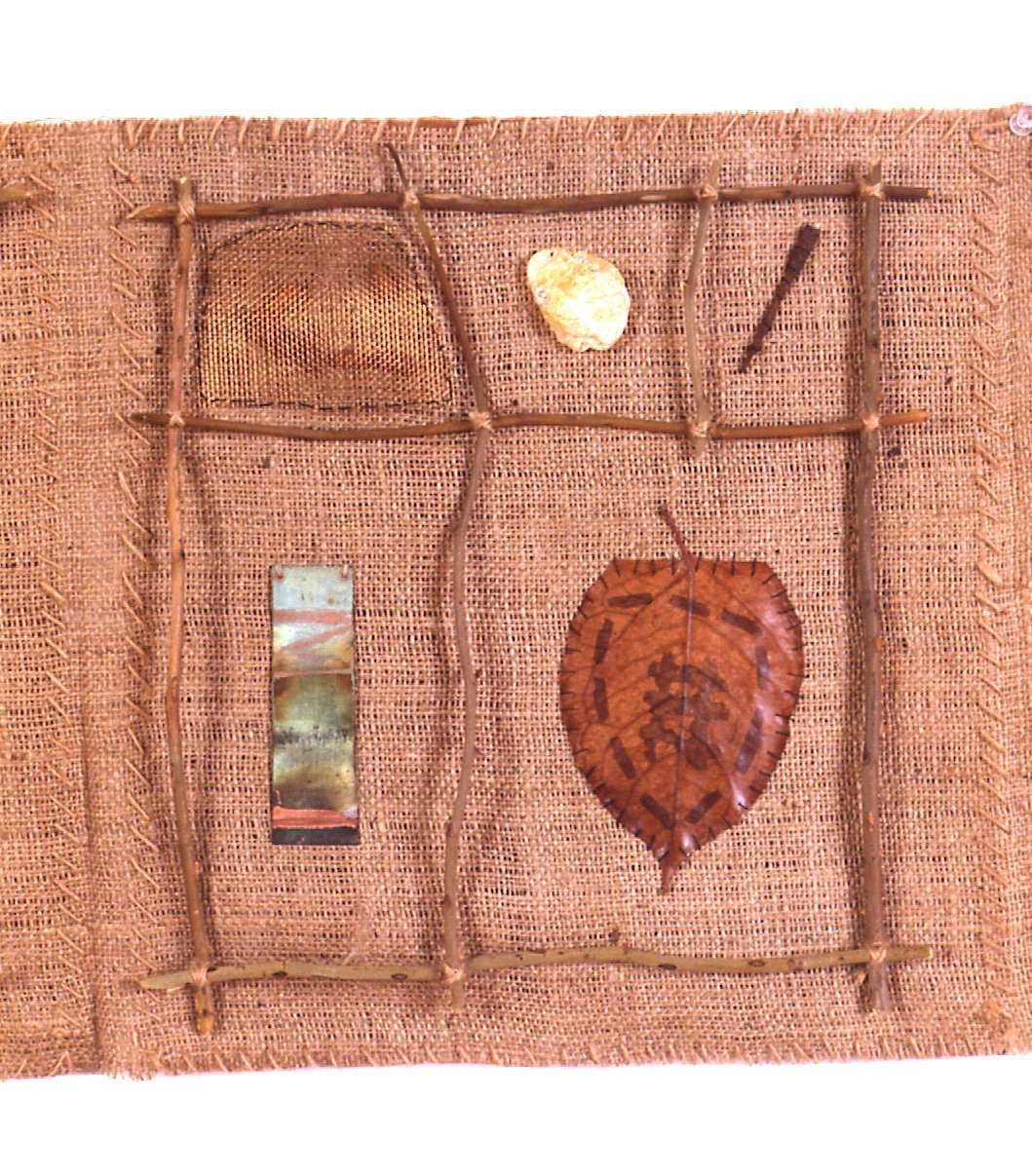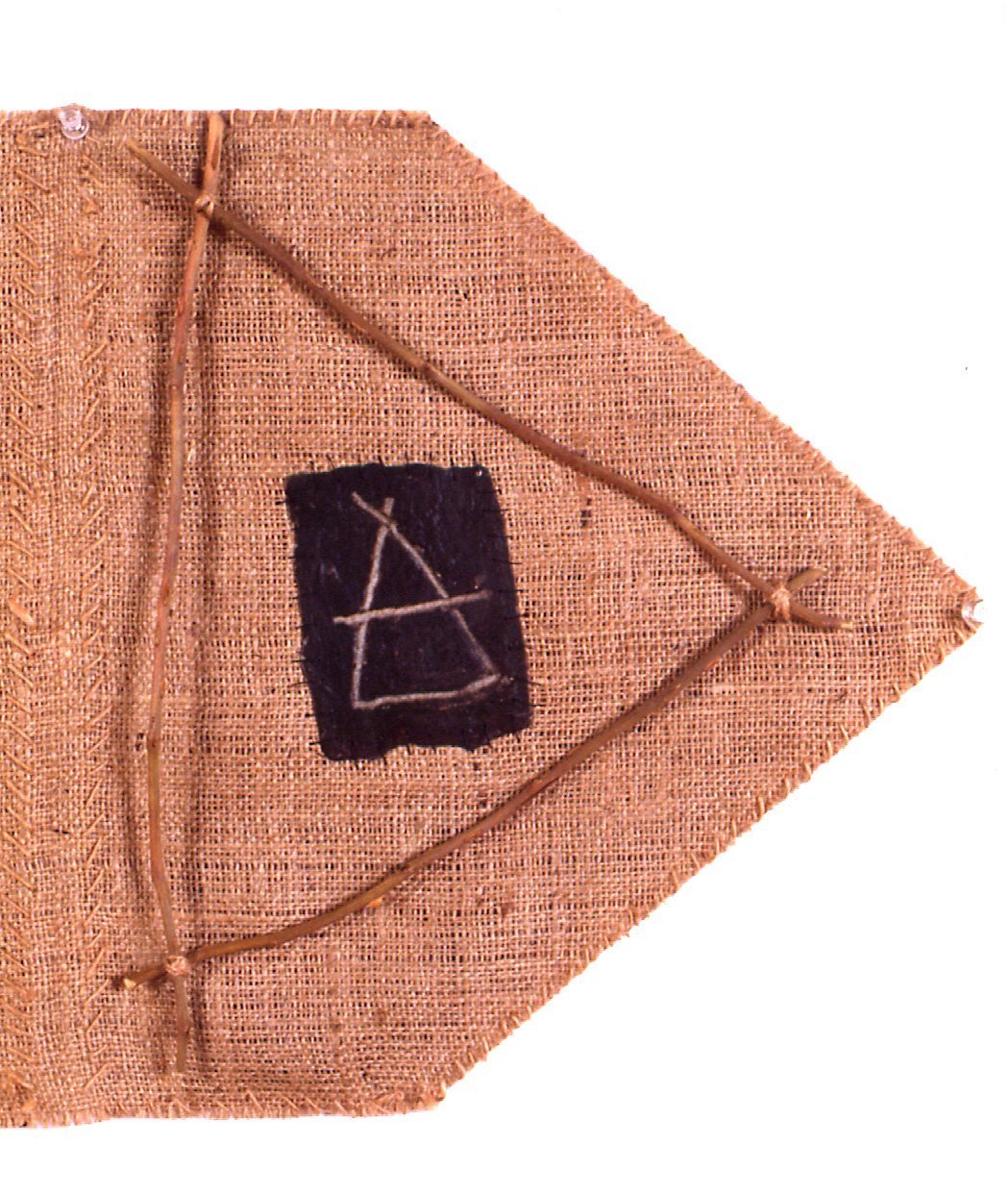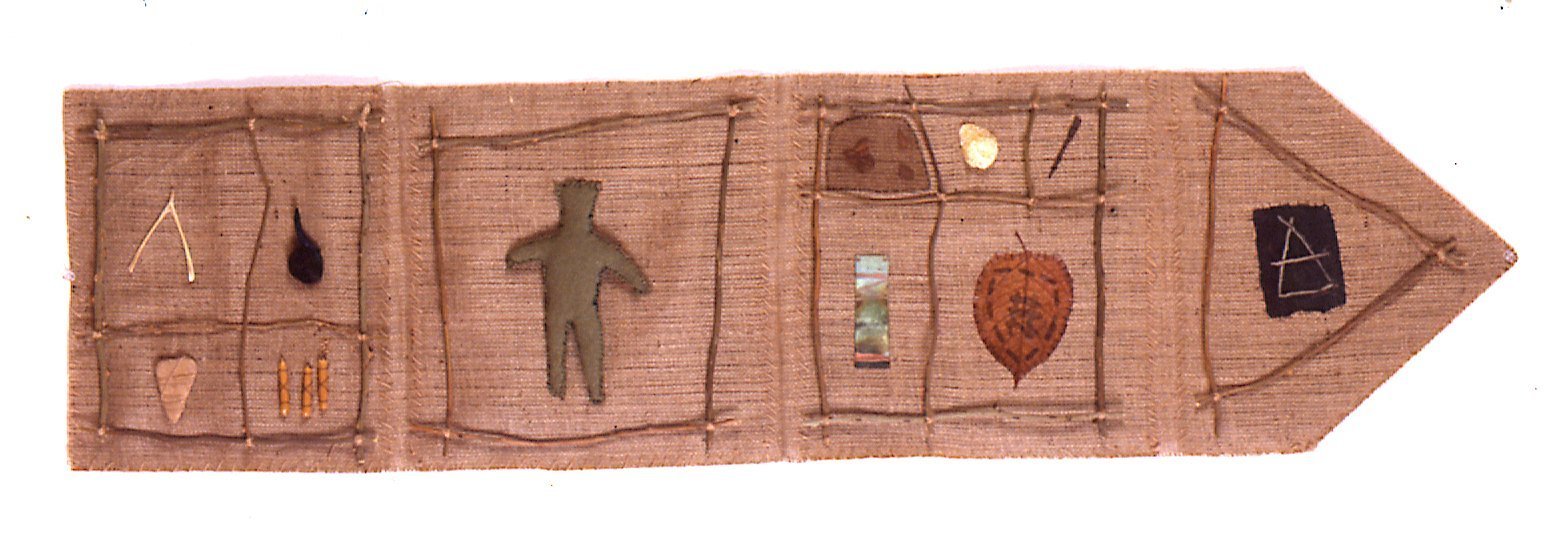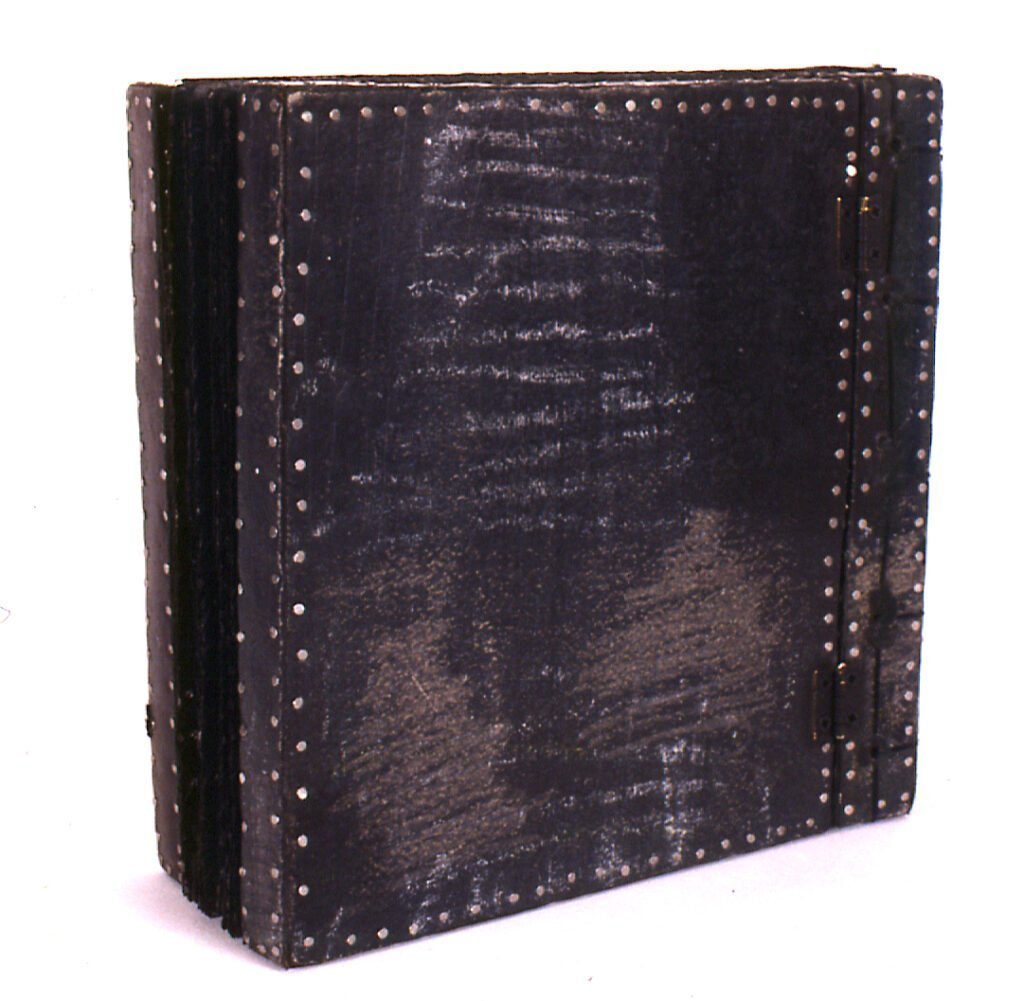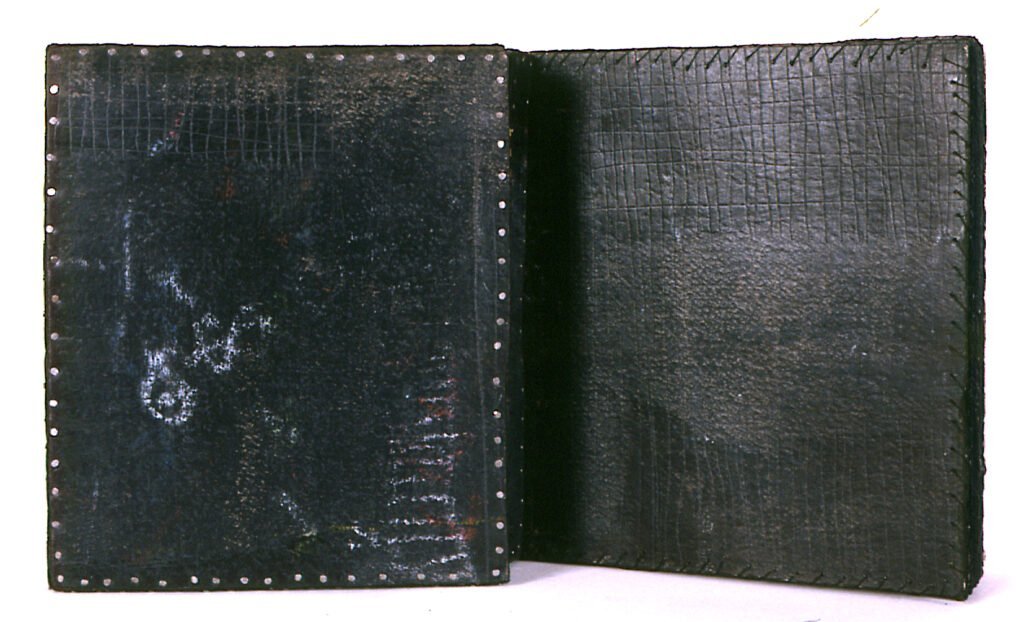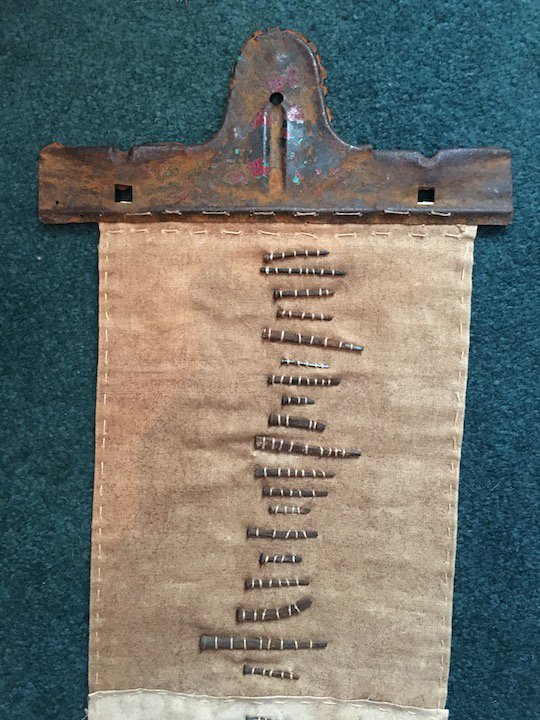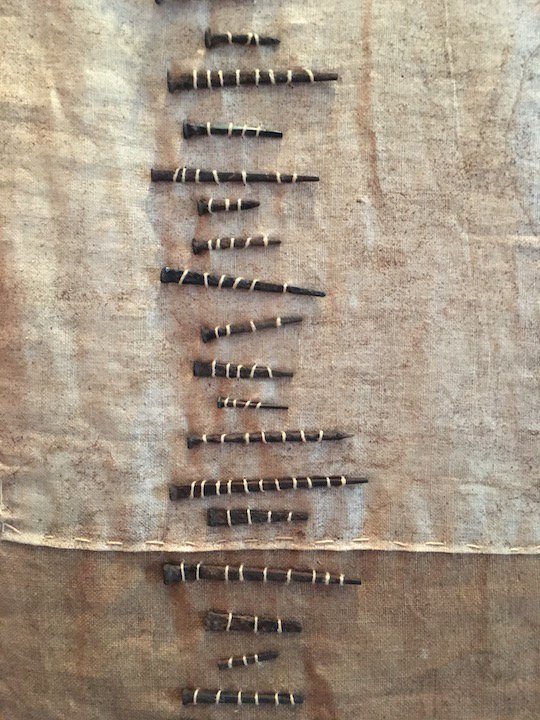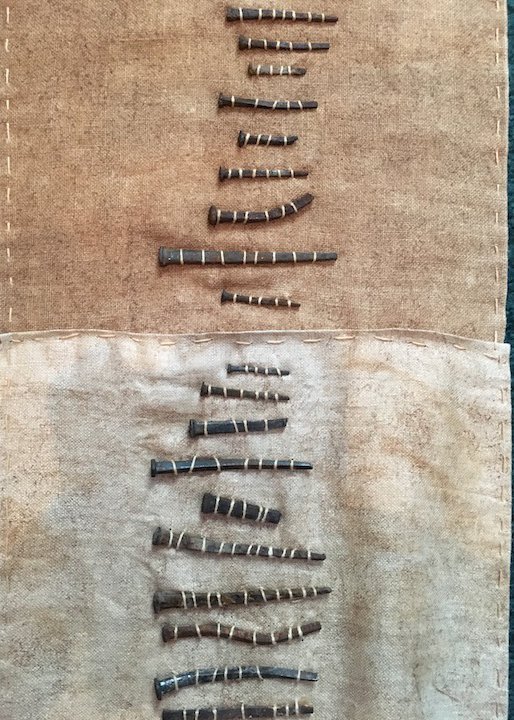When I was 14, I saw the Book of Kells at Trinity College in Dublin and knew I wanted to make one-of-a-kind labors of love. Decades later, after receiving a fellowship from the Massachusetts Cultural Council, I spent a month in Ireland, A country I will never tire of visiting and feel a strong connection to being half Irish on my father’s side. Living in a stone tower built in 1425, I began the pages and writing for this book. During a visit from my parents, I realized exactly how ill my father was with emphysema. Since much of the writing I did revolved around that, I found my journal entries very difficult to reread and never finished this book until 10 years later after my dad had passed away.
(Private Collection)
When I was 14, I saw the Book of Kells at Trinity College in Dublin and knew I wanted to make one-of-a-kind labors of love. Decades later, after receiving a fellowship from the Massachusetts Cultural Council, I spent a month in Ireland, A country I will never tire of visiting and feel a strong connection to being half Irish on my father’s side. Living in a stone tower built in 1425, I began the pages and writing for this book. During a visit from my parents, I realized exactly how ill my father was with emphysema. Since much of the writing I did revolved around that, I found my journal entries very difficult to reread and never finished this book until 10 years later after my dad had passed away.
(Private Collection)
Both volumes of Fairytales are short vignettes describing events that occurred as I was growing up and beginning to realize I wasn’t like other guys. A dear friend’s father saw one in an exhibition and said he found the stories to be more about being different and creative than sexual orientation.
Both volumes of Fairytales are short vignettes describing events that occurred as I was growing up and beginning to realize I wasn’t like other guys. A dear friend’s father saw one in an exhibition and said he found the stories to be more about being different and creative than sexual orientation.
While working on the first volume of this, I recalled many more incidences when it became abundantly clear I was not your Average Joe. And so, Fairytales II was born. At the time, I was exploring ways of making multiples of my books but having them remain very handmade. After I had gotten together all of my pictures and text, I worked with a talented graphic designer to lay out the pages in ways I wouldn’t have imagined. The laser-printed pages were then whip stitched back-to-back and bound in wood covers with copper nailed over it. I like the idea of the two books being from the same family but looking completely different.
Volume III is in the works!
While working on the first volume of this, I recalled many more incidences when it became abundantly clear I was not your Average Joe. And so, Fairytales II was born. At the time, I was exploring ways of making multiples of my books but having them remain very handmade. After I had gotten together all of my pictures and text, I worked with a talented graphic designer to lay out the pages in ways I wouldn’t have imagined. The laser-printed pages were then whip stitched back-to-back and bound in wood covers with copper nailed over it. I like the idea of the two books being from the same family but looking completely different.
Volume III is in the works!
I first visited Greece as a student spending a month on the island of Crete. As I was heading home, I was arrested because I had small packages of things I had found on the street, in the mountains and on the beach. According to the archaeologist who examined them, some were shards of Minoan pottery. I was thrown in jail but with the help of the American Embassy, quickly had a trial where I was found innocent. Assembling this book was a very cathartic experience of taking a profoundly frightening experience, doing something positive and creative with it, and being able to close the cover and put it all behind me.
I first visited Greece as a student spending a month on the island of Crete. As I was heading home, I was arrested because I had small packages of things I had found on the street, in the mountains and on the beach. According to the archaeologist who examined them, some were shards of Minoan pottery. I was thrown in jail but with the help of the American Embassy, quickly had a trial where I was found innocent. Assembling this book was a very cathartic experience of taking a profoundly frightening experience, doing something positive and creative with it, and being able to close the cover and put it all behind me.
This series of small books was inspired by the antique photographs that I collect. The covers are tintypes from the 1800s mounted on wood with my own photographs inside. Had fun taking these very stiff, formal portraits of men and stripping them down.
This series of small books was inspired by the antique photographs that I collect. The covers are tintypes from the 1800s mounted on wood with my own photographs inside. Had fun taking these very stiff, formal portraits of men and stripping them down.
A series of accordion fold books of photographs I took in Rome, printed as cyanotypes with gilded wooden covers.
A series of accordion fold books of photographs I took in Rome, printed as cyanotypes with gilded wooden covers.
“Reliquiae,” the Latin plural of the word “relic” is an ongoing series of books inspired by my parents. I was visiting them in NYC in the house where I grew up, the house where my father had grown up. Sitting at the boomerang-shaped, orange, Formica kitchen counter that had been installed during a massive renovation soon after I was born, at one point, I opened the junk drawer. Looking at the contents as I was looking at my parents across the counter it struck me that what I was looking at was a portrait of them: A few different kinds of candy, matchbooks from places they’d gone together, some dating back to the 50s, a rubber nose and glasses, an extensive collection of colored wire and paper baggy ties neatly bundled with a rubber band (my mother saved these religiously as if she would never see another one in her life. Now I do as well).
I became interested in exploring what conclusions would be drawn about a person based on what they save, value, treasure, stash.
“Reliquiae,” the Latin plural of the word “relic” is an ongoing series of books inspired by my parents. I was visiting them in NYC in the house where I grew up, the house where my father had grown up. Sitting at the boomerang-shaped, orange, Formica kitchen counter that had been installed during a massive renovation soon after I was born, at one point, I opened the junk drawer. Looking at the contents as I was looking at my parents across the counter it struck me that what I was looking at was a portrait of them: A few different kinds of candy, matchbooks from places they’d gone together, some dating back to the 50s, a rubber nose and glasses, an extensive collection of colored wire and paper baggy ties neatly bundled with a rubber band (my mother saved these religiously as if she would never see another one in her life. Now I do as well).
I became interested in exploring what conclusions would be drawn about a person based on what they save, value, treasure, stash.
This 50-pound book was made specifically for an exhibition at Boston’s Institute of Contemporary Art. It tells the tale of my brief career go-go dancing on the bar at the now-famous Pyramid Club on Manhattan’s lower Eastside. In drag. The story is based on notes I jotted down during that time. Some written on napkins and match covers, snippets of conversation, short journal entries, descriptions of the goings-on each evening, quotes, what songs were played, who was there, wearing what, high on what. The exhibition was reviewed in Art Forum. Even though the reviewer completely trashed the show, they did single out the book as one of the only saving graces.
This 50-pound book was made specifically for an exhibition at Boston’s Institute of Contemporary Art. It tells the tale of my brief career go-go dancing on the bar at the now-famous Pyramid Club on Manhattan’s lower Eastside. In drag. The story is based on notes I jotted down during that time. Some written on napkins and match covers, snippets of conversation, short journal entries, descriptions of the goings-on each evening, quotes, what songs were played, who was there, wearing what, high on what. The exhibition was reviewed in Art Forum. Even though the reviewer completely trashed the show, they did single out the book as one of the only saving graces.
Misguided Angels and Memeto Mori are one-of-a-kind collections of tombstone rubbings I did in Ireland printed then on fabric and bound into 2 books with covers made from salvaged slate roof tiles which referred to the shape of the stones, echoing the shape of the stones.
Misguided Angels and Memeto Mori are one-of-a-kind collections of tombstone rubbings I did in Ireland printed then on fabric and bound into 2 books with covers made from salvaged slate roof tiles which referred to the shape of the stones, echoing the shape of the stones.
This story is about a tumultuous, doomed affair with a nurse. I was working on it around the holiday season and found myself in an elevator surrounded by a Muzak version of the Christmas song, “Oh, Come Let Us Adore Him.” With the repetition of the song’s title, I had it on constant replay in my mind and realized it was a perfect title for a book about a man I had up on a pedestal. The all-white book was completed just in time for the opening of an exhibition I had in New Orleans. In addition to the relationship, the book was apparently also doomed; a guy spilled red wine all over it at the opening reception.
This story is about a tumultuous, doomed affair with a nurse. I was working on it around the holiday season and found myself in an elevator surrounded by a Muzak version of the Christmas song, “Oh, Come Let Us Adore Him.” With the repetition of the song’s title, I had it on constant replay in my mind and realized it was a perfect title for a book about a man I had up on a pedestal. The all-white book was completed just in time for the opening of an exhibition I had in New Orleans. In addition to the relationship, the book was apparently also doomed; a guy spilled red wine all over it at the opening reception.
I adored my maternal grandmother and was devastated that she suddenly passed away when I was 21. I had never lost anyone who was close to me and found myself lost as well.
This book was a means of taking a bad experience, over which I had no control, and doing something concrete and positive with it. The book begins with some intricate crocheting she had done in the early 1900s, continues to portraits of she and her husband with a dried, waxed leaf in the shape of a heart sewn to the panel between them and spans her entire life ending with a rubbing of her grave stone.
I adored my maternal grandmother and was devastated that she suddenly passed away when I was 21. I had never lost anyone who was close to me and found myself lost as well.
This book was a means of taking a bad experience, over which I had no control, and doing something concrete and positive with it. The book begins with some intricate crocheting she had done in the early 1900s, continues to portraits of she and her husband with a dried, waxed leaf in the shape of a heart sewn to the panel between them and spans her entire life ending with a rubbing of her grave stone.
This slate-covered book is a collection of various plants in my garden in Boston. The embossing, silhouettes and Cyanotypes, all shadows. Having spent half my life in Manhattan, I find the simplest things in nature fascinating.
(Collection of Bowdoin College)
This slate-covered book is a collection of various plants in my garden in Boston. The embossing, silhouettes and Cyanotypes, all shadows. Having spent half my life in Manhattan, I find the simplest things in nature fascinating.
(Collection of Bowdoin College)
Like “Garden Shadows” this little book is a exploration and celebration of what I find when digging in the dirt.
The images are tannic acid dyed cyanotypes types stitched back to back. Covers are wood with a print on cotton mounted over them, copper edging and a linen spine.
Like “Garden Shadows” this little book is a exploration and celebration of what I find when digging in the dirt.
The images are tannic acid dyed cyanotypes types stitched back to back. Covers are wood with a print on cotton mounted over them, copper edging and a linen spine.
I received a very generous fellowship from the Massachusetts Cultural Council and chose to use part of it for a month-long trip to Ireland. Dear friends in New York City owned an Elizabethan fortification tower, named Ballyportry, in the tiny town of Corofin on the West Coast of Ireland. A relative of theirs had purchased the ruins in the 1960s and spent the rest of his life restoring it, and they were kind enough to allow me to stay there alone for a month. Although I’d seen many pictures of it, when it first came in to view, soaring over a patchwork of green farms and fields, it took my breath away.
Even though it was June, I had to build a fire in the massive fireplace on the first floor each day since the thick stone walls held the cold. I was burning peat logs (dried, partially decayed, wetland vegetation) and, with the help of a simple paste made of flour and water, began making some “drawings” with the leftover, crumbled peat, a rich dark, burnt umber, as well as the light-colored ash from the fireplace.
Even though this large (4’x7’) sewn wall hanging is two dimensional, it was conceived of as a visual journal representing either something that I saw, did or had on my mind that day, so I consider it a book…a book, flattened out.
I received a very generous fellowship from the Massachusetts Cultural Council and chose to use part of it for a month-long trip to Ireland. Dear friends in New York City owned an Elizabethan fortification tower, named Ballyportry, in the tiny town of Corofin on the West Coast of Ireland. A relative of theirs had purchased the ruins in the 1960s and spent the rest of his life restoring it, and they were kind enough to allow me to stay there alone for a month. Although I’d seen many pictures of it, when it first came in to view, soaring over a patchwork of green farms and fields, it took my breath away.
Even though it was June, I had to build a fire in the massive fireplace on the first floor each day since the thick stone walls held the cold. I was burning peat logs (dried, partially decayed, wetland vegetation) and, with the help of a simple paste made of flour and water, began making some “drawings” with the leftover, crumbled peat, a rich dark, burnt umber, as well as the light-colored ash from the fireplace.
Even though this large (4’x7’) sewn wall hanging is two dimensional, it was conceived of as a visual journal representing either something that I saw, did or had on my mind that day, so I consider it a book…a book, flattened out.
This is the first in an ongoing series I began in 1989. As artist, I believe that we are all innately drawn to certain color palettes, materials, subject matter, processes, and formats. I have loved scrap metal since I was a kid and, in my studio, my fines are cleaned, categorized, and sorted, boxed, and labeled much to the amusement of my friends were not artists.
At the time I began the series, I was studying art from Africa and was impressed by the beauty of objects fashioned from raw, unrefined materials. Inspired by that spirit, the covers are made of well-weathered wood I found on the street, the pages are burlap with the metal sewn onto them and backed with pieces of brown paper bag to conceal the stitching. The entire book is bound with packing twine the tips of which were dipped in beeswax to prevent them from fraying. During the waxing, I managed to set the entire book on fire, but that’s a story for another day…
(In the collection of The Houghton Library, Harvard University, Cambridge, MA)
This is the first in an ongoing series I began in 1989. As artist, I believe that we are all innately drawn to certain color palettes, materials, subject matter, processes, and formats. I have loved scrap metal since I was a kid and, in my studio, my fines are cleaned, categorized, and sorted, boxed, and labeled much to the amusement of my friends were not artists.
At the time I began the series, I was studying art from Africa and was impressed by the beauty of objects fashioned from raw, unrefined materials. Inspired by that spirit, the covers are made of well-weathered wood I found on the street, the pages are burlap with the metal sewn onto them and backed with pieces of brown paper bag to conceal the stitching. The entire book is bound with packing twine the tips of which were dipped in beeswax to prevent them from fraying. During the waxing, I managed to set the entire book on fire, but that’s a story for another day…
(In the collection of The Houghton Library, Harvard University, Cambridge, MA)
I’ll often give myself homework so my challenge in making this book was to tell a story using no words. The book is all about the materials: handmade paper, gauze, oxidized copper, scraps of an antique circus banner, part of a potato sack, brown paper bags, stuff like that. I was very pleased the first time I included this book in an exhibition because folks who knew me – Friends, students, colleagues, collectors, said it was like going to my house or having a conversation with me.
I’ll often give myself homework so my challenge in making this book was to tell a story using no words. The book is all about the materials: handmade paper, gauze, oxidized copper, scraps of an antique circus banner, part of a potato sack, brown paper bags, stuff like that. I was very pleased the first time I included this book in an exhibition because folks who knew me – Friends, students, colleagues, collectors, said it was like going to my house or having a conversation with me.
A very large book containing some favorite pieces from my collection of scrap metal. The cover is a salvaged, painted, wooden cabinet door with some of its original rusted hardware. Aside from a simple cut that was necessary to bind it, I didn’t want to alter it at all, so the entire book it was made to the scale of the cover.
(Public collection, Nashville, TN)
A very large book containing some favorite pieces from my collection of scrap metal. The cover is a salvaged, painted, wooden cabinet door with some of its original rusted hardware. Aside from a simple cut that was necessary to bind it, I didn’t want to alter it at all, so the entire book it was made to the scale of the cover.
(Public collection, Nashville, TN)
This little book began with a scrap of metal I found on the street that was a perfect half-heart shape.
With a piece of a wire hanger soldered to it, I completed the heart. This is the image on the cover and on one of the pages.
The other images are:
A gravestone rubbing from Ireland
A carved wine cork
A Victorian diagram
A rubbing of a religious metal
A Mexican Milagro
A dried, pressed leaf
A metal Ex Voto from Italy
The covers are wood with the image printed on fabric and copper along the edges. The prints are tannic acid dyed Cyanotypes.
(Private Collection, Columbia, South Carolina)
This little book began with a scrap of metal I found on the street that was a perfect half-heart shape.
With a piece of a wire hanger soldered to it, I completed the heart. This is the image on the cover and on one of the pages.
The other images are:
A gravestone rubbing from Ireland
A carved wine cork
A Victorian diagram
A rubbing of a religious metal
A Mexican Milagro
A dried, pressed leaf
A metal Ex Voto from Italy
The covers are wood with the image printed on fabric and copper along the edges. The prints are tannic acid dyed Cyanotypes.
(Private Collection, Columbia, South Carolina)
These are rubbings that I did of rocks on a beach in Greece. I had just lost my father a few weeks before then received word that my mother had a clog in one of the arteries her heart. When I looked over all the rubbings I had done, they all seemed to be organ-shaped. Wish I had chosen a different title since I think this one sounds like a bad Stevie Nicks song. But, to quote a student of mine, “there is no such thing”.
These are rubbings that I did of rocks on a beach in Greece. I had just lost my father a few weeks before then received word that my mother had a clog in one of the arteries her heart. When I looked over all the rubbings I had done, they all seemed to be organ-shaped. Wish I had chosen a different title since I think this one sounds like a bad Stevie Nicks song. But, to quote a student of mine, “there is no such thing”.
Many of my ideas and much of my inspiration stems from the materials I collect. I had a cigar box full of Victoriana that I had been saving since, easily, the late 70s. A Daguerrotype of a young woman sparked an imaginary story of her life told through single lines of text all beginning with, “She was…”
“She was a perfect little girl”
“She was fond of her garden”
“She was prone to nightmares”
The covers are copper and wood with the Daguerrotype attached.
(Collection of the Duxbury Art Complex Museum, Duxbury, MA)
Many of my ideas and much of my inspiration stems from the materials I collect. I had a cigar box full of Victoriana that I had been saving since, easily, the late 70s. A Daguerrotype of a young woman sparked an imaginary story of her life told through single lines of text all beginning with, “She was…”
“She was a perfect little girl”
“She was fond of her garden”
“She was prone to nightmares”
The covers are copper and wood with the Daguerrotype attached.
(Collection of the Duxbury Art Complex Museum, Duxbury, MA)
I often reuse images that I’m particularly fond of in different ways.
This small (4” inch high) accordion fold book is composed of cyanotypes done from photographs I took in Rome and Florence. I’ve used some of the same negatives for larger prints, silhouettes, and my, “stone photographs.”
I often reuse images that I’m particularly fond of in different ways.
This small (4” inch high) accordion fold book is composed of cyanotypes done from photographs I took in Rome and Florence. I’ve used some of the same negatives for larger prints, silhouettes, and my, “stone photographs.”
Heavy black wooden covers hinged with leather house pages with images of the darker side of pre-AIDS sex in New York City.
Heavy black wooden covers hinged with leather house pages with images of the darker side of pre-AIDS sex in New York City.
Silhouettes inspired by the dramatic lighting in the piazzas in Rome at night. Images are transferred onto cotton, dyed with coffee grounds, mounted over wood and hinged with strips of linen.
The first time that I visited Rome, I was struck by the dramatic lighting in some of the piazzas that resulted in intriguing silhouettes and shadows. I photographed them extensively during my stay and used them as a reference for the silhouettes in this accordion fold book. They are printed on muslin, tinted with coffee grounds, mounted on wood and hinged with strips of linen.
(Private Collection, Cape Cod, MA)
Silhouettes inspired by the dramatic lighting in the piazzas in Rome at night. Images are transferred onto cotton, dyed with coffee grounds, mounted over wood and hinged with strips of linen.
The first time that I visited Rome, I was struck by the dramatic lighting in some of the piazzas that resulted in intriguing silhouettes and shadows. I photographed them extensively during my stay and used them as a reference for the silhouettes in this accordion fold book. They are printed on muslin, tinted with coffee grounds, mounted on wood and hinged with strips of linen.
(Private Collection, Cape Cod, MA)
With my artists books, I’ve always enjoyed using elements of traditional book bindings in playful or decorative ways. The same goes with the titles of various kinds of books. This is the first and an ongoing series of simple, two panel diptychs onto which I stitch small objects and scraps of various materials in my home, classroom and studio.
(Private Collection, Boston, MA)
With my artists books, I’ve always enjoyed using elements of traditional book bindings in playful or decorative ways. The same goes with the titles of various kinds of books. This is the first and an ongoing series of simple, two panel diptychs onto which I stitch small objects and scraps of various materials in my home, classroom and studio.
(Private Collection, Boston, MA)
I’m a huge fan of medieval history, a time when books inscribed, embellished, gilded by hand on vellum (animal skin) were valuable, prized possessions. Many had a bag or satchel made specifically for them so that they could easily and safely be packed up and transported up in a hurry if need be. The notion of having your most prized possessions be easily portable appealed to me and was the inspiration for this piece.
The folded, “envelope” structure is a large version of tiny, pocket-size portable shrines I found in Mexico.
The exterior is patterns made from carved bottle corks printed on brown paper bag, waxed, and sewn to burlap. Inside are objects I either found or made that represent aspects of my life that were meaningful at that time. A wishbone, a lock of my love’s hair, a triangular stone from Greece, three small beeswax candles, a sewn “Gris Gris” doll stuffed with remnants of a broken friendship, all of pets under a copper mesh window, a pearlescent seashell, a rusty nail, a piece of oxidized copper, a dried pressed leaf printed on, waxed, and stitched in, a drawing on paper done with dark earth. The objects are separated by dried stems from roses.
I’m a huge fan of medieval history, a time when books inscribed, embellished, gilded by hand on vellum (animal skin) were valuable, prized possessions. Many had a bag or satchel made specifically for them so that they could easily and safely be packed up and transported up in a hurry if need be. The notion of having your most prized possessions be easily portable appealed to me and was the inspiration for this piece.
The folded, “envelope” structure is a large version of tiny, pocket-size portable shrines I found in Mexico.
The exterior is patterns made from carved bottle corks printed on brown paper bag, waxed, and sewn to burlap. Inside are objects I either found or made that represent aspects of my life that were meaningful at that time. A wishbone, a lock of my love’s hair, a triangular stone from Greece, three small beeswax candles, a sewn “Gris Gris” doll stuffed with remnants of a broken friendship, all of pets under a copper mesh window, a pearlescent seashell, a rusty nail, a piece of oxidized copper, a dried pressed leaf printed on, waxed, and stitched in, a drawing on paper done with dark earth. The objects are separated by dried stems from roses.
This was originally a large drawing (Approximately 6‘ x 3‘) on paper done with oil paint and wax. After a critique with my painting teacher, he ended our meeting with, “Now destroy it.” I had just completed it. The supplies were expensive for me as a student, and I was very pleased with it but trusted his guidance. I went at the drawing with steel wool, various tools to scratch/etch and turpentine.
I hadn’t yet completely moved out of my parents’ house in Greenwich Village and had recently visited to dig through what I still had stored in the basement. I would often find myself down there searching for something but not certain exactly what it was. Going through a large, black steamer trunk I came across possessions I had forgotten about completely, some I had a very different memory of and others that I recalled exactly.
Thinking about memories that fade or become vague, those that are permanently etched in and what I learned in school on chalkboards that were erased, I cut the large drawing up and made it into this book. Reminiscent of both a chalkboard and a steamer trunk, it was much more successful as a book than it was as a drawing!
This was originally a large drawing (Approximately 6‘ x 3‘) on paper done with oil paint and wax. After a critique with my painting teacher, he ended our meeting with, “Now destroy it.” I had just completed it. The supplies were expensive for me as a student, and I was very pleased with it but trusted his guidance. I went at the drawing with steel wool, various tools to scratch/etch and turpentine.
I hadn’t yet completely moved out of my parents’ house in Greenwich Village and had recently visited to dig through what I still had stored in the basement. I would often find myself down there searching for something but not certain exactly what it was. Going through a large, black steamer trunk I came across possessions I had forgotten about completely, some I had a very different memory of and others that I recalled exactly.
Thinking about memories that fade or become vague, those that are permanently etched in and what I learned in school on chalkboards that were erased, I cut the large drawing up and made it into this book. Reminiscent of both a chalkboard and a steamer trunk, it was much more successful as a book than it was as a drawing!
When I began making books in my mid-20s, the soley text-based work of artists like Jenny Holzer and and Barbara Kruger was everywhere. I realized how powerful words could be, and it terrified me. At that point in my life, I was not yet ready to reveal much of myself, bare my soul and make my life an “open book”. I was also looking at every artist’s book I could and found that “books” did not necessarily have to include text. Or representational illustrations. The first dozen or so books that I completed were purely visual; no words, maybe a bit of “found text, “ but always alluding to the look of text on a page, the alphabet, hand writing or paragraphs/blocks of text. When I realized that I did indeed have complete control over how much I was revealing, I became comfortable using my own, often highly personal, writing. The freedom of working in a genre where there really are no rules has allowed me to continue exploring both. This recent scroll of antique, hand-cut nails sewn on fabric references lines of text.
(Collection of The Museum of Fine Arts, Boston/Tufts )
When I began making books in my mid-20s, the soley text-based work of artists like Jenny Holzer and and Barbara Kruger was everywhere. I realized how powerful words could be, and it terrified me.
At that point in my life, I was not yet ready to reveal much of myself, bare my soul and make my life an “open book”. I was also looking at every artist’s book I could and found that “books” did not necessarily have to include text. Or representational illustrations. The first dozen or so books that I completed were purely visual; no words, maybe a bit of “found text, “ but always alluding to the look of text on a page, the alphabet, hand writing or paragraphs/blocks of text. When I realized that I did indeed have complete control over how much I was revealing, I became comfortable using my own, often highly personal, writing. The freedom of working in a genre where there really are no rules has allowed me to continue exploring both. This recent scroll of antique, hand-cut nails sewn on fabric references lines of text.
(Collection of The Museum of Fine Arts, Boston/Tufts)
